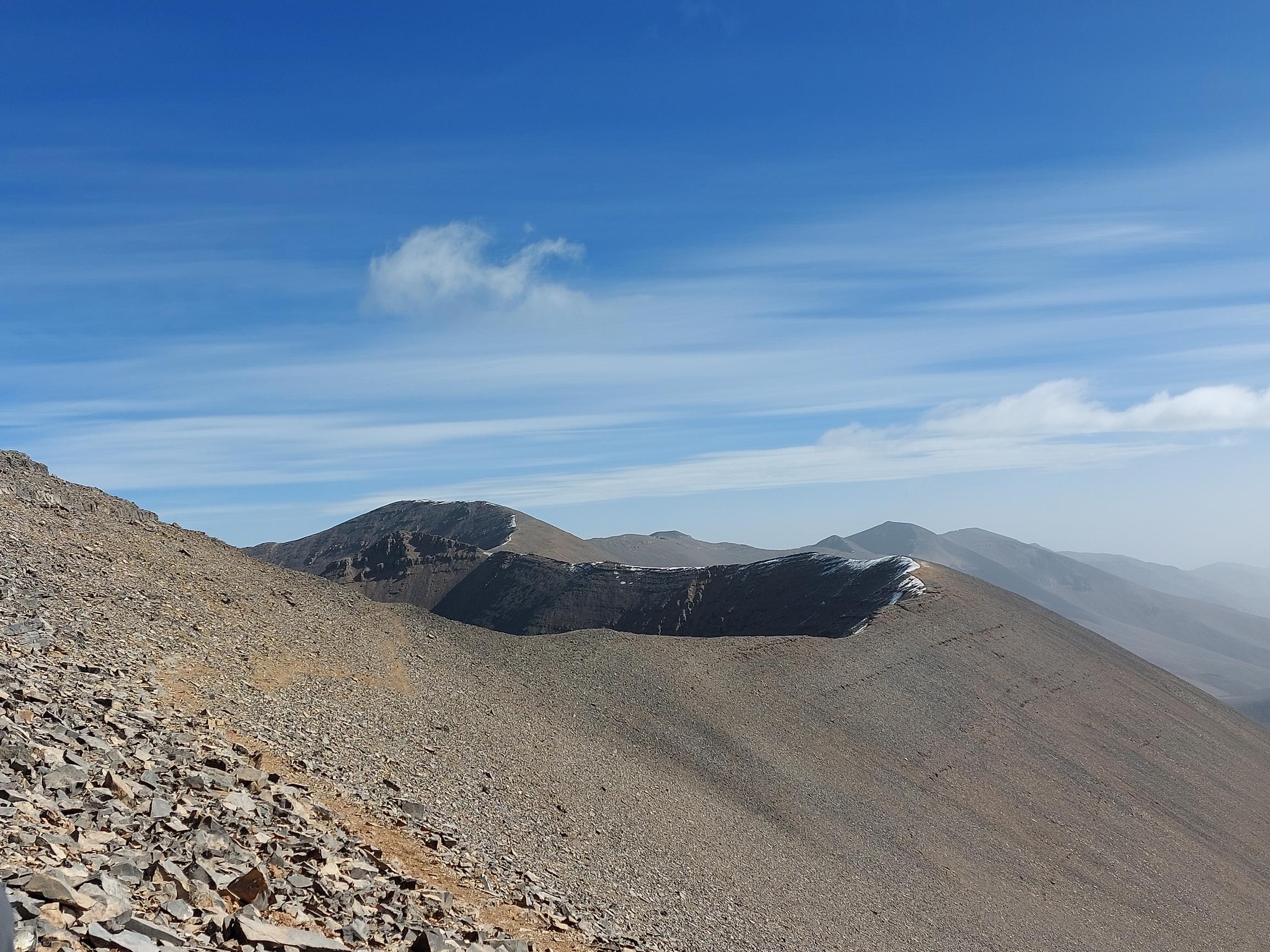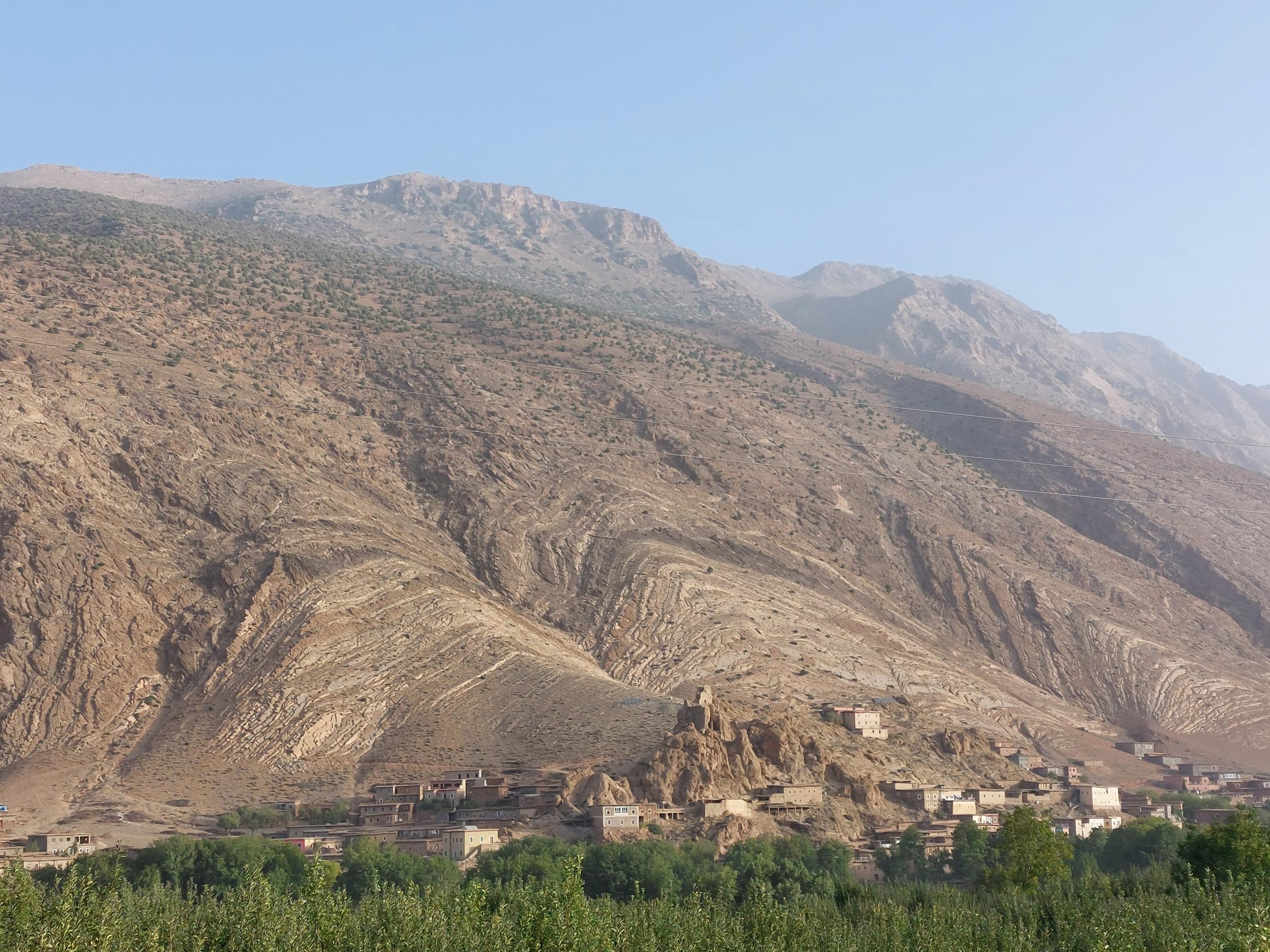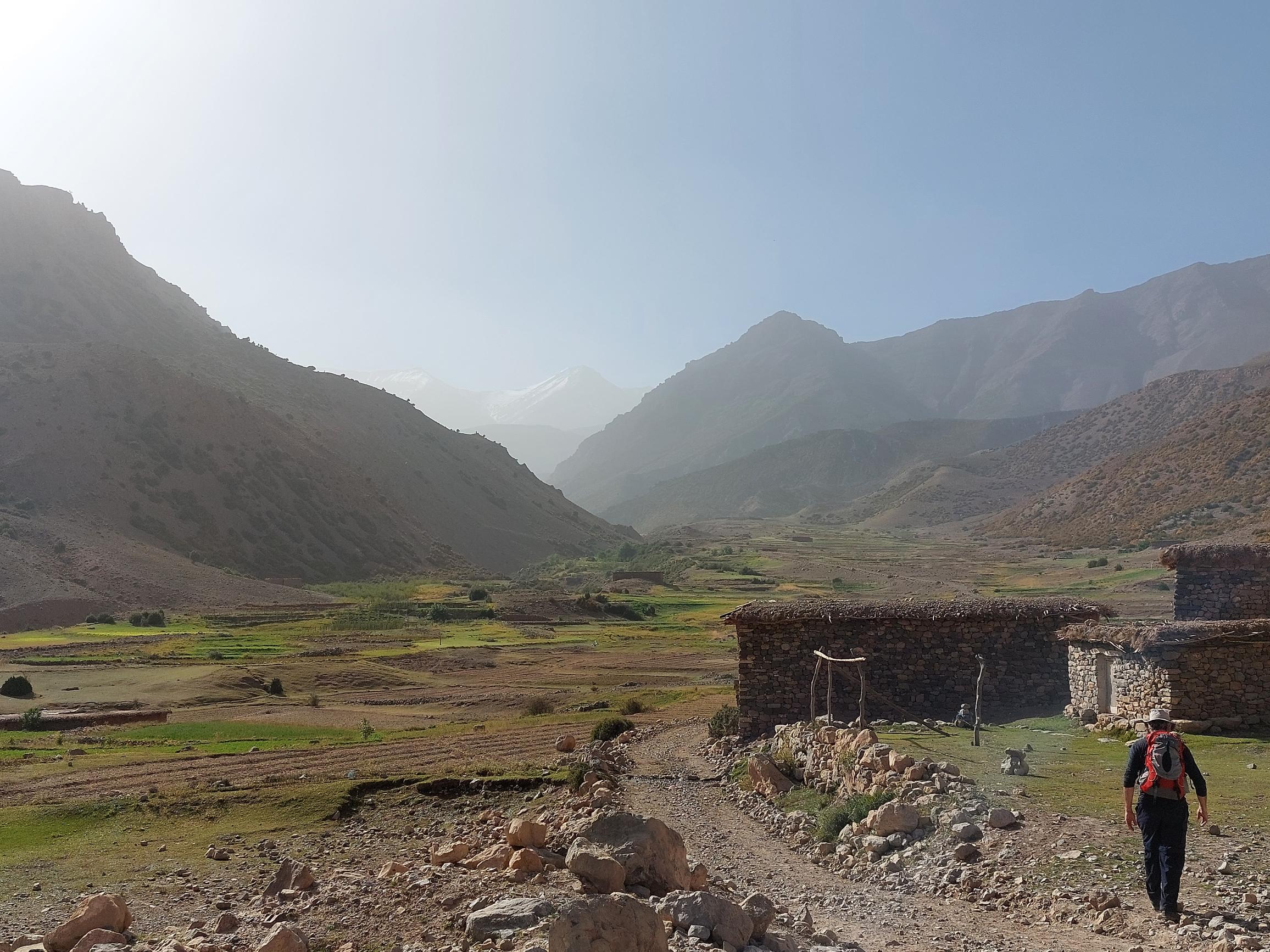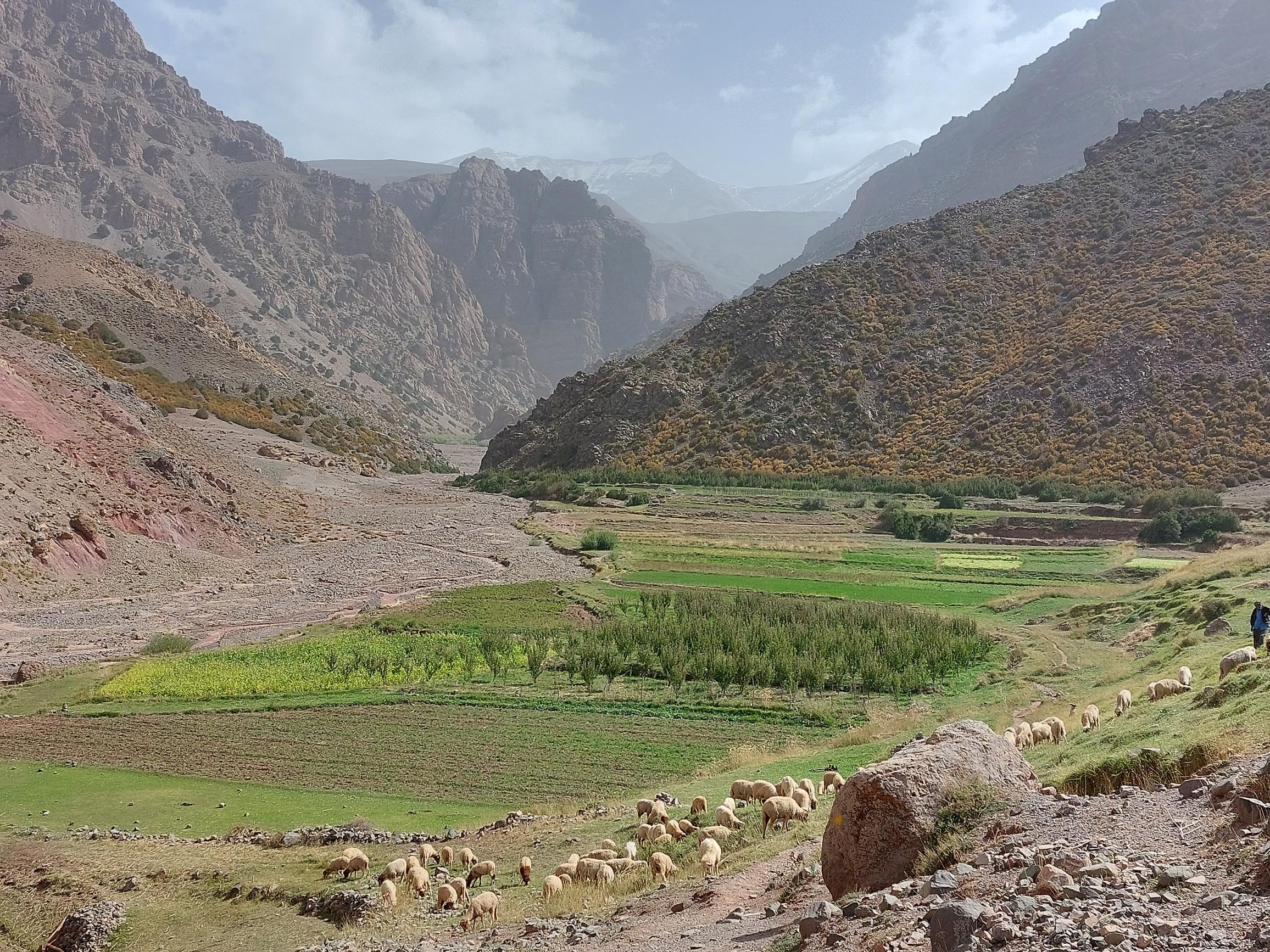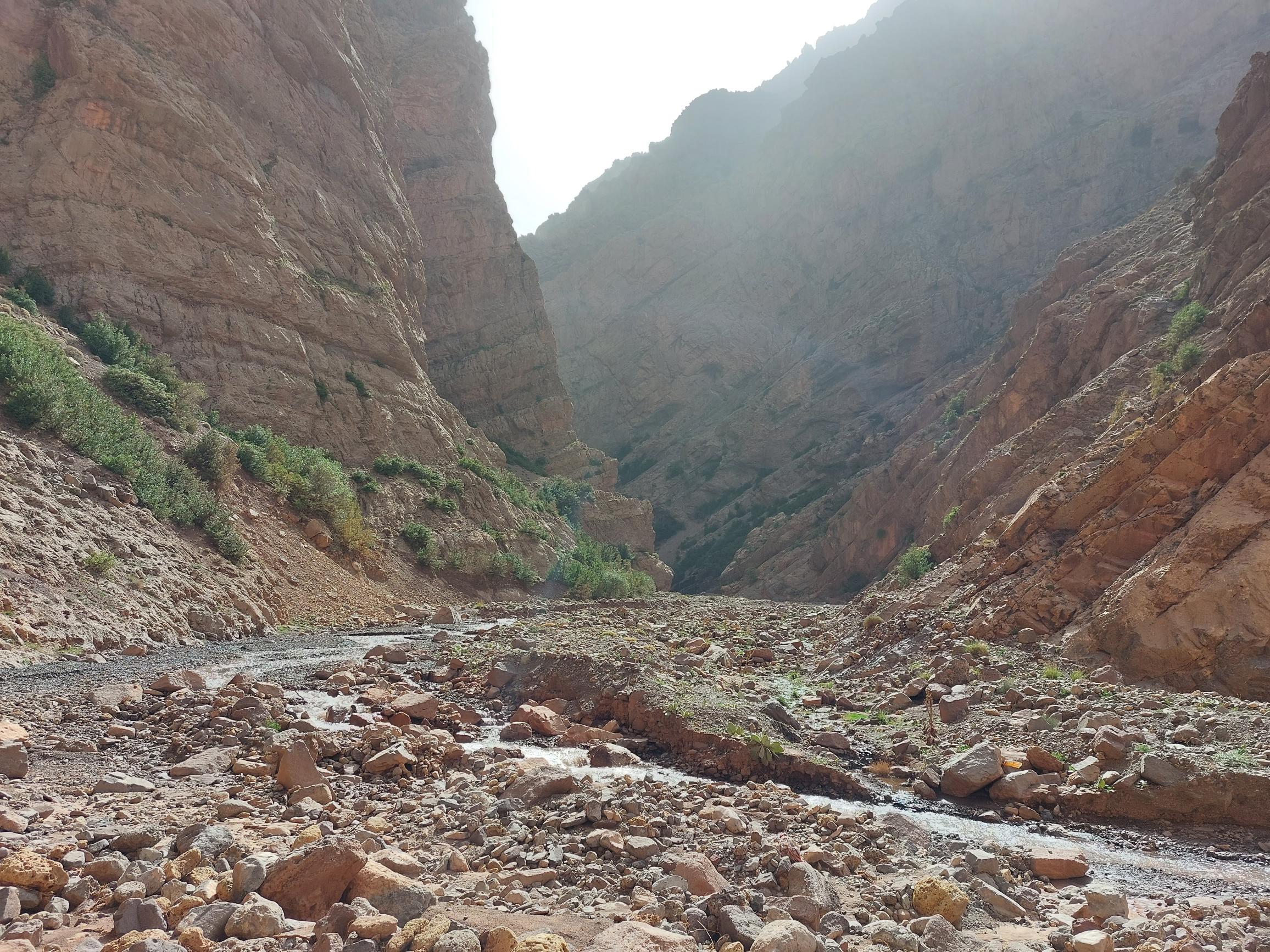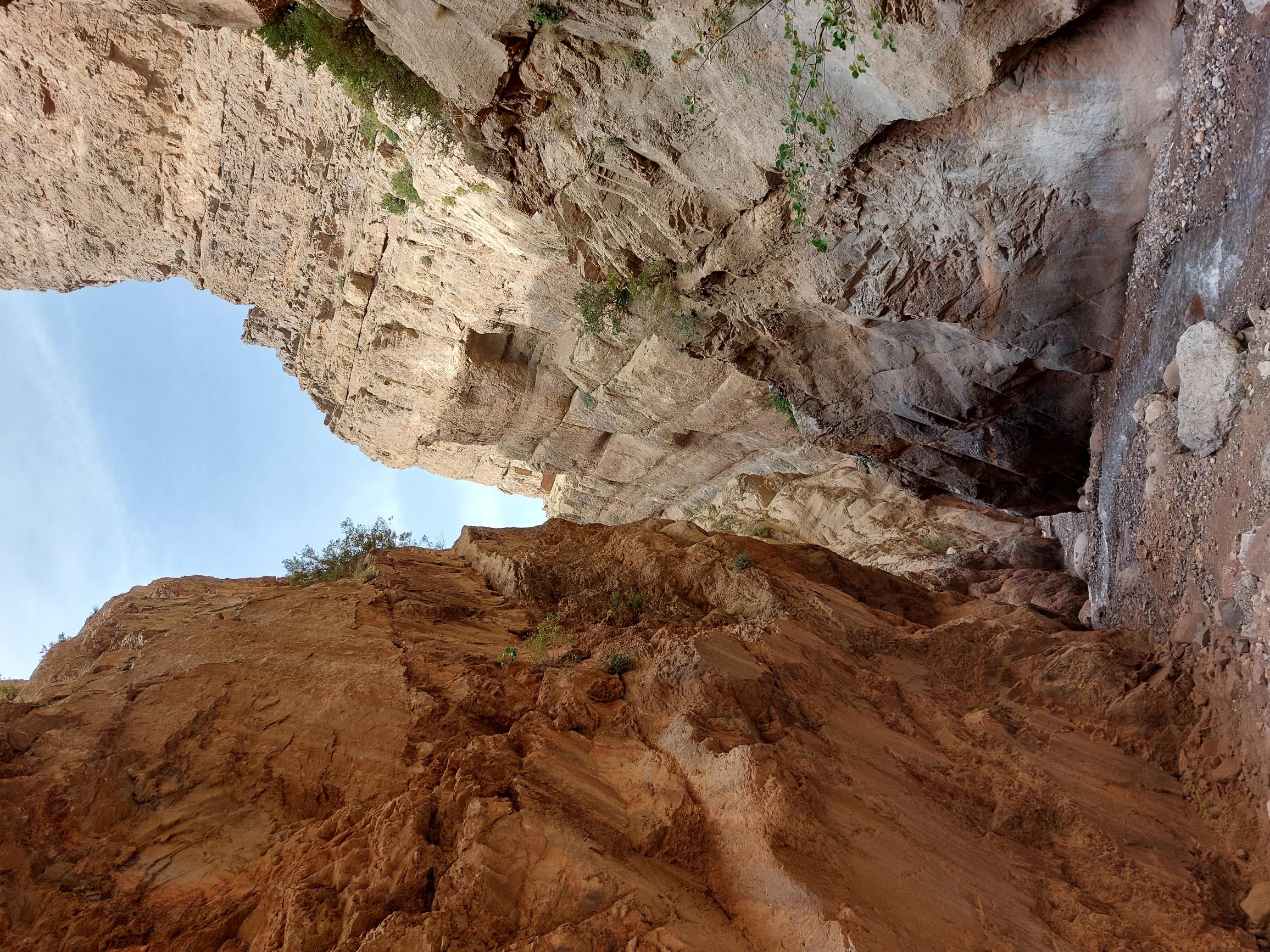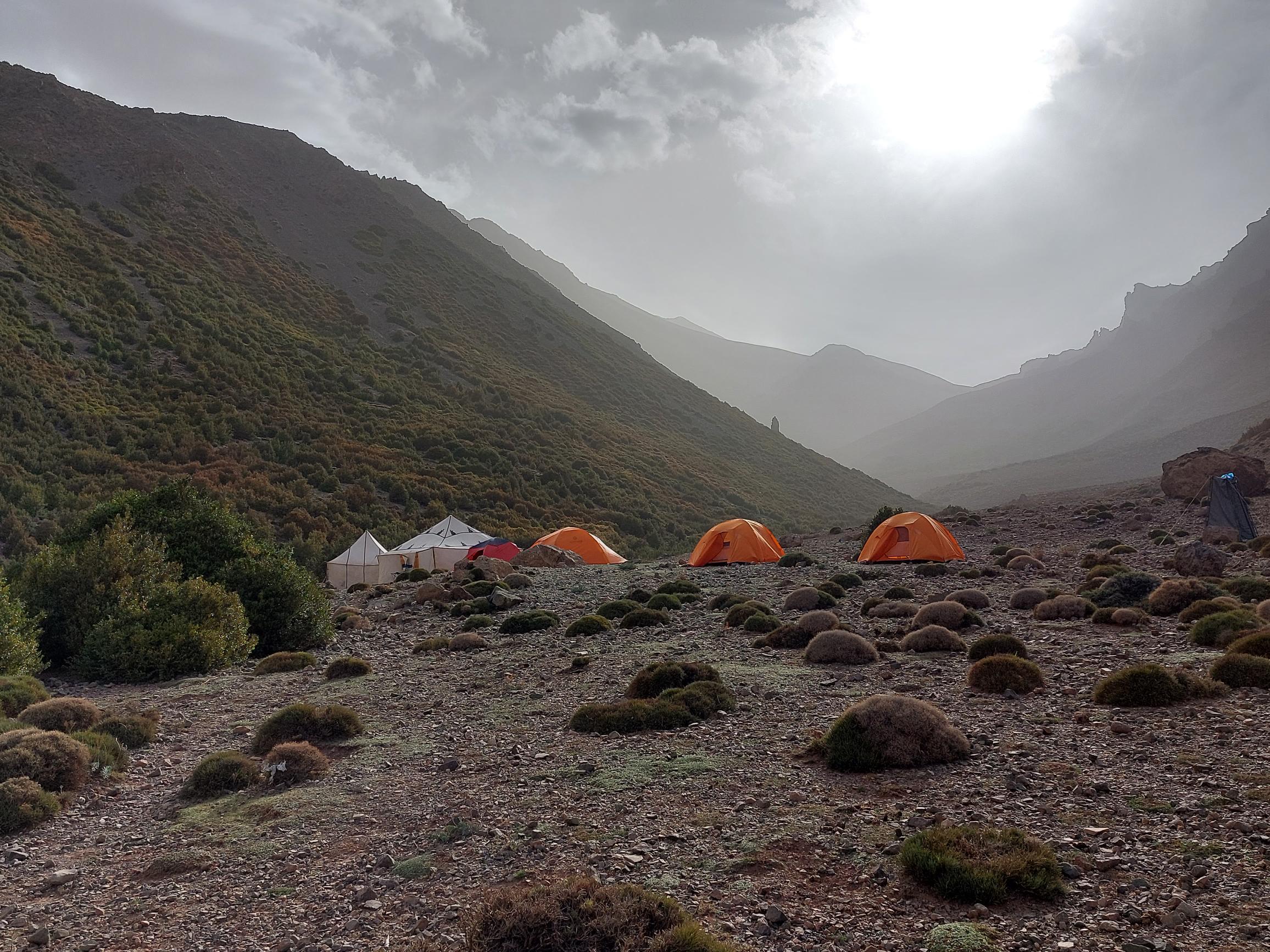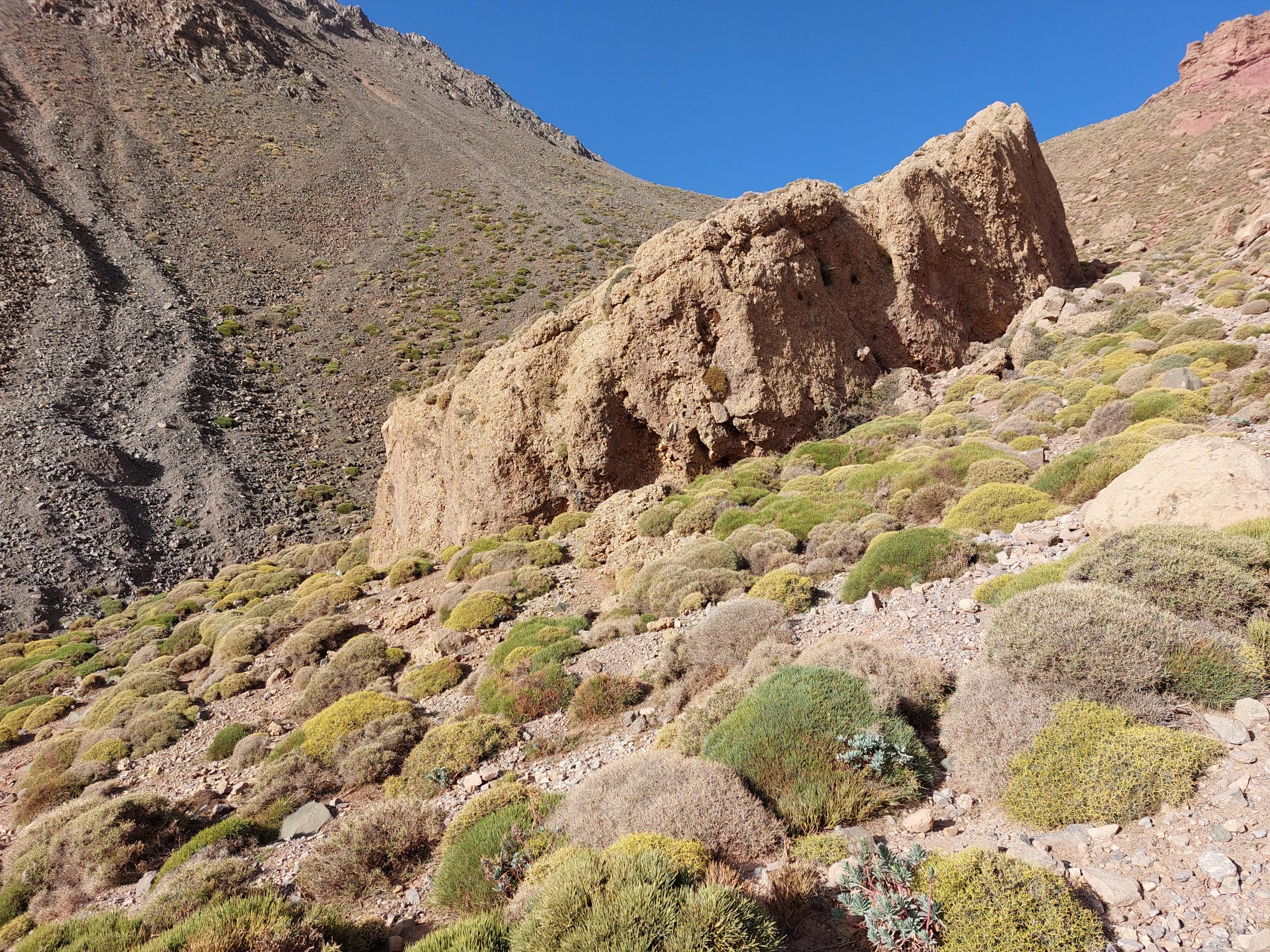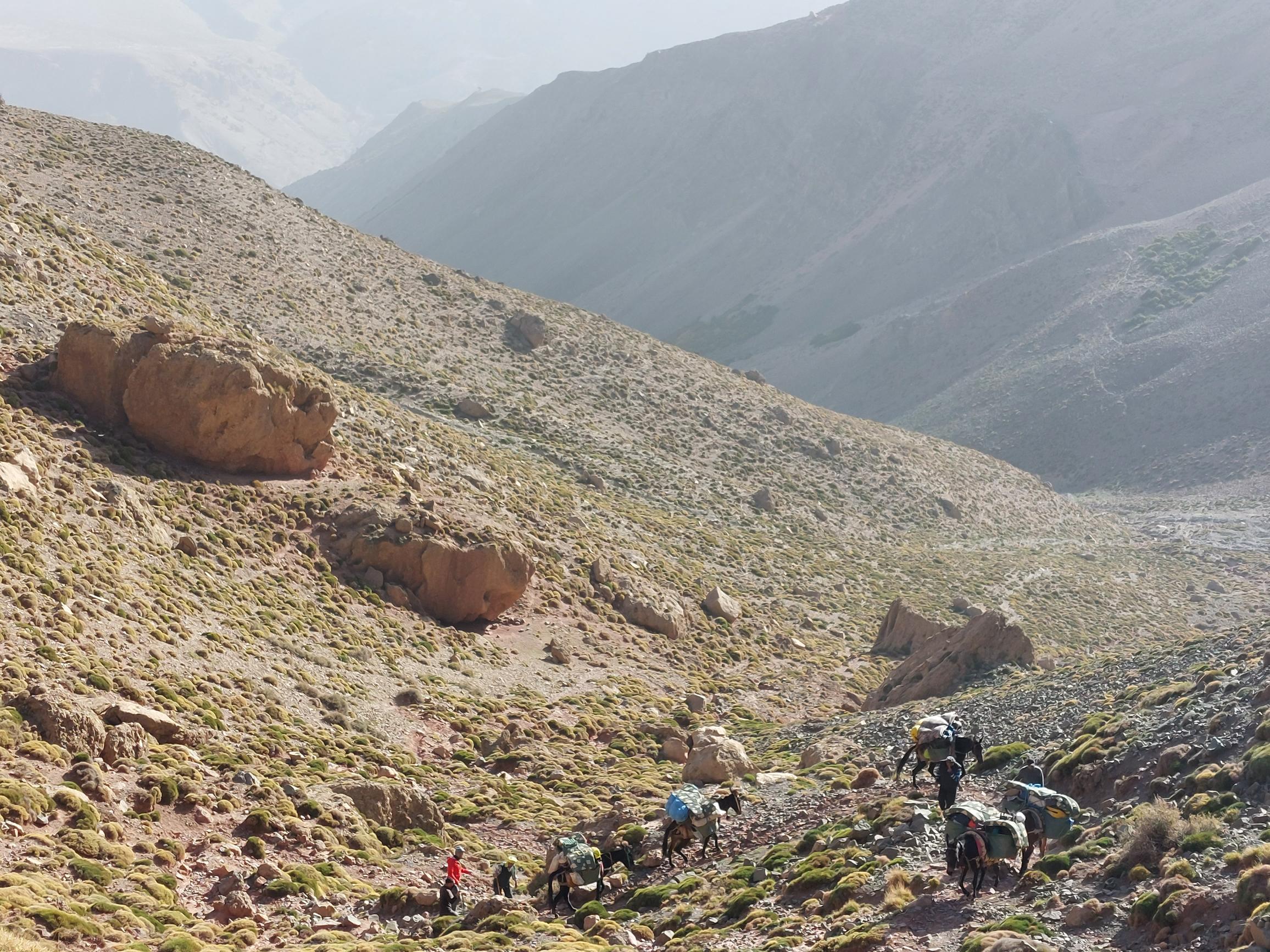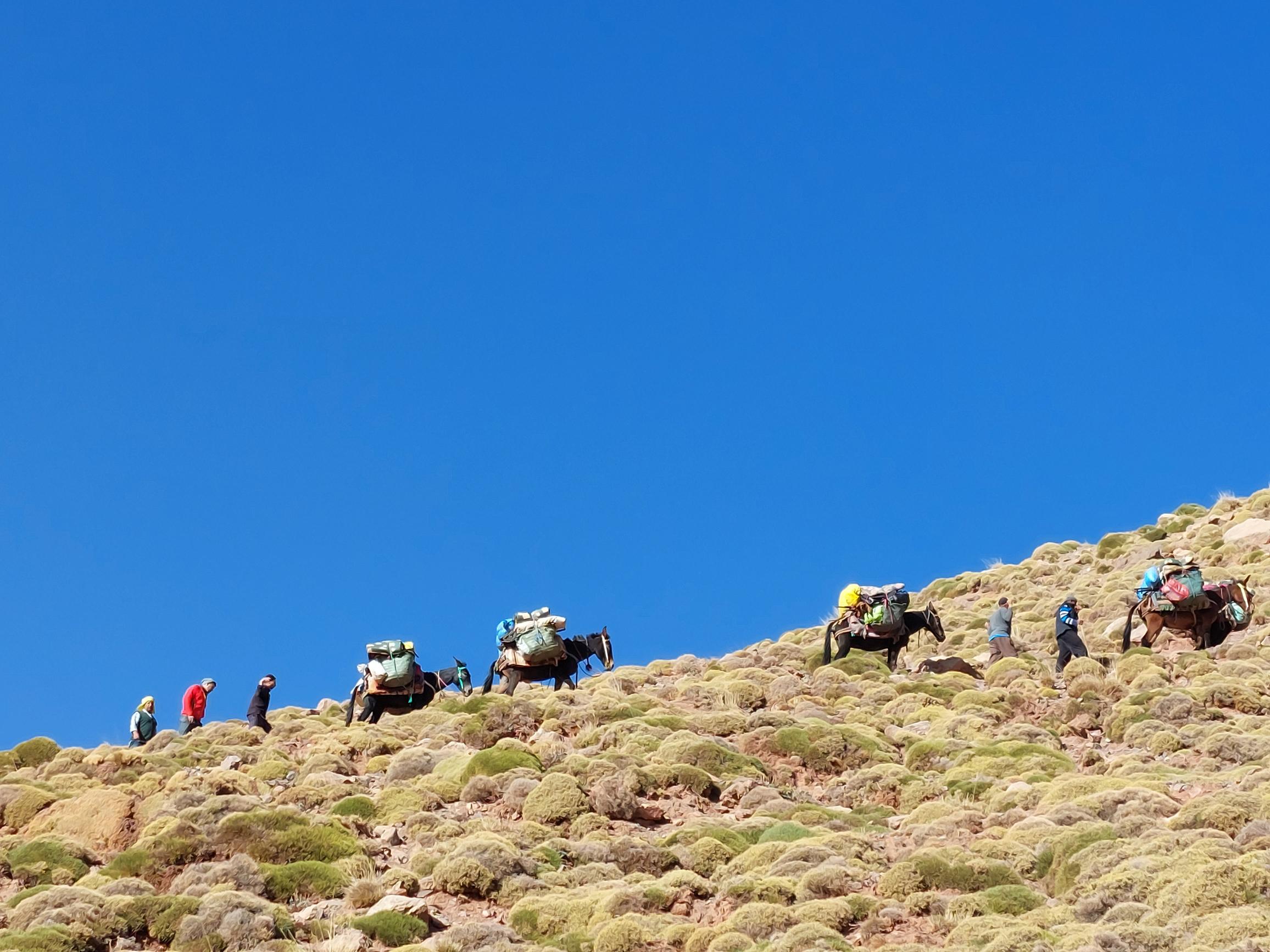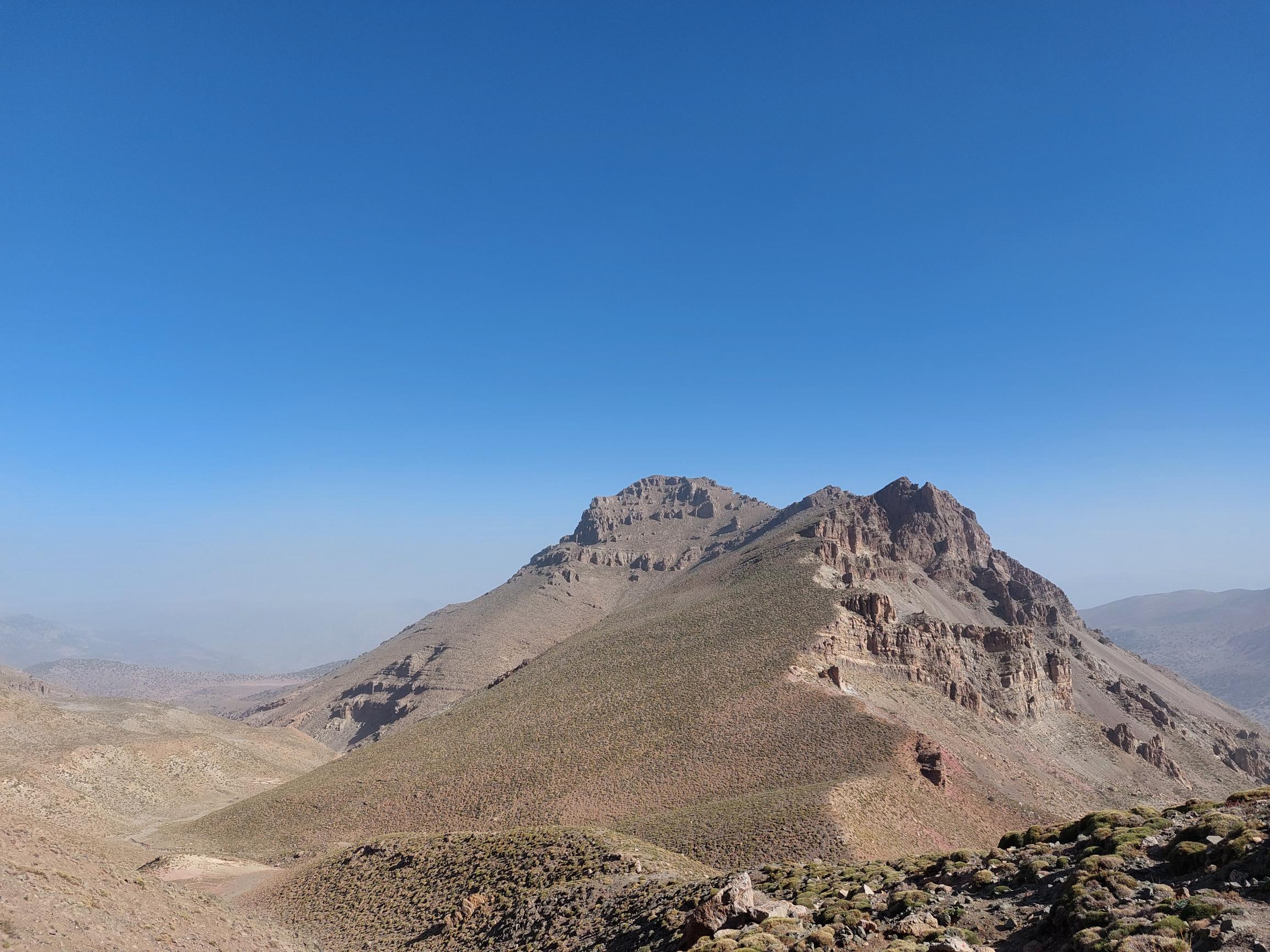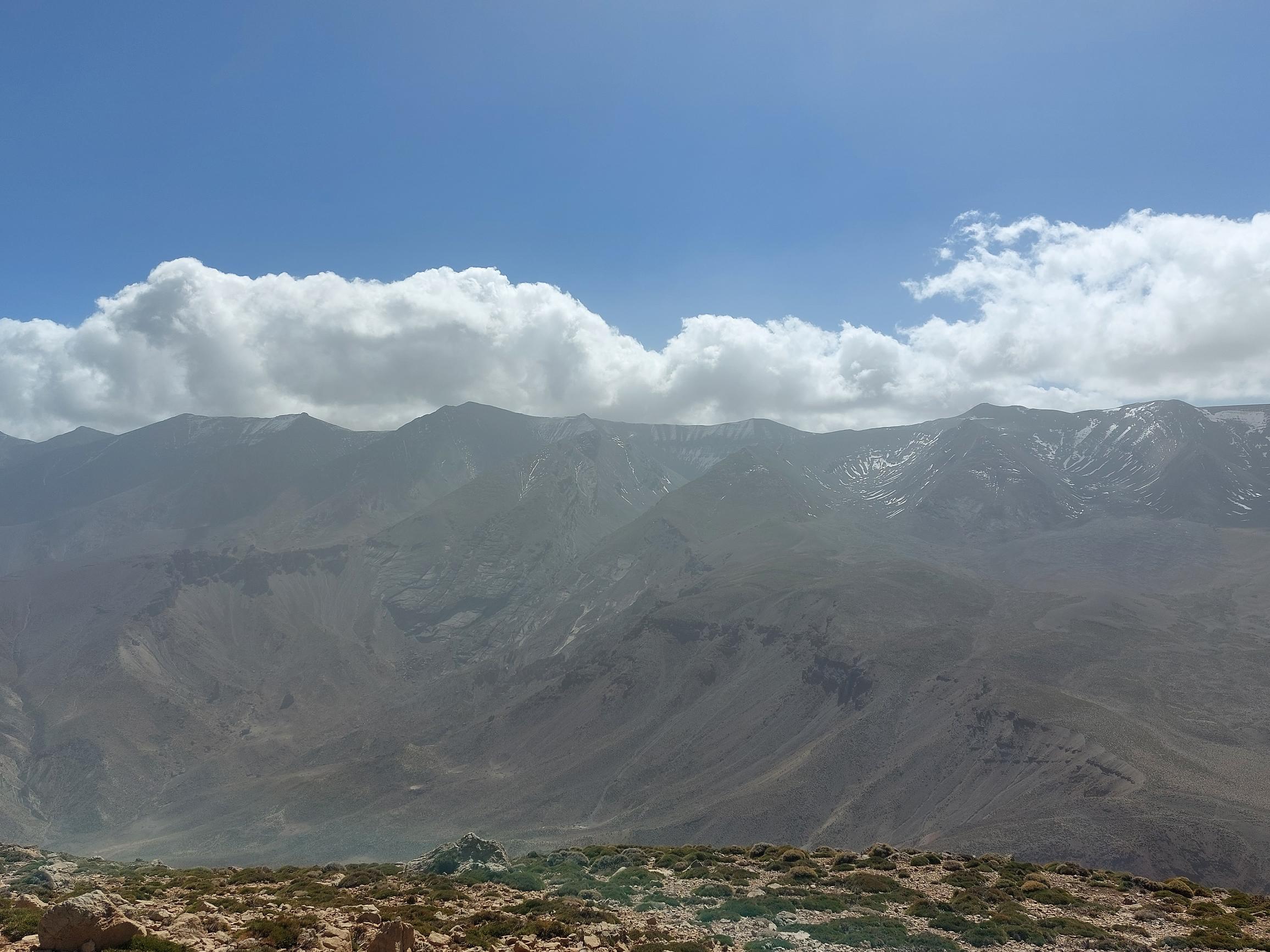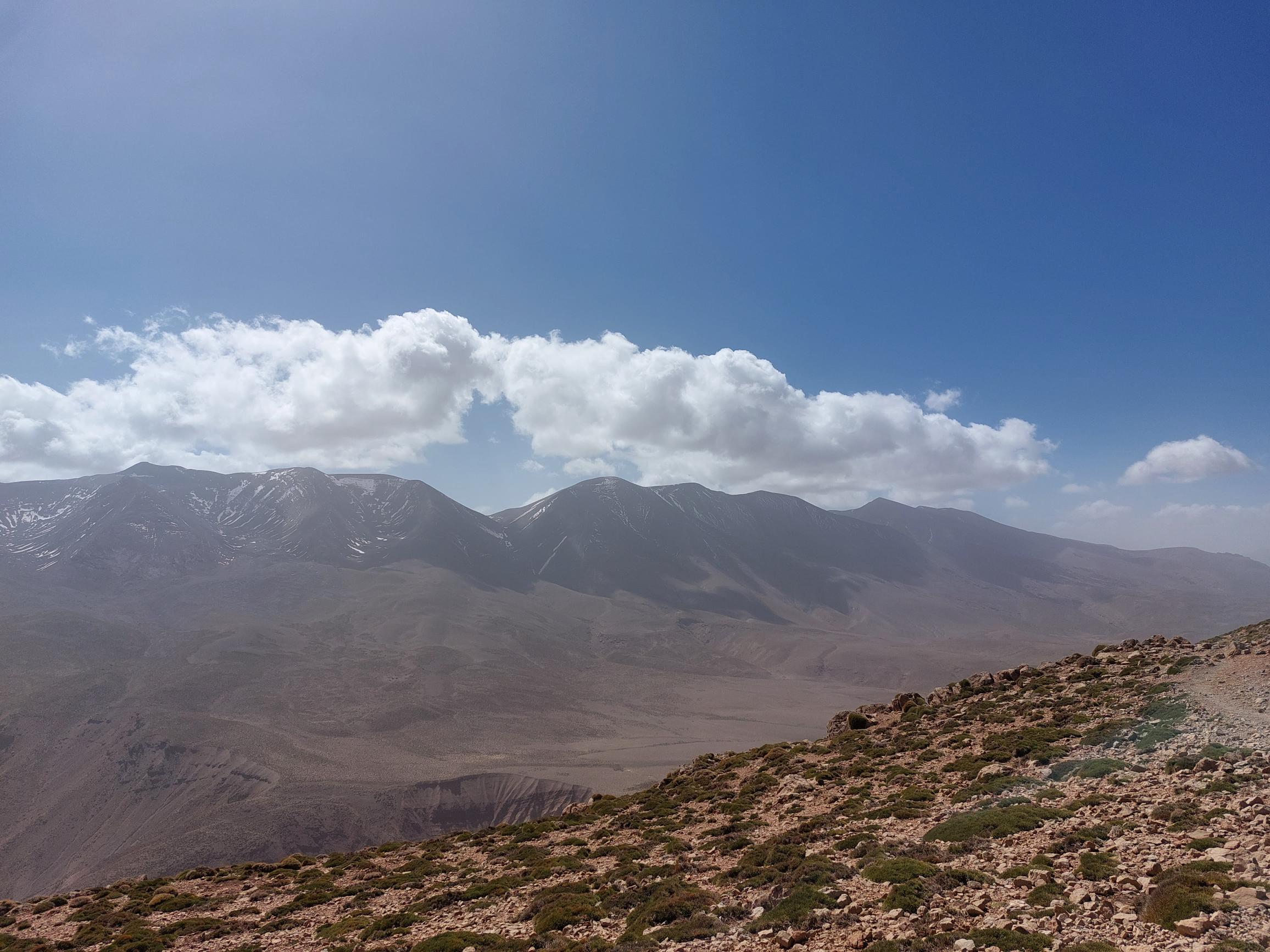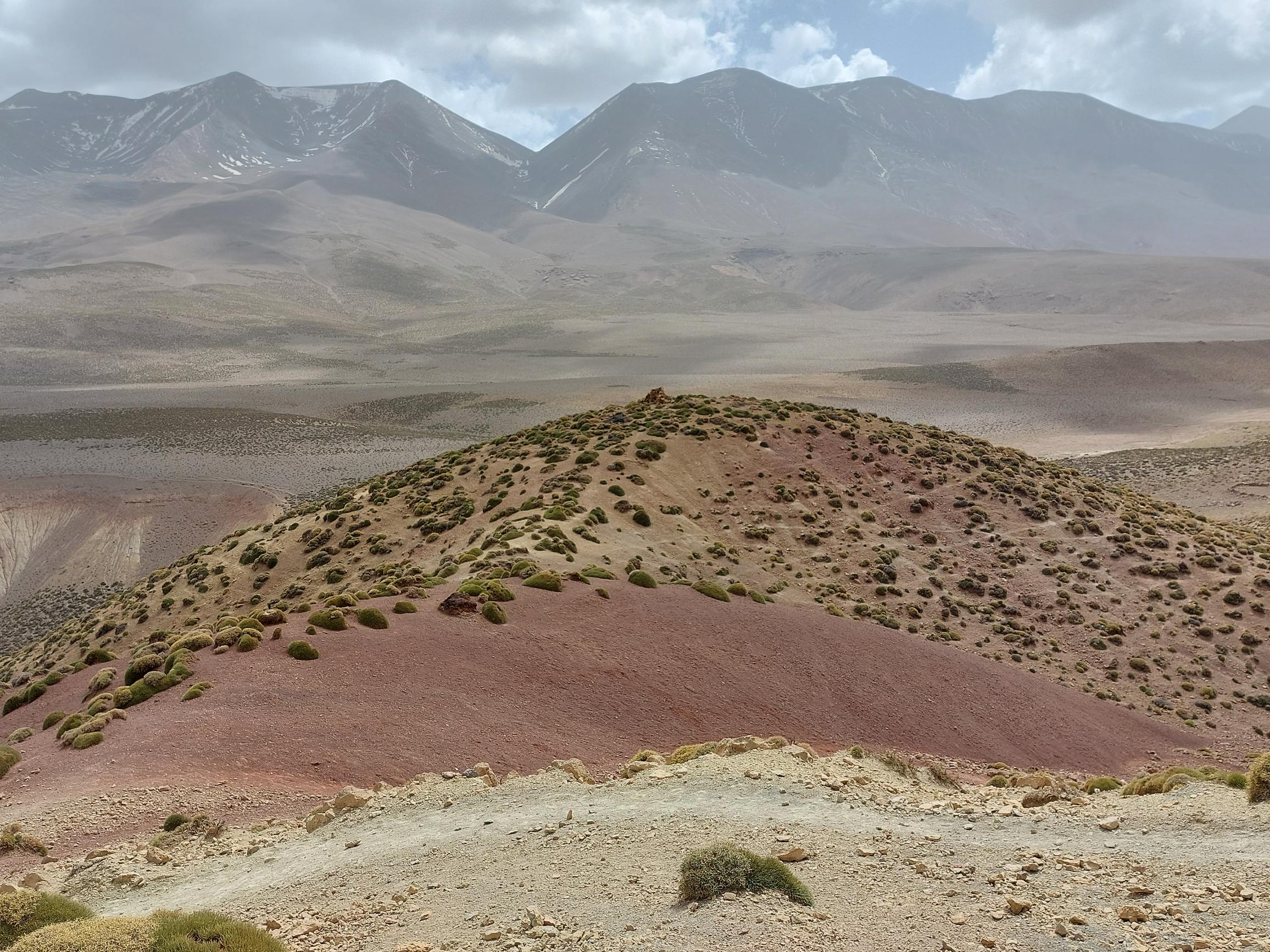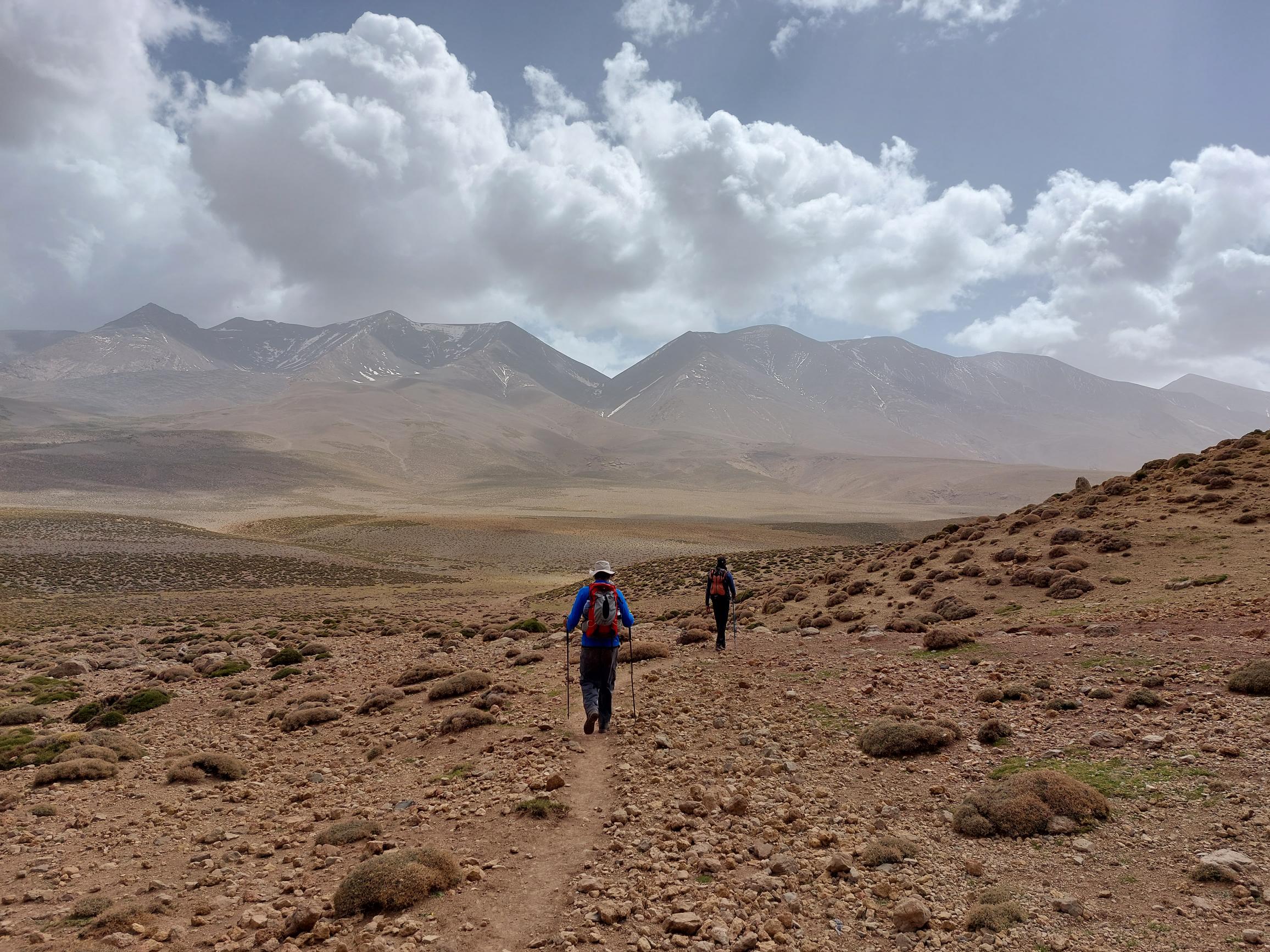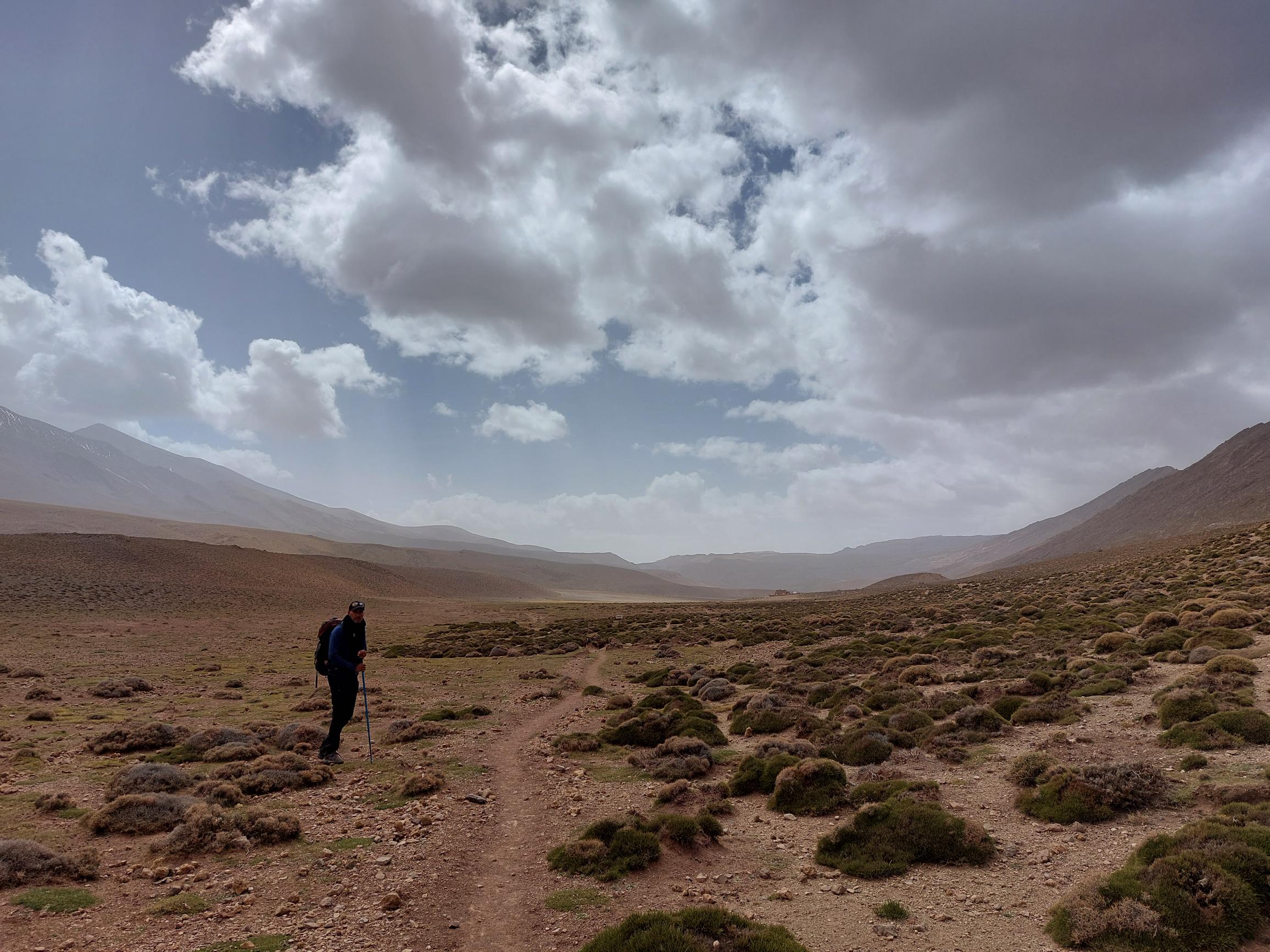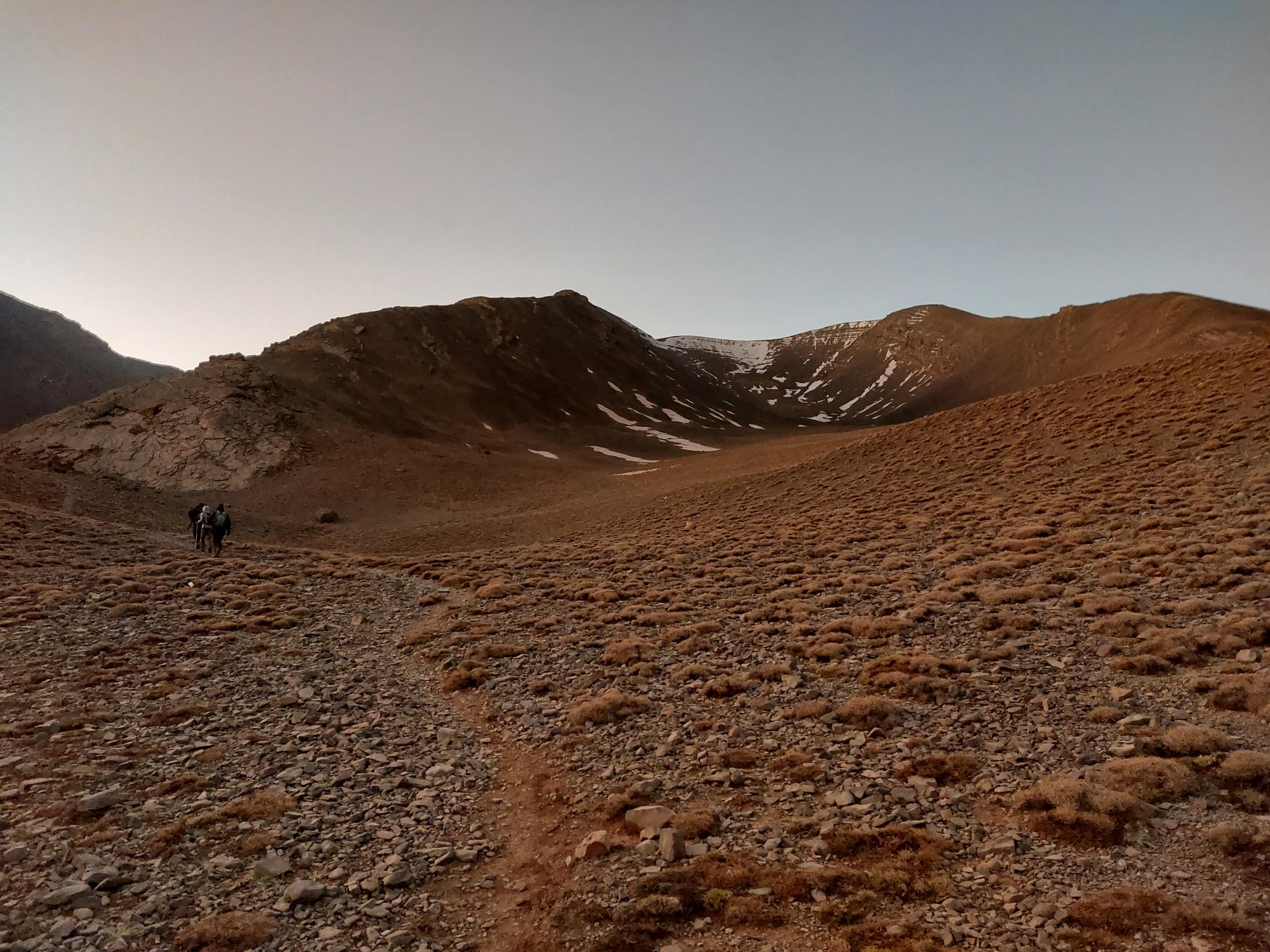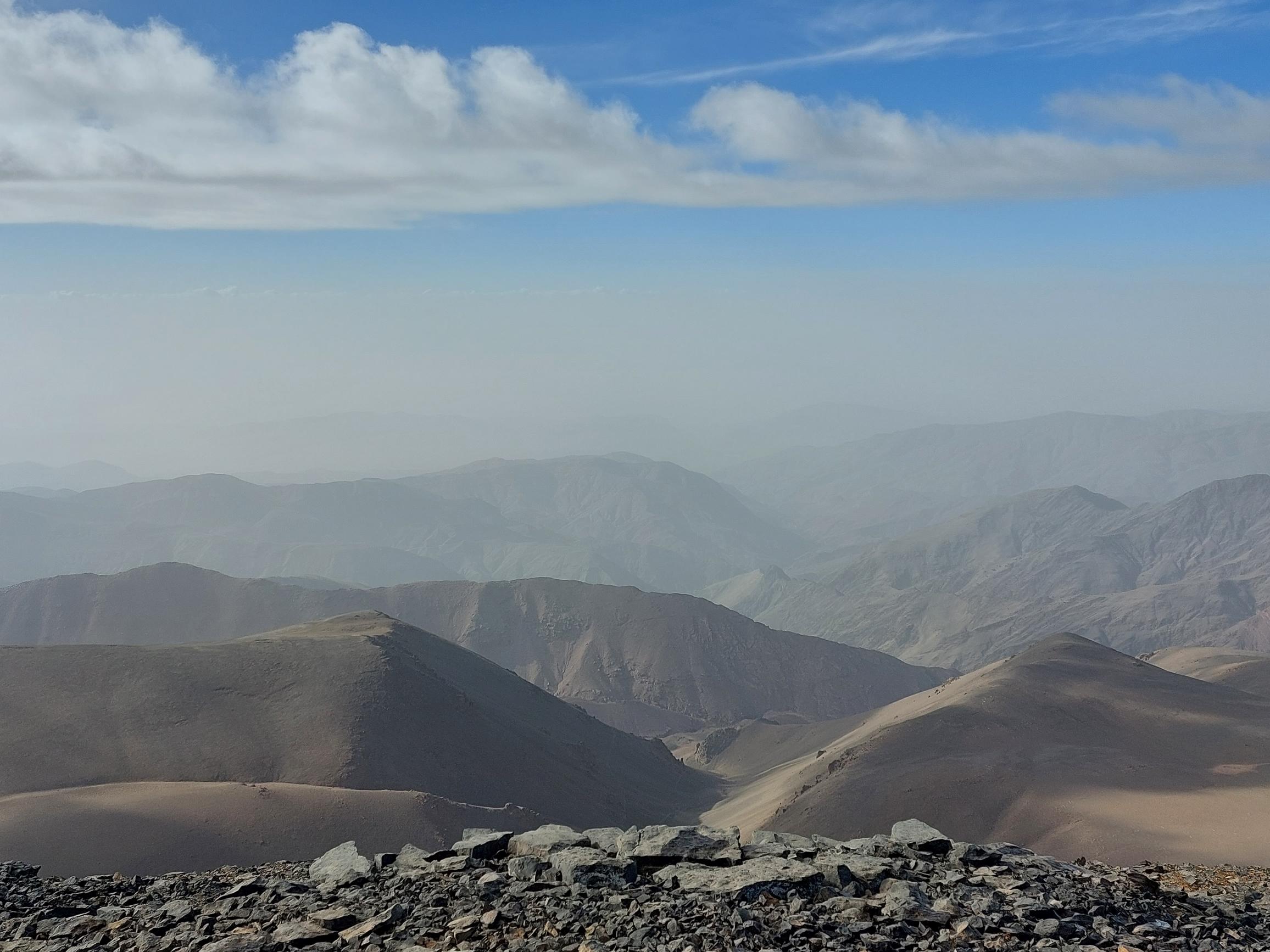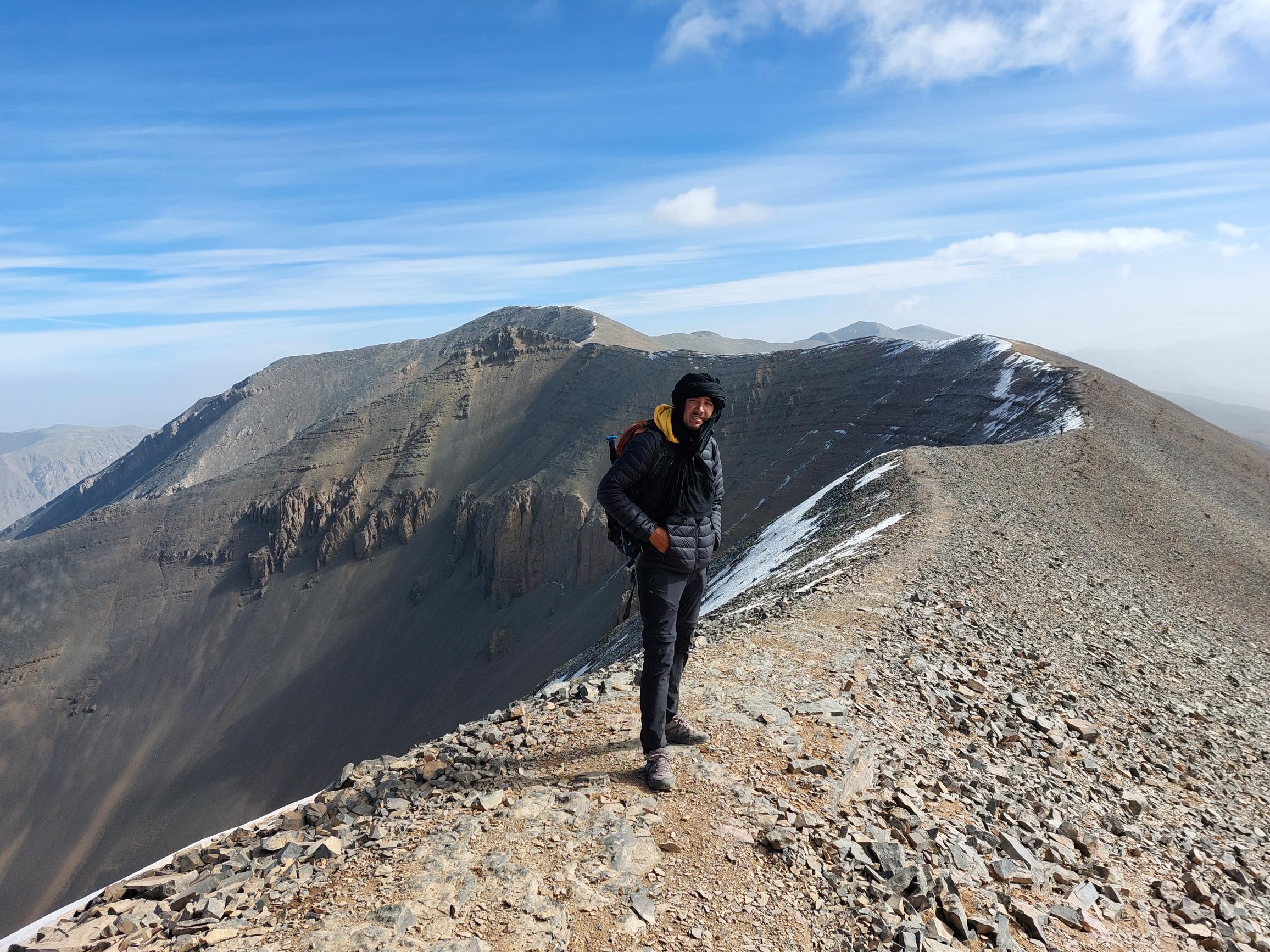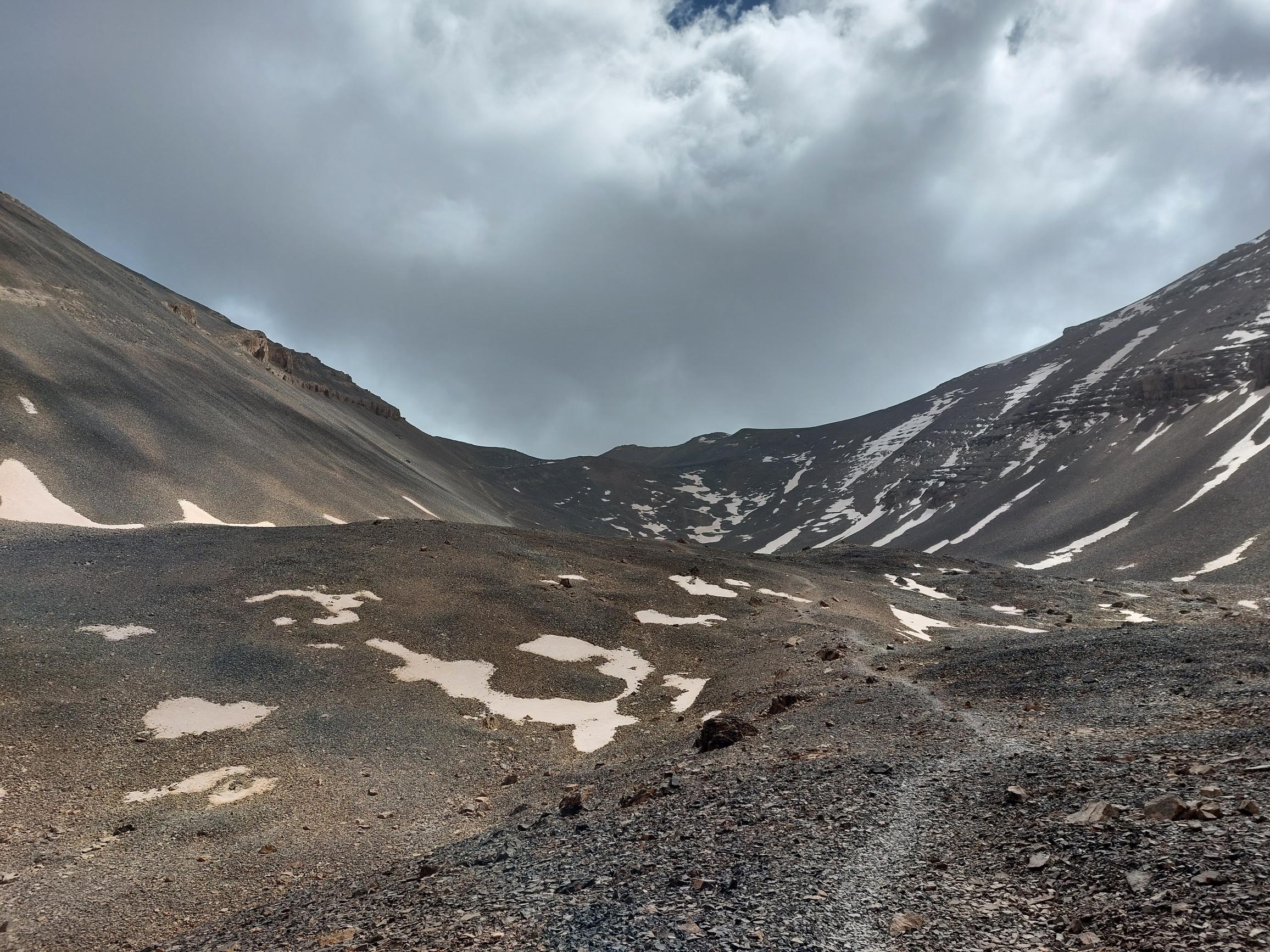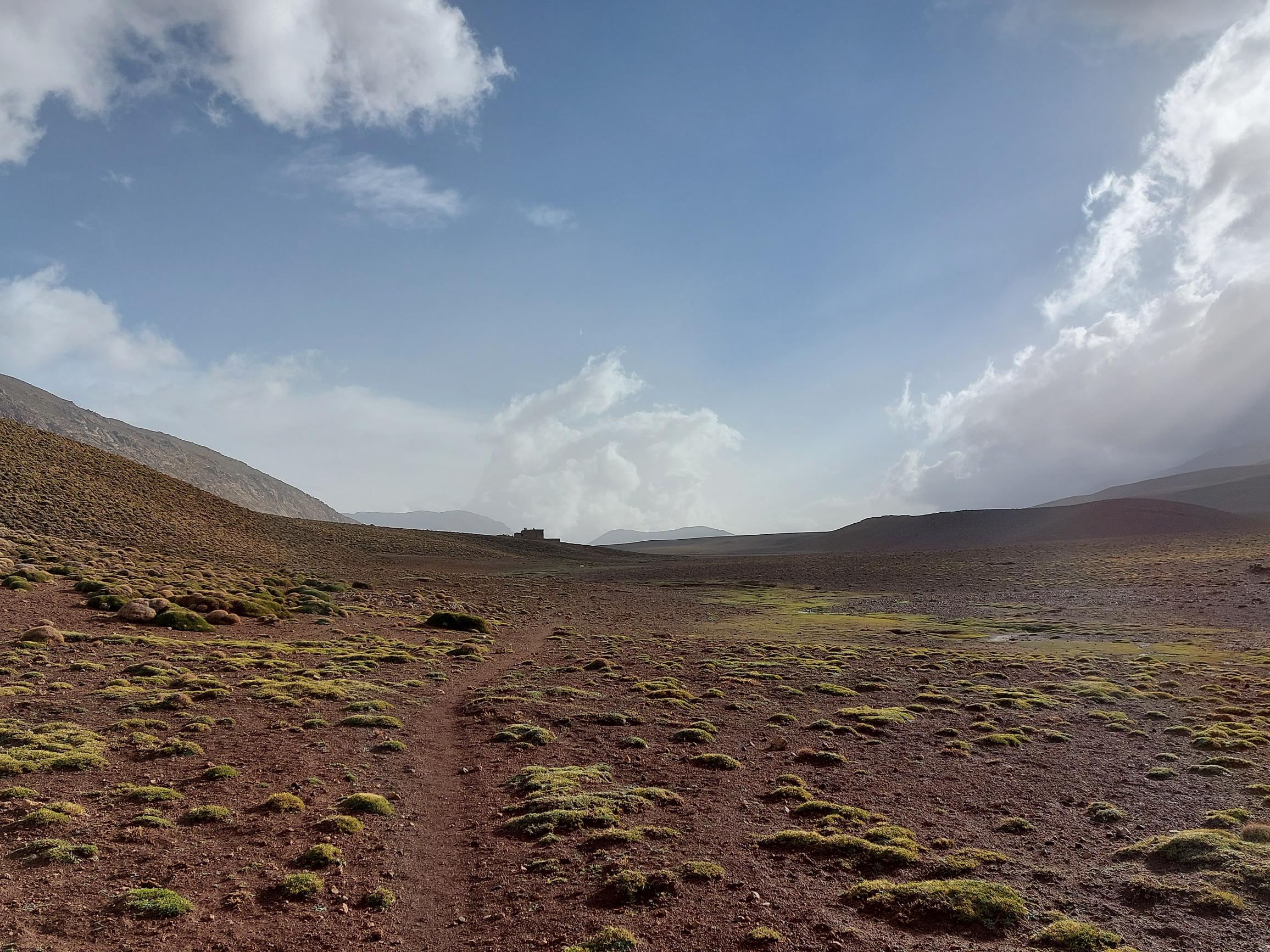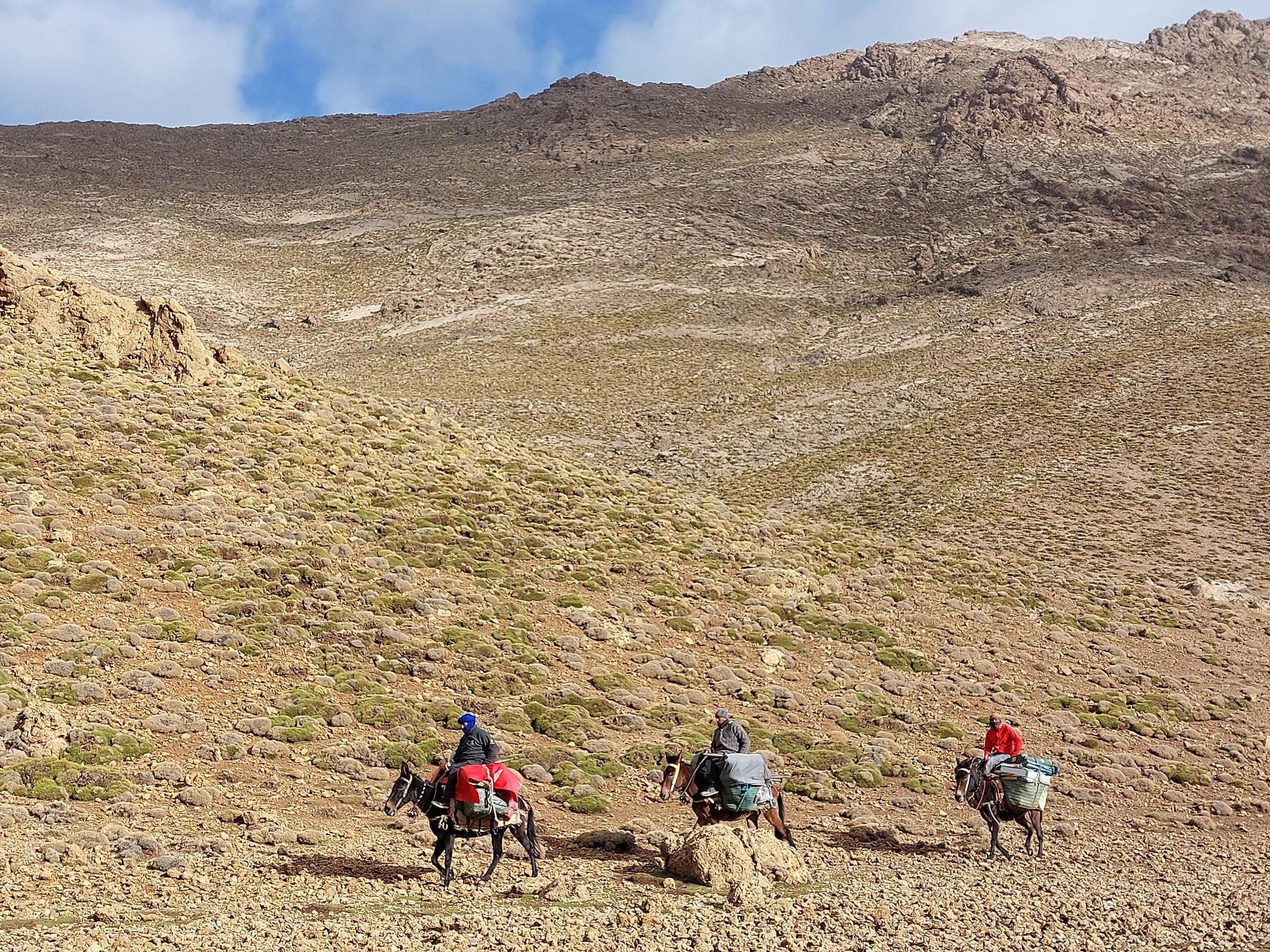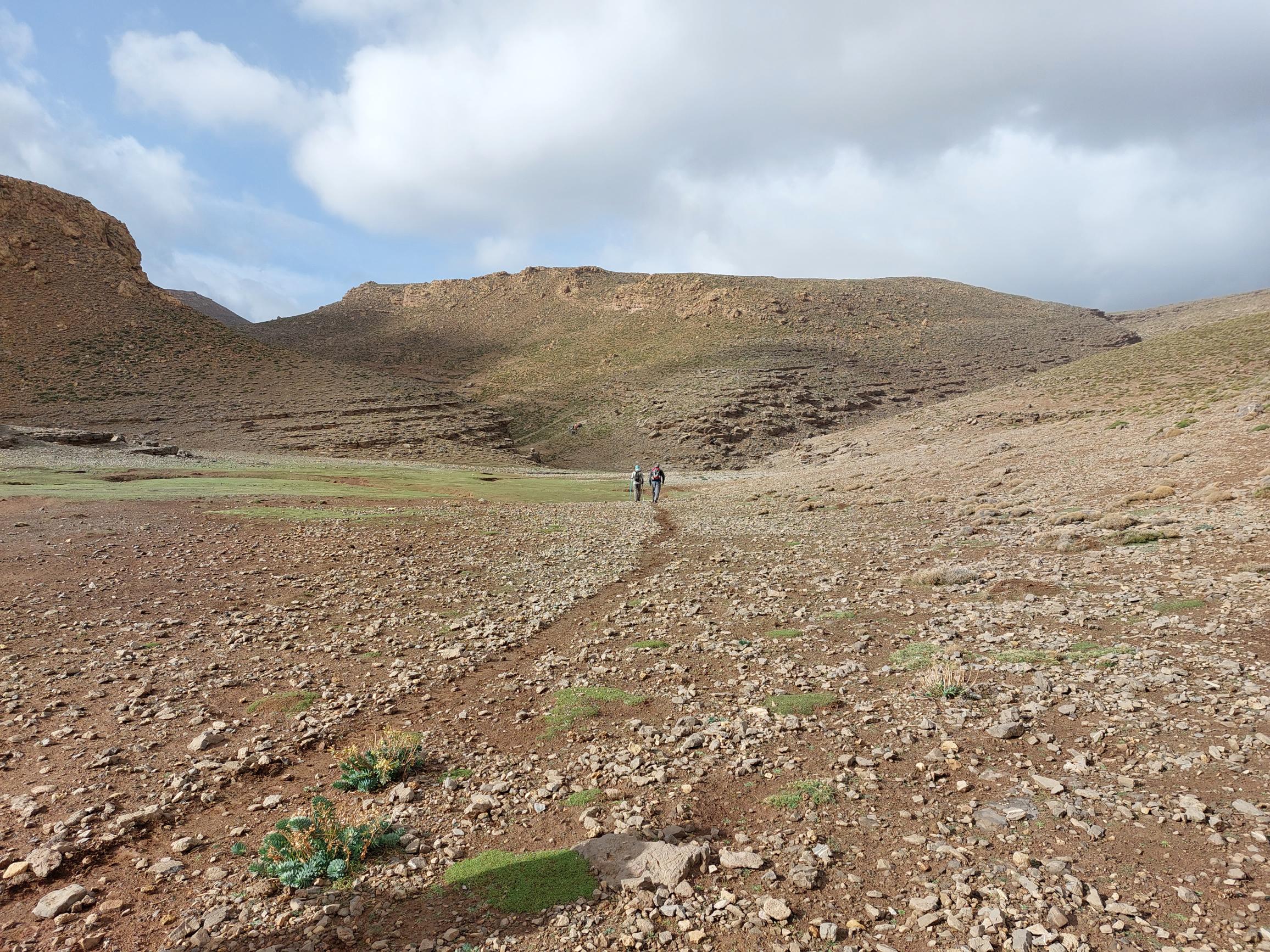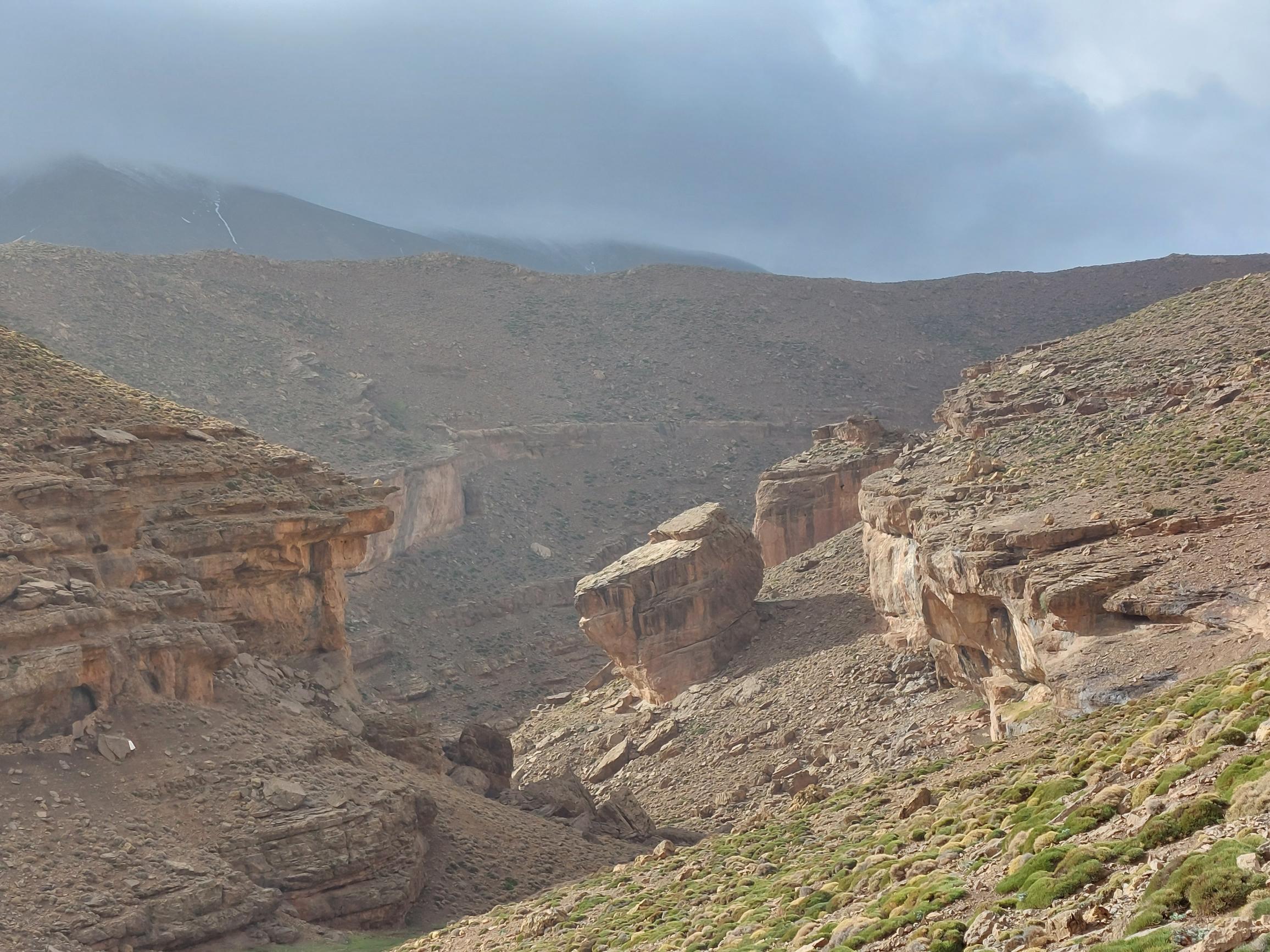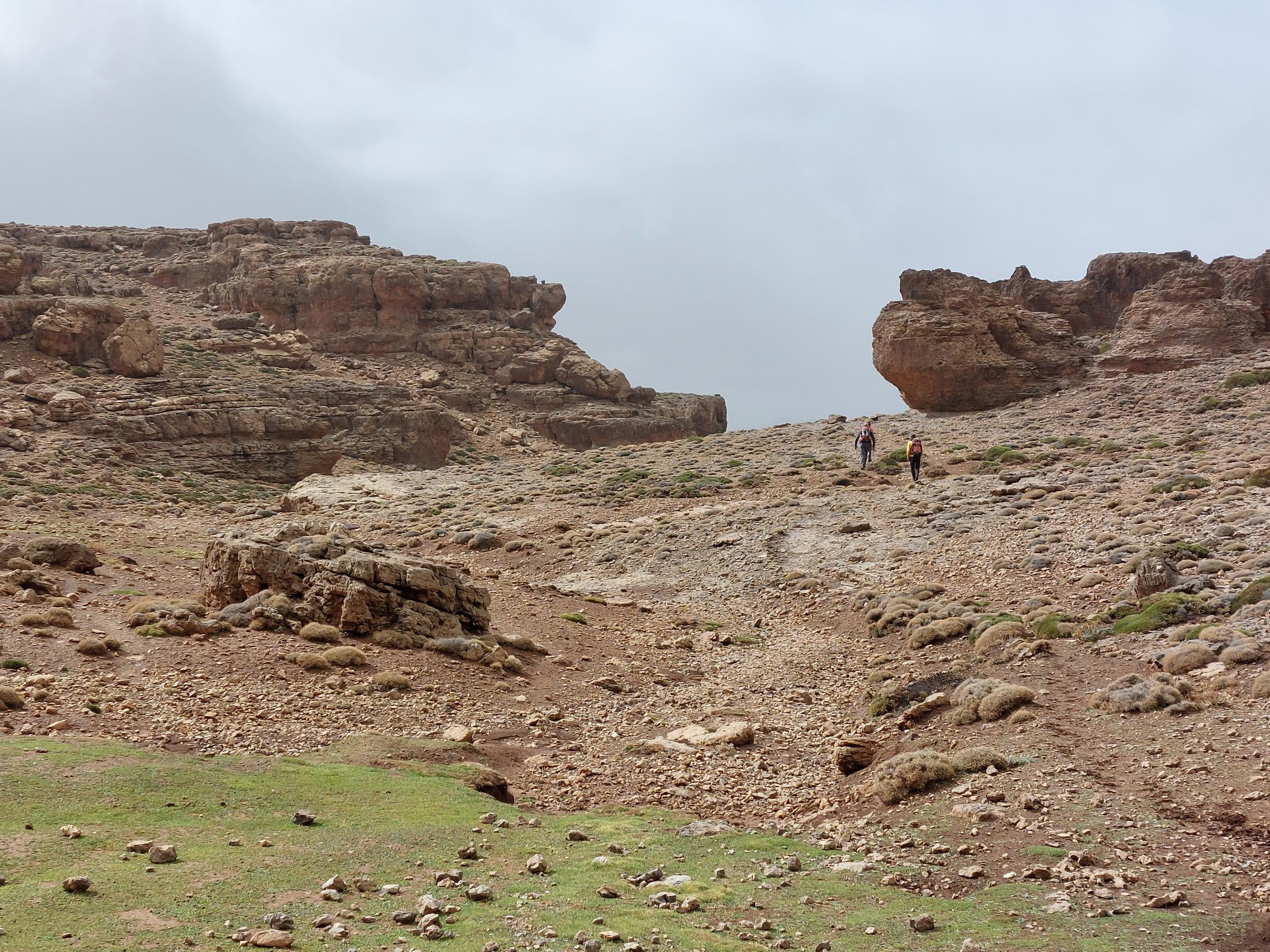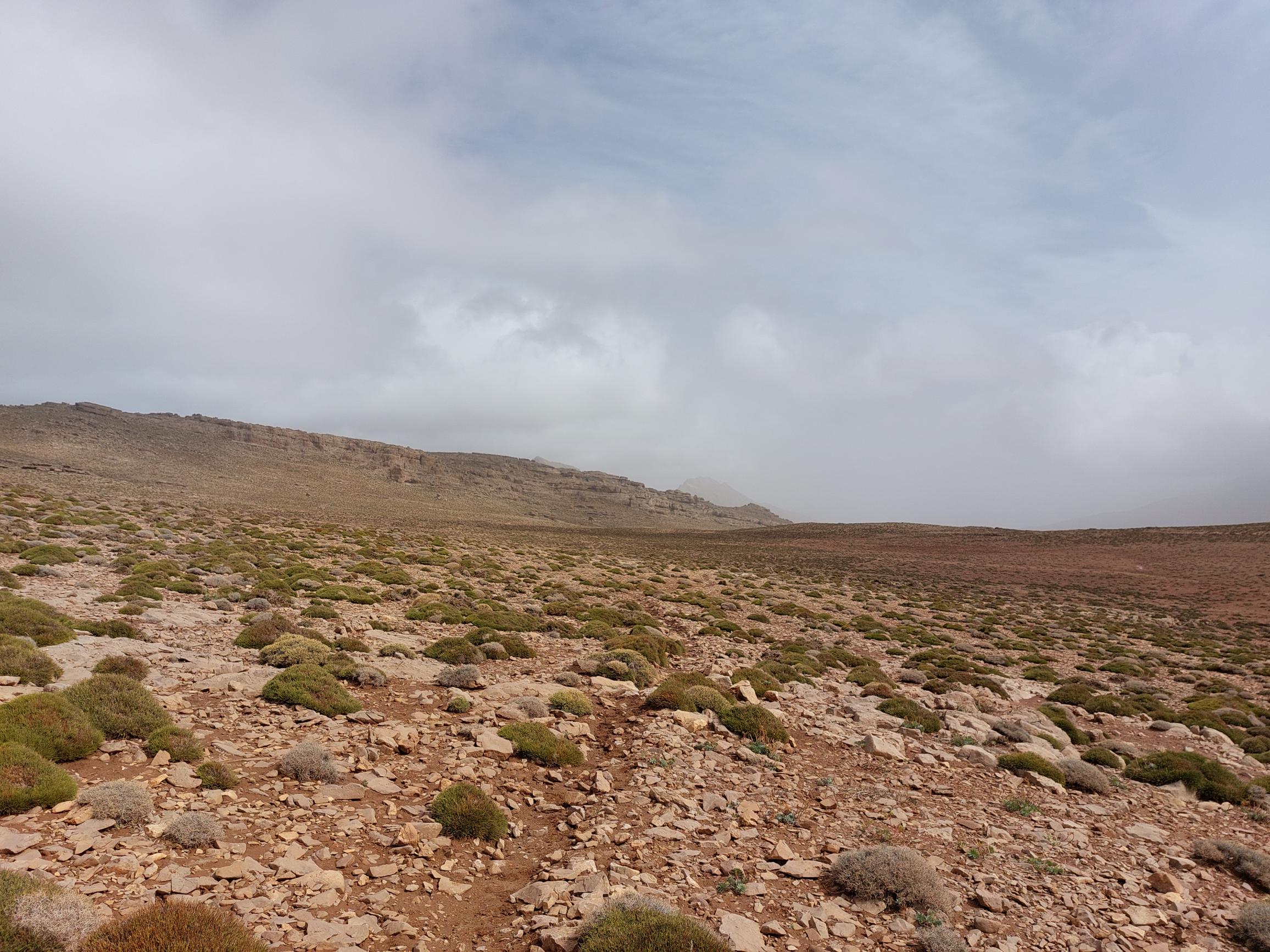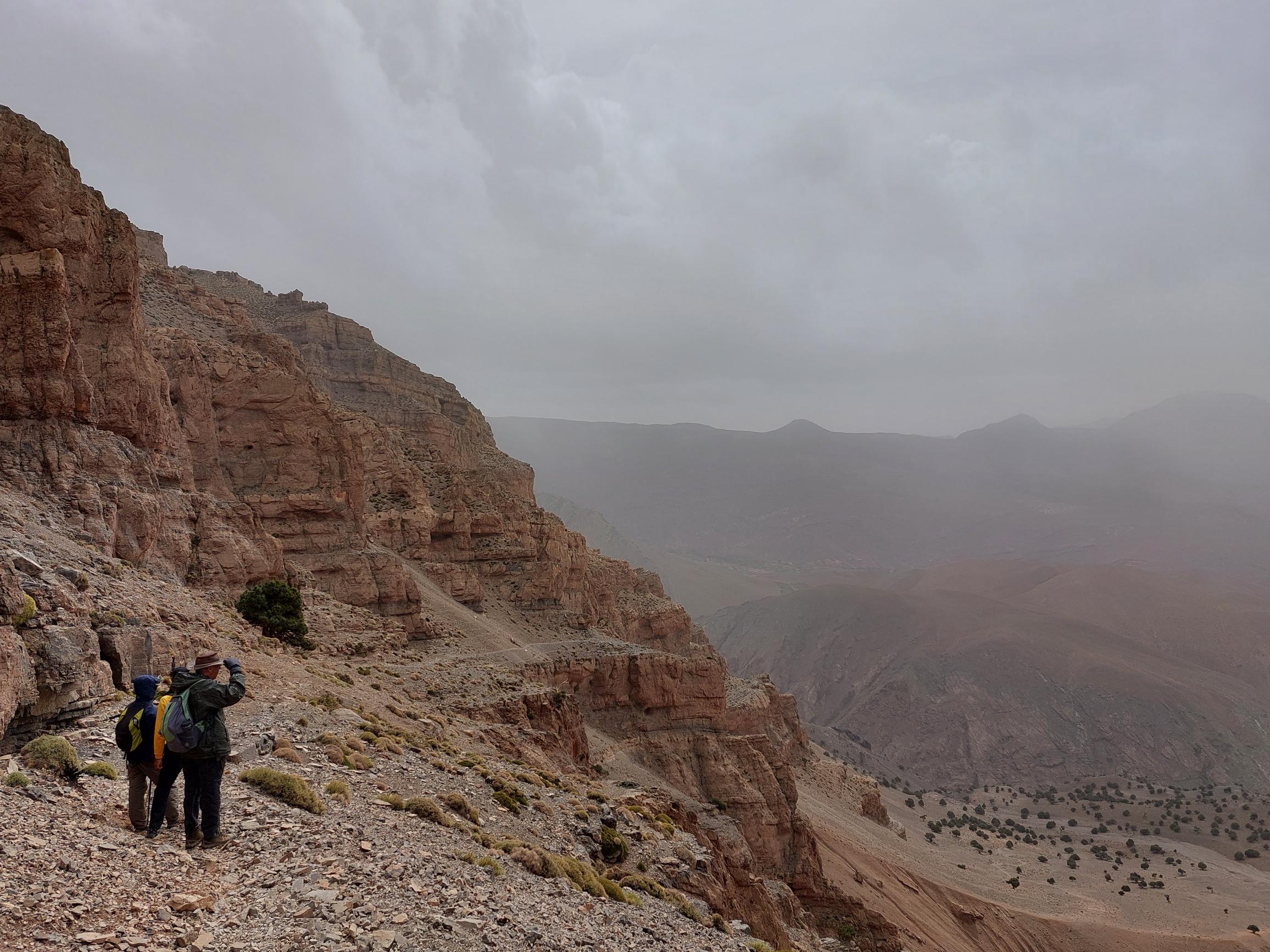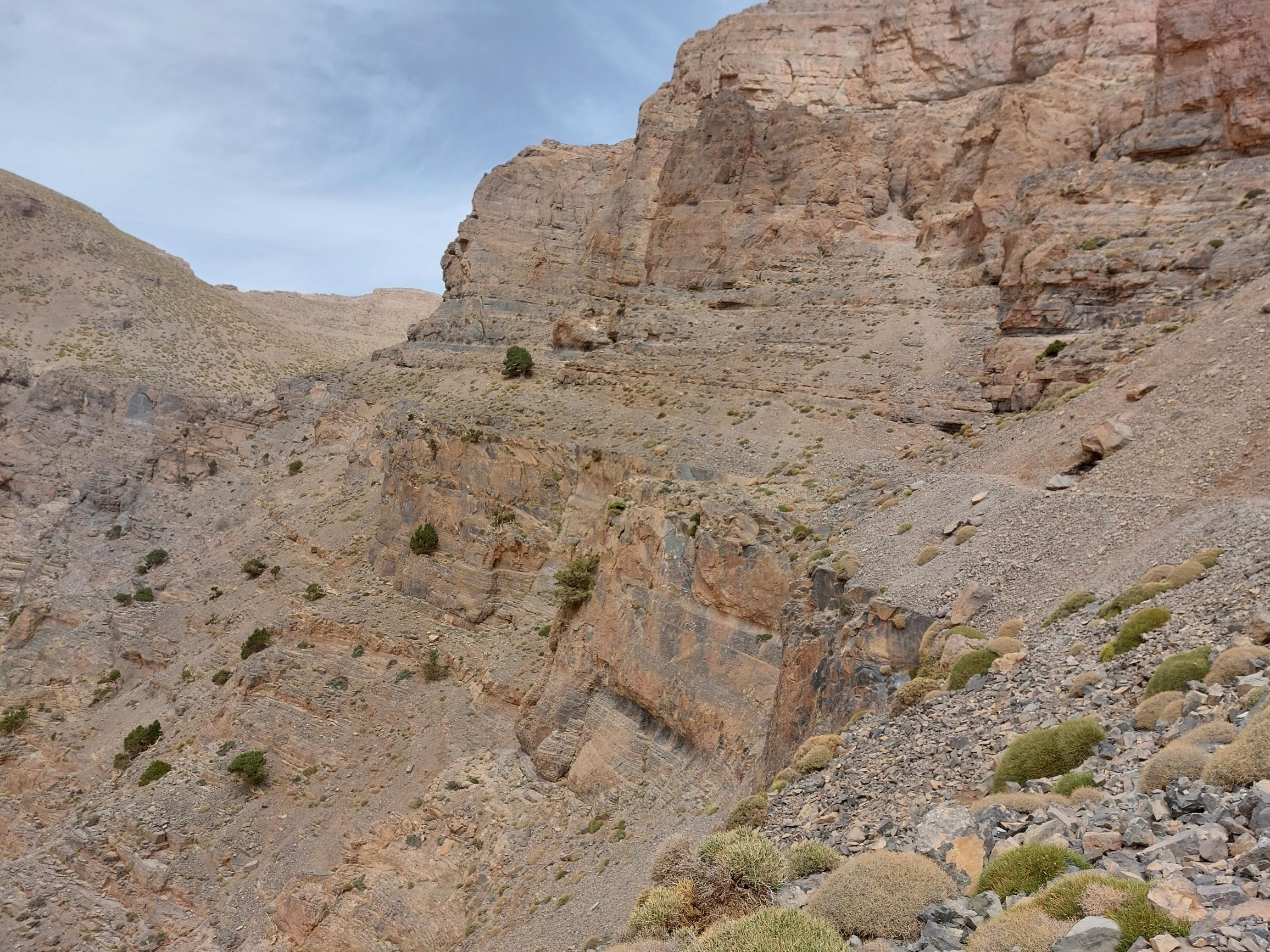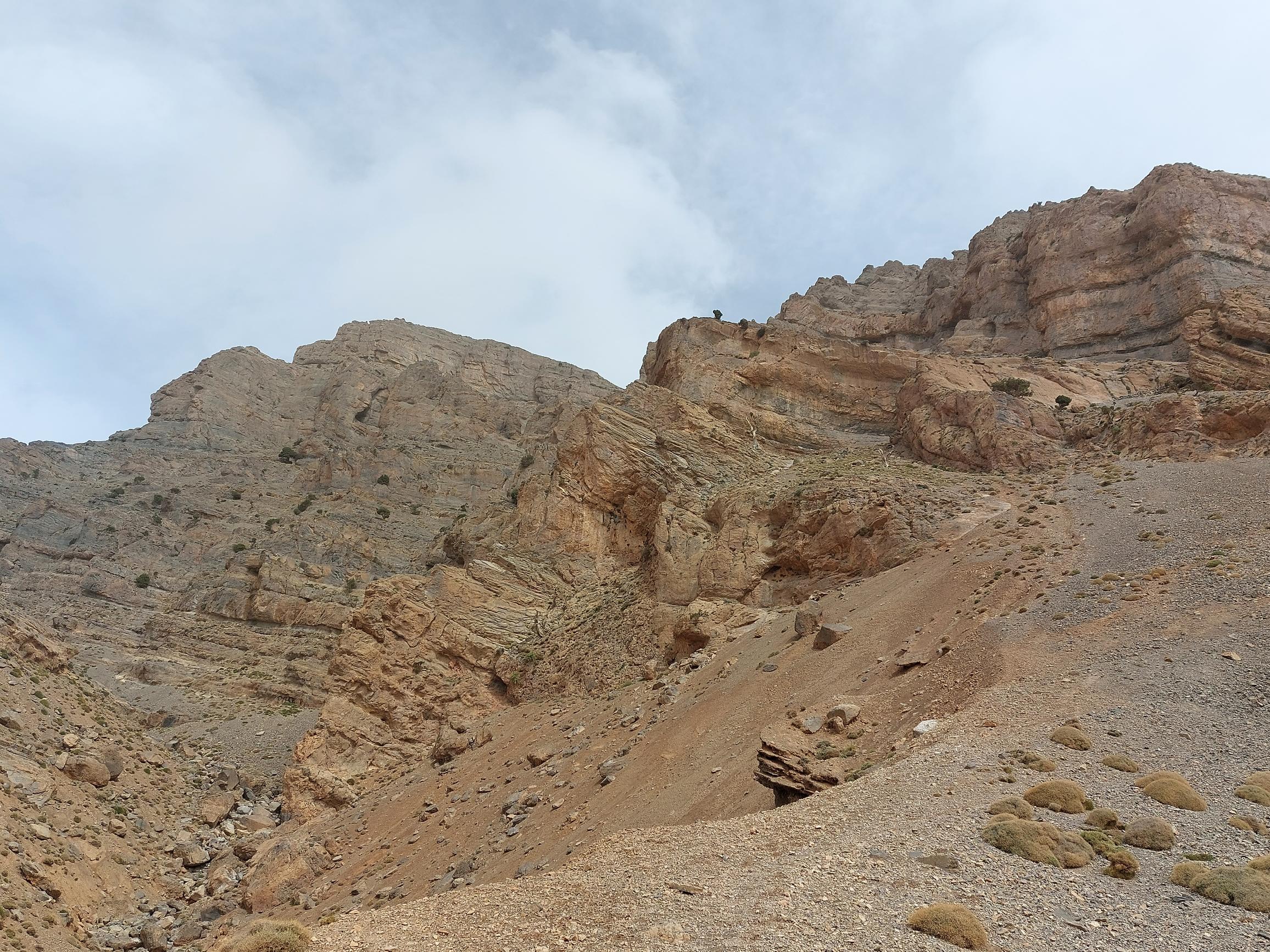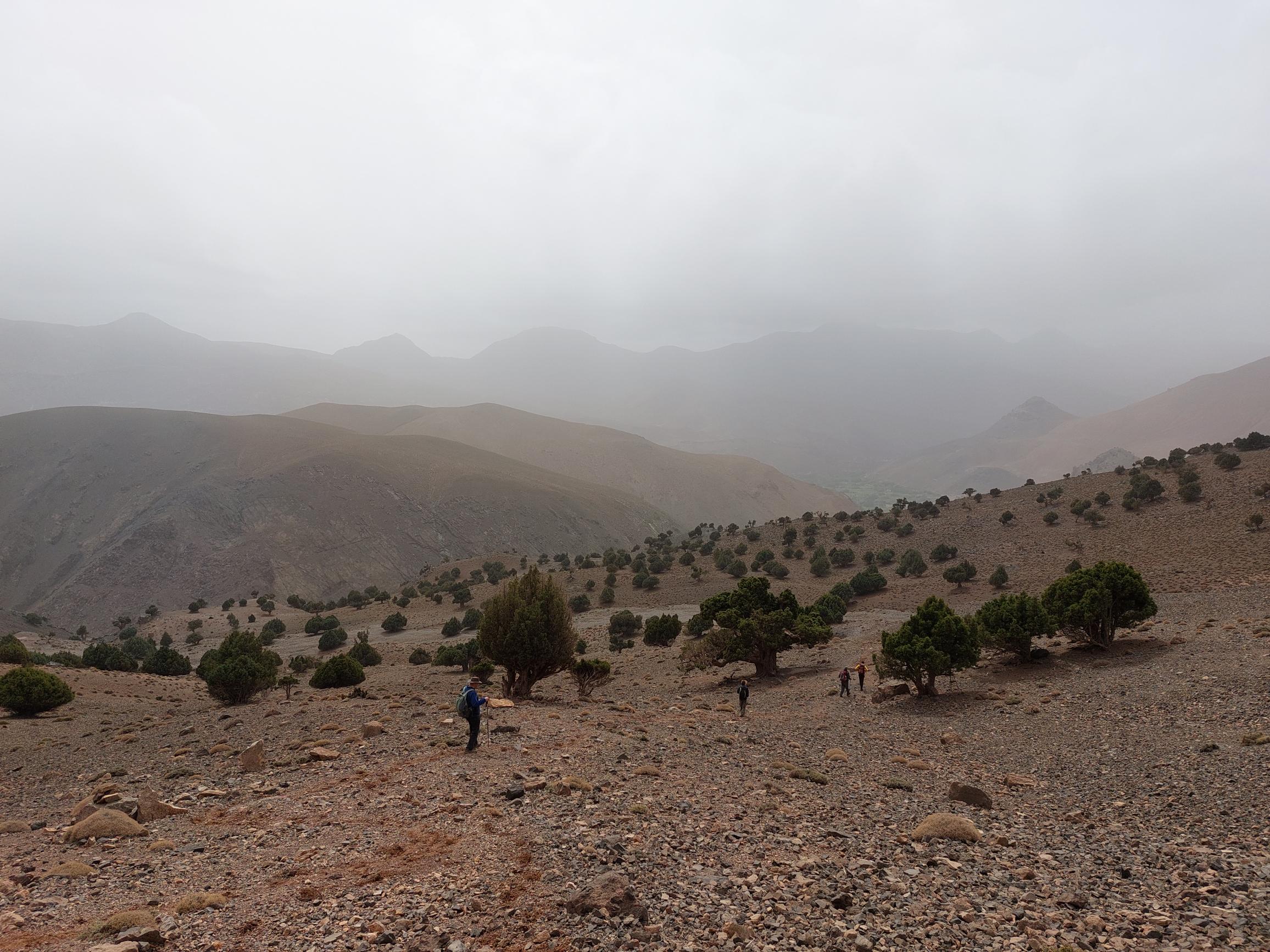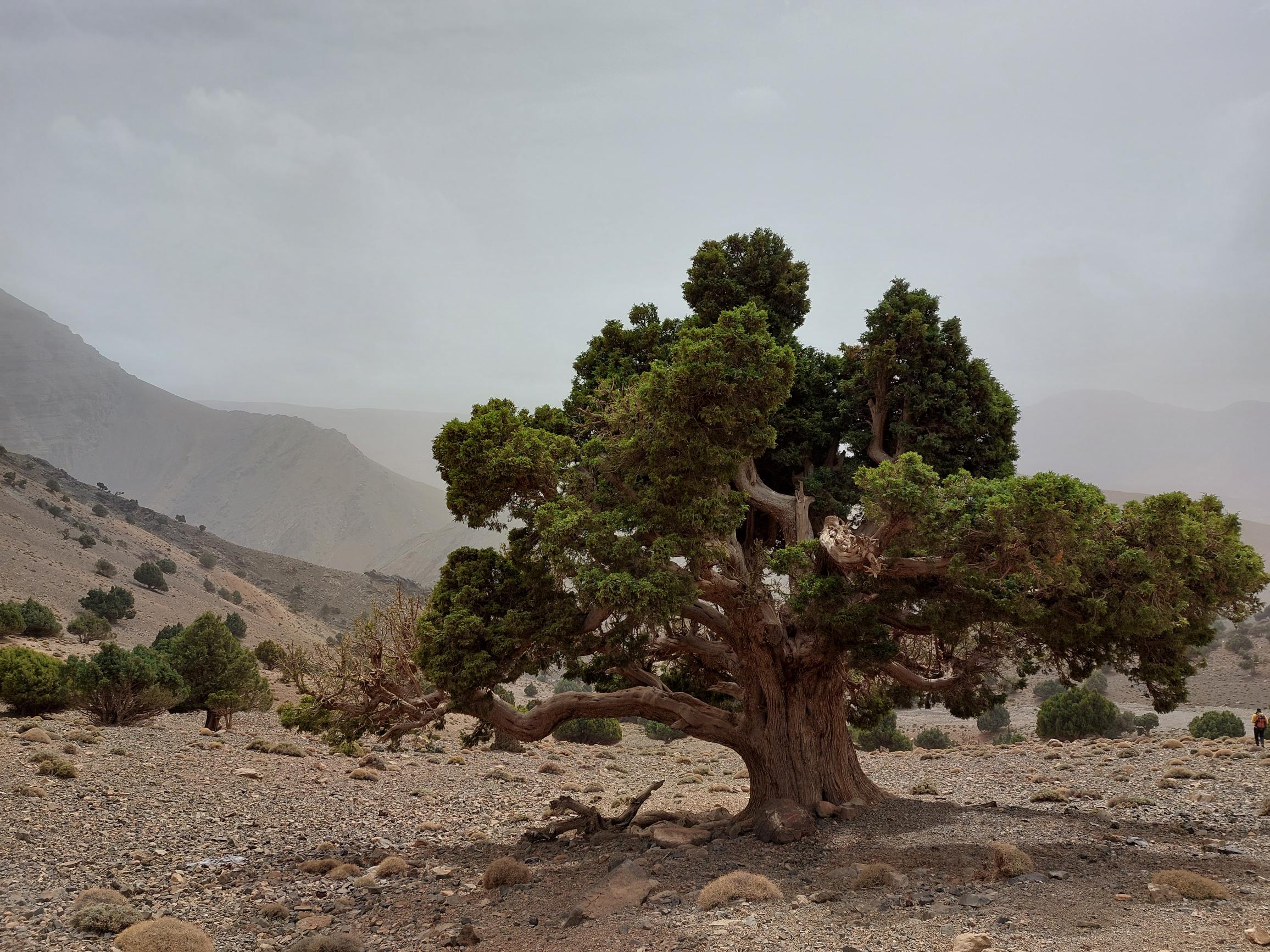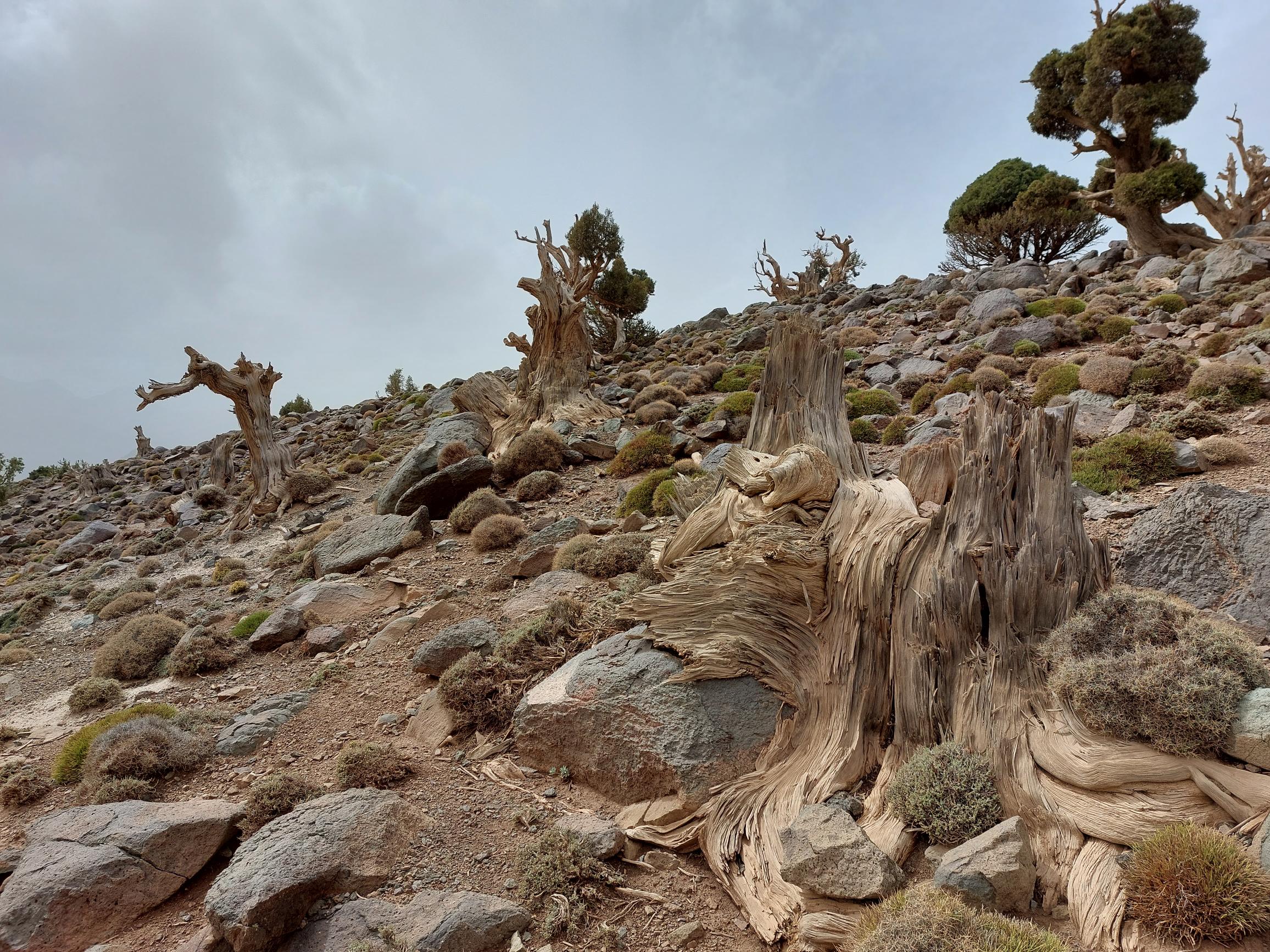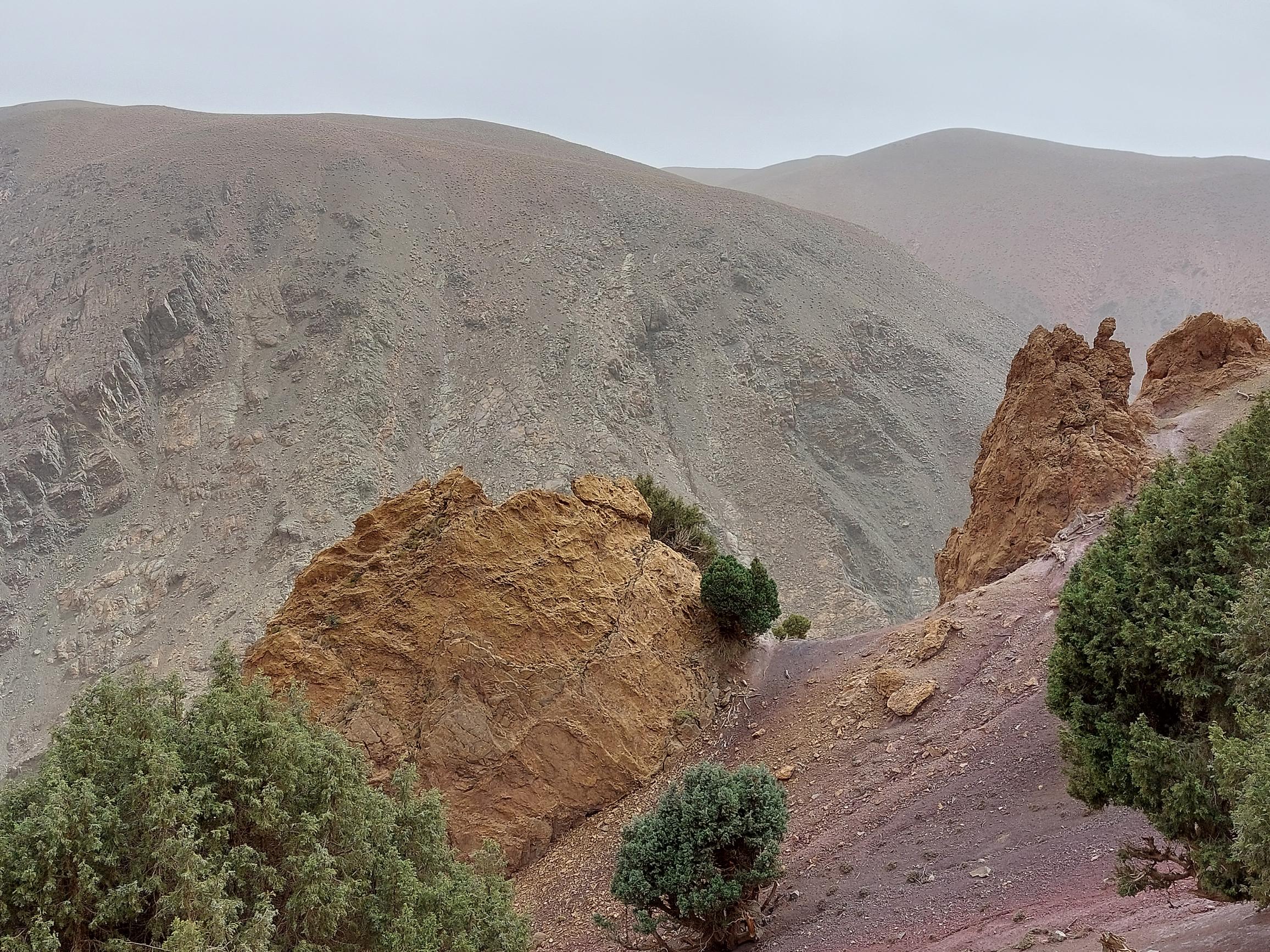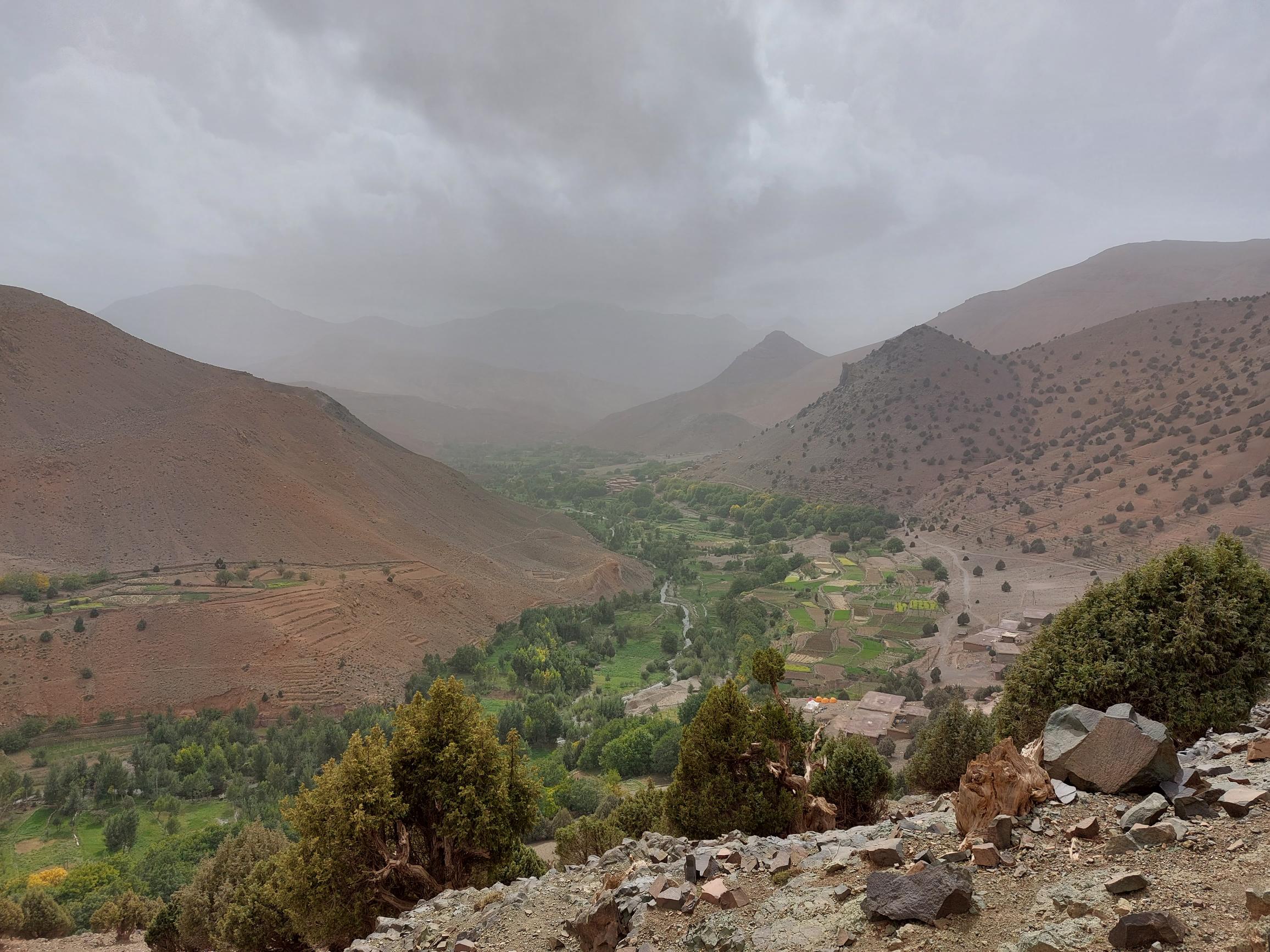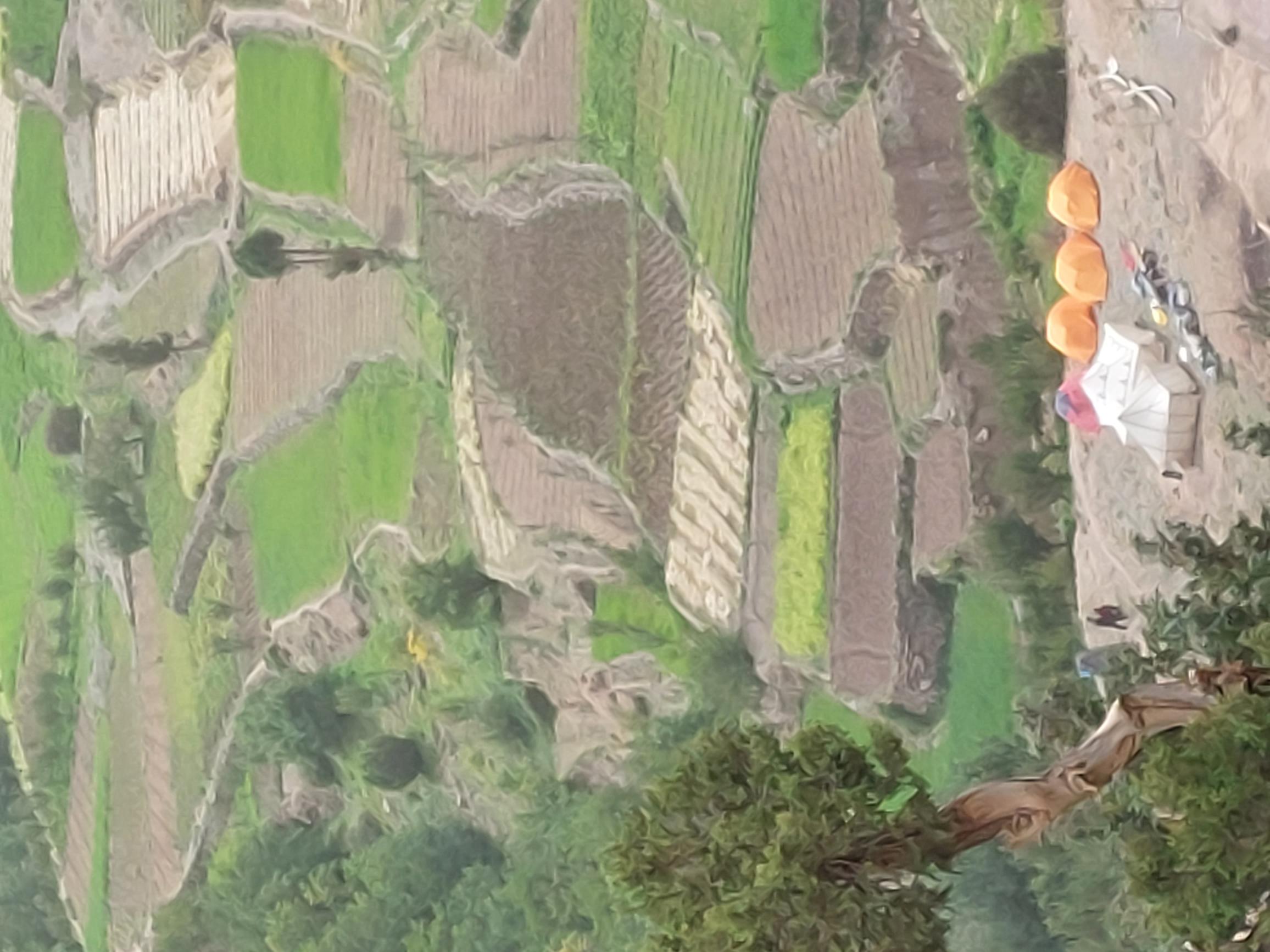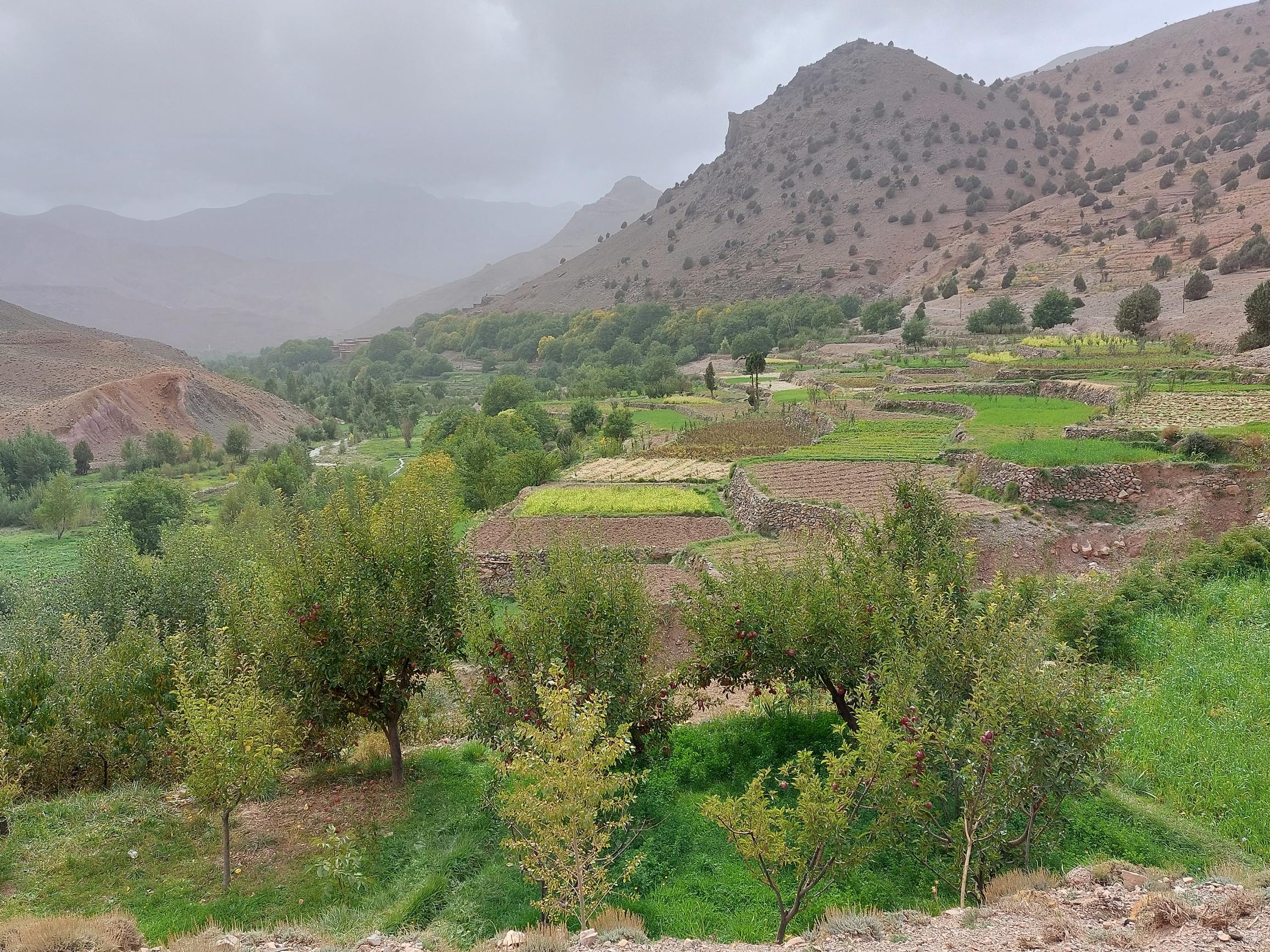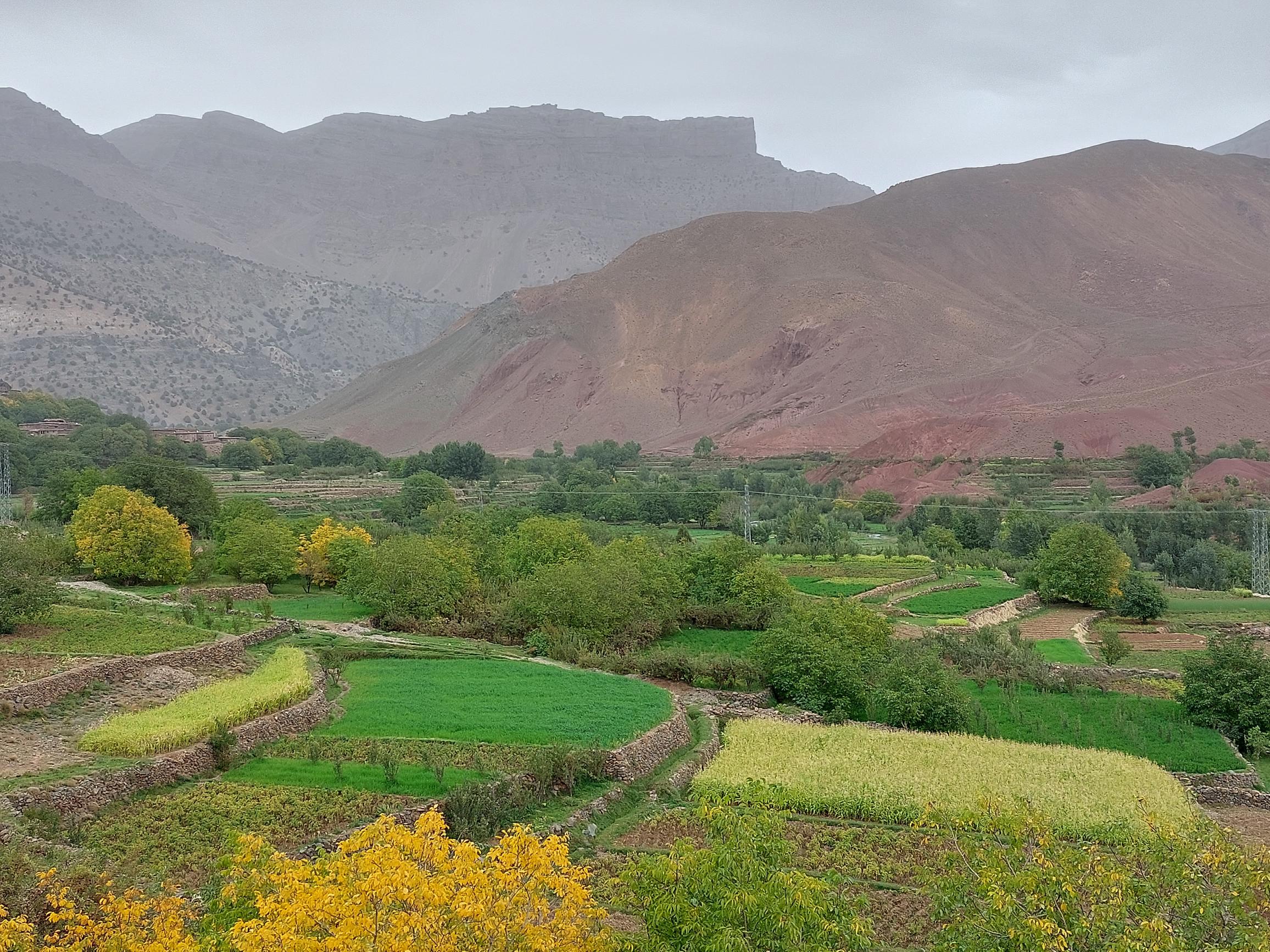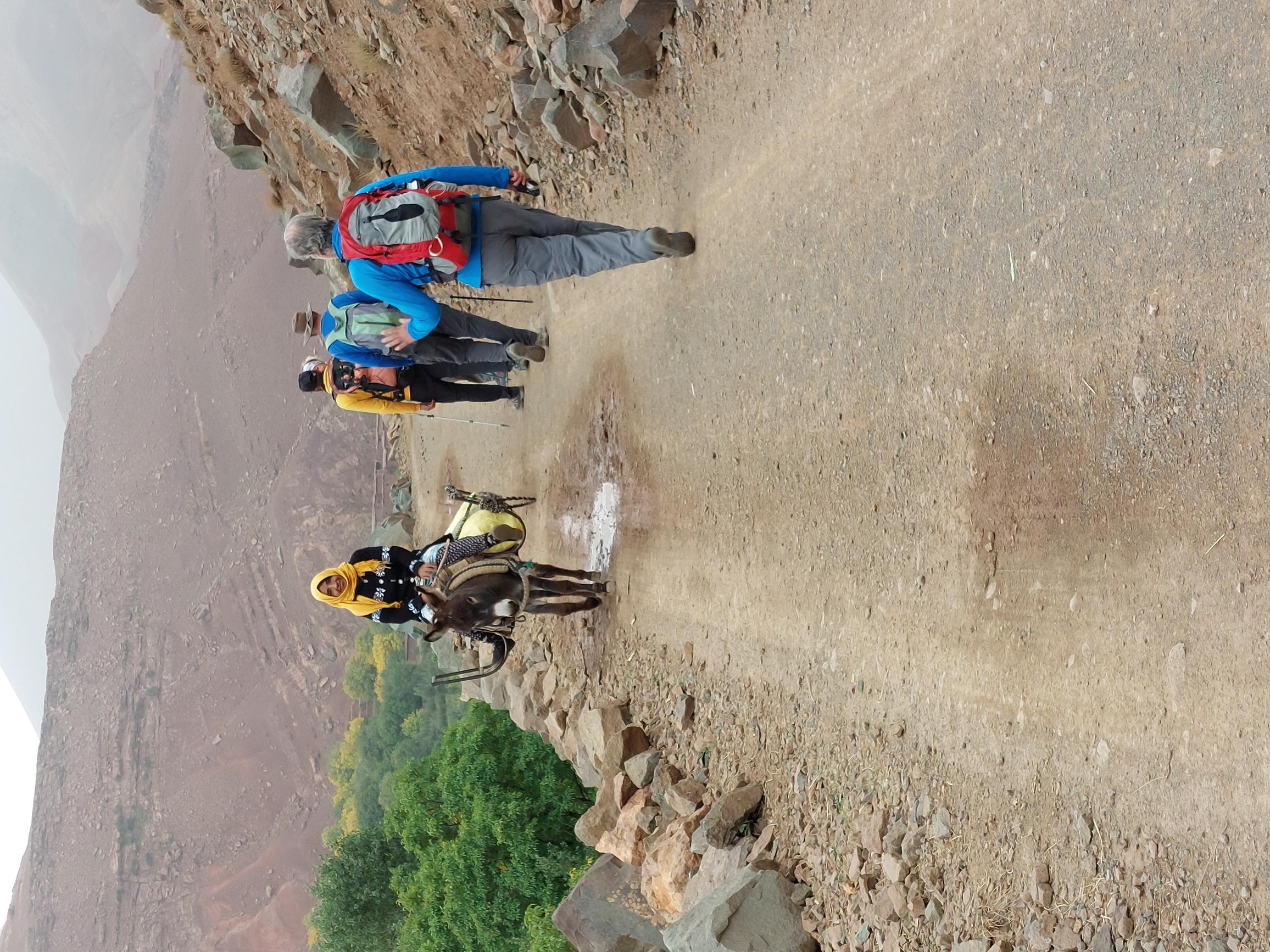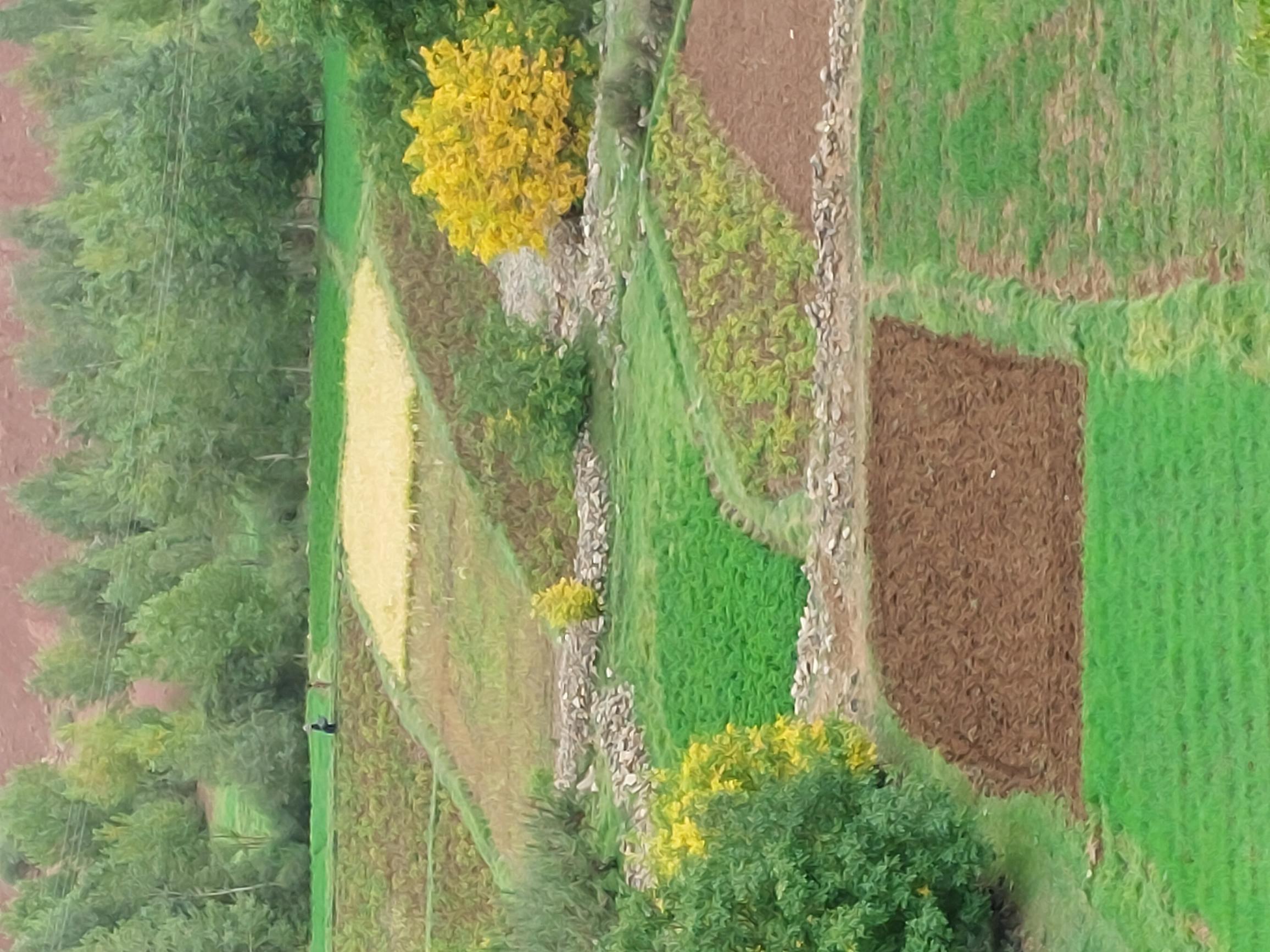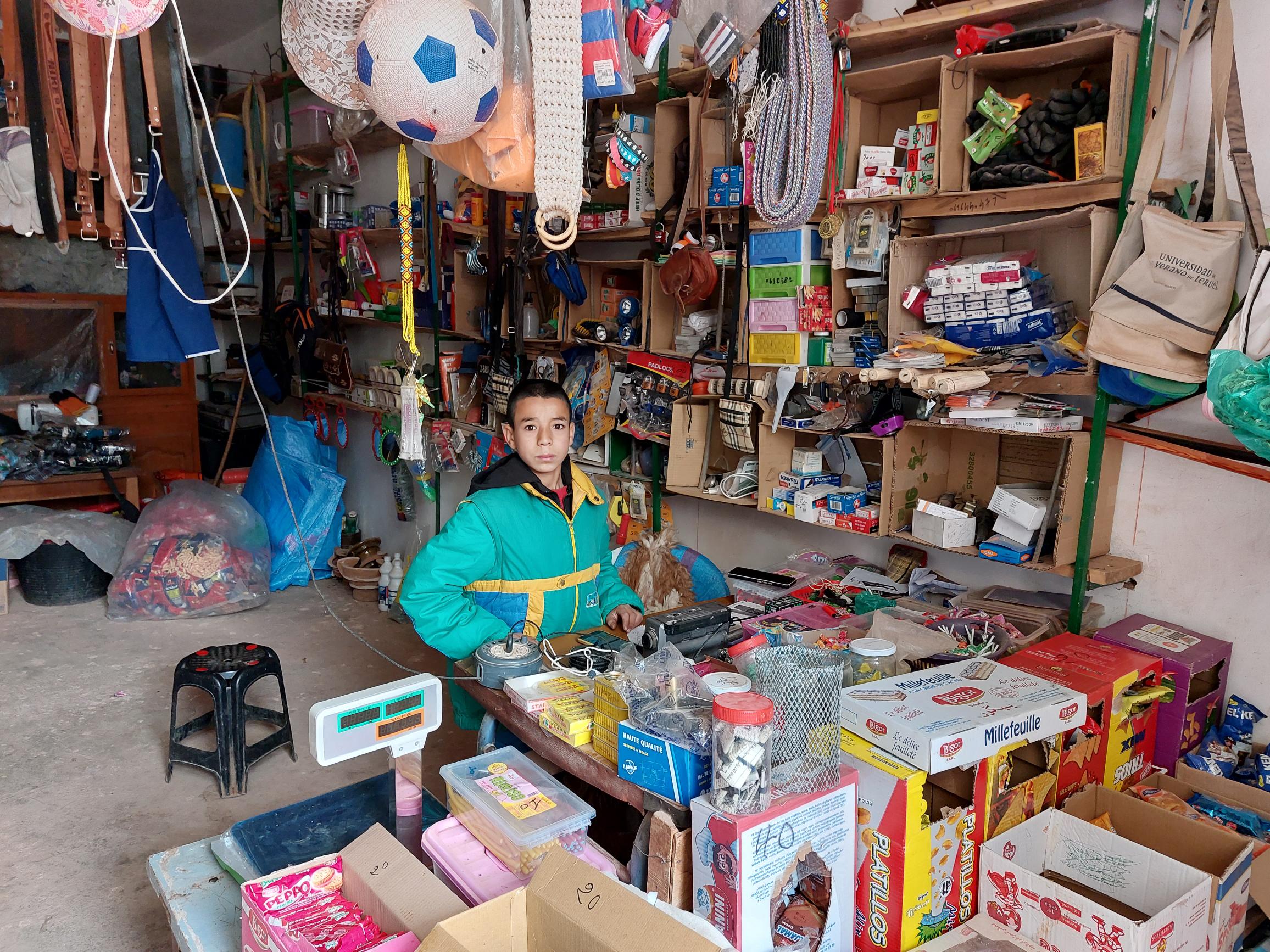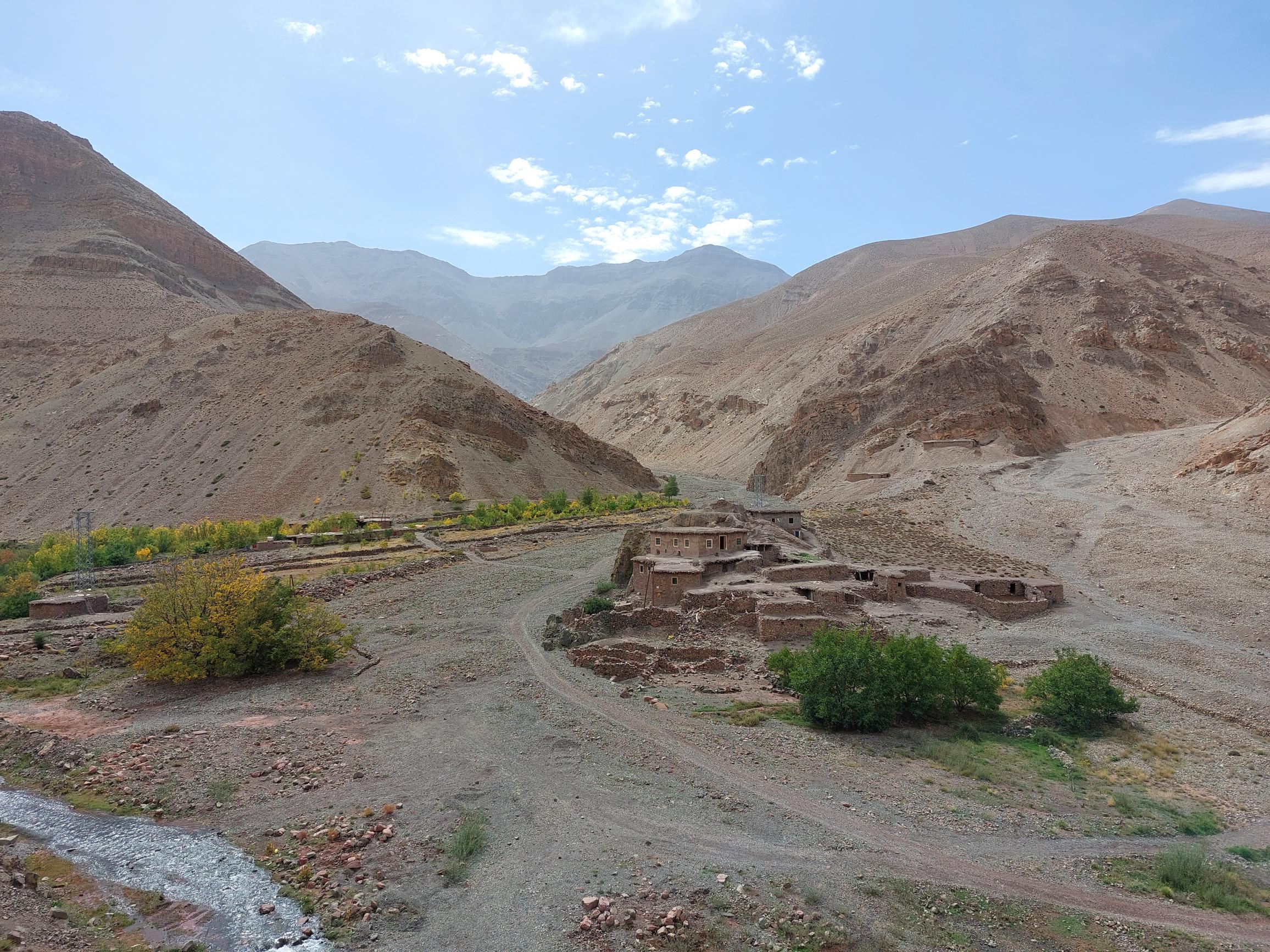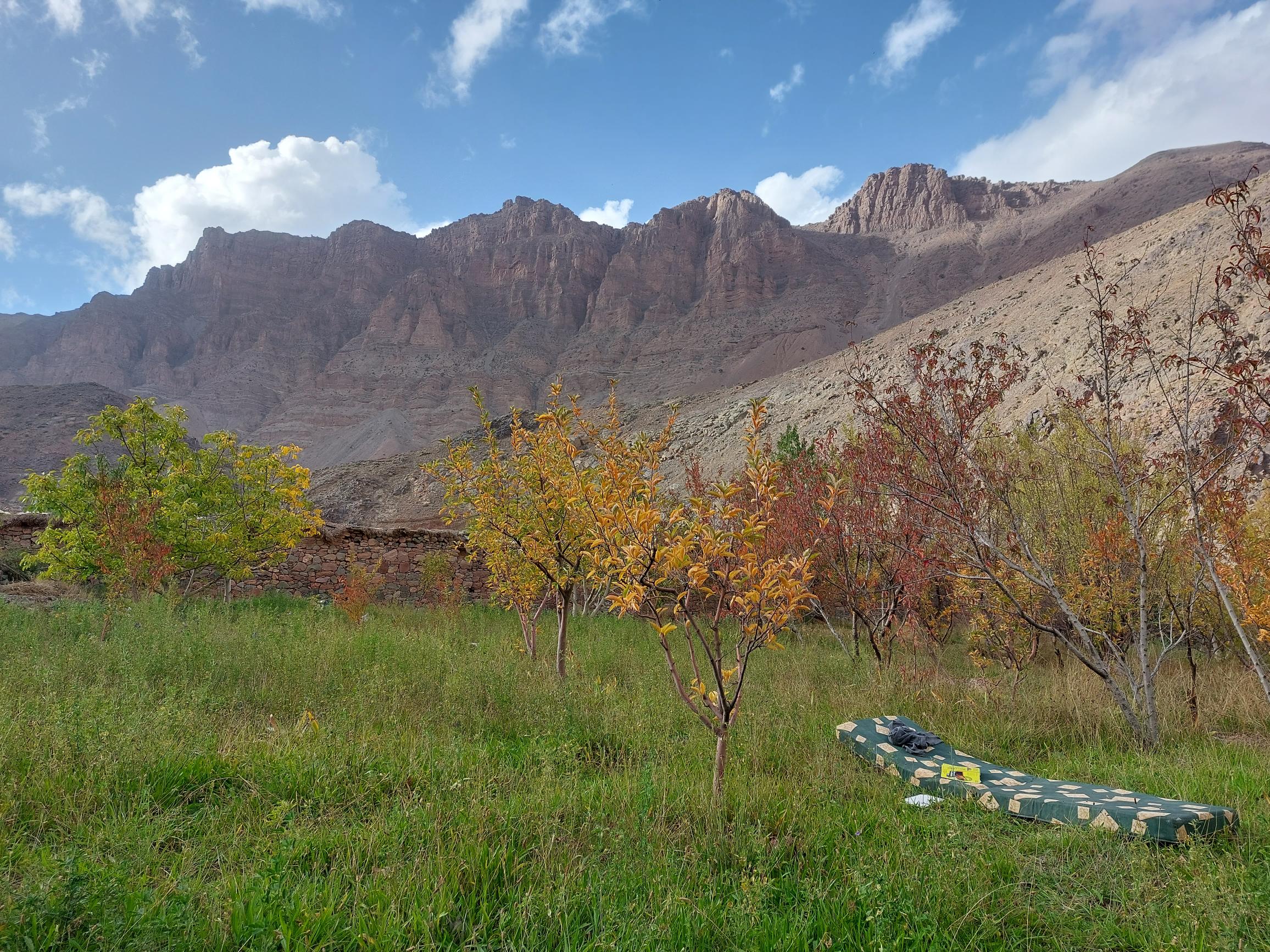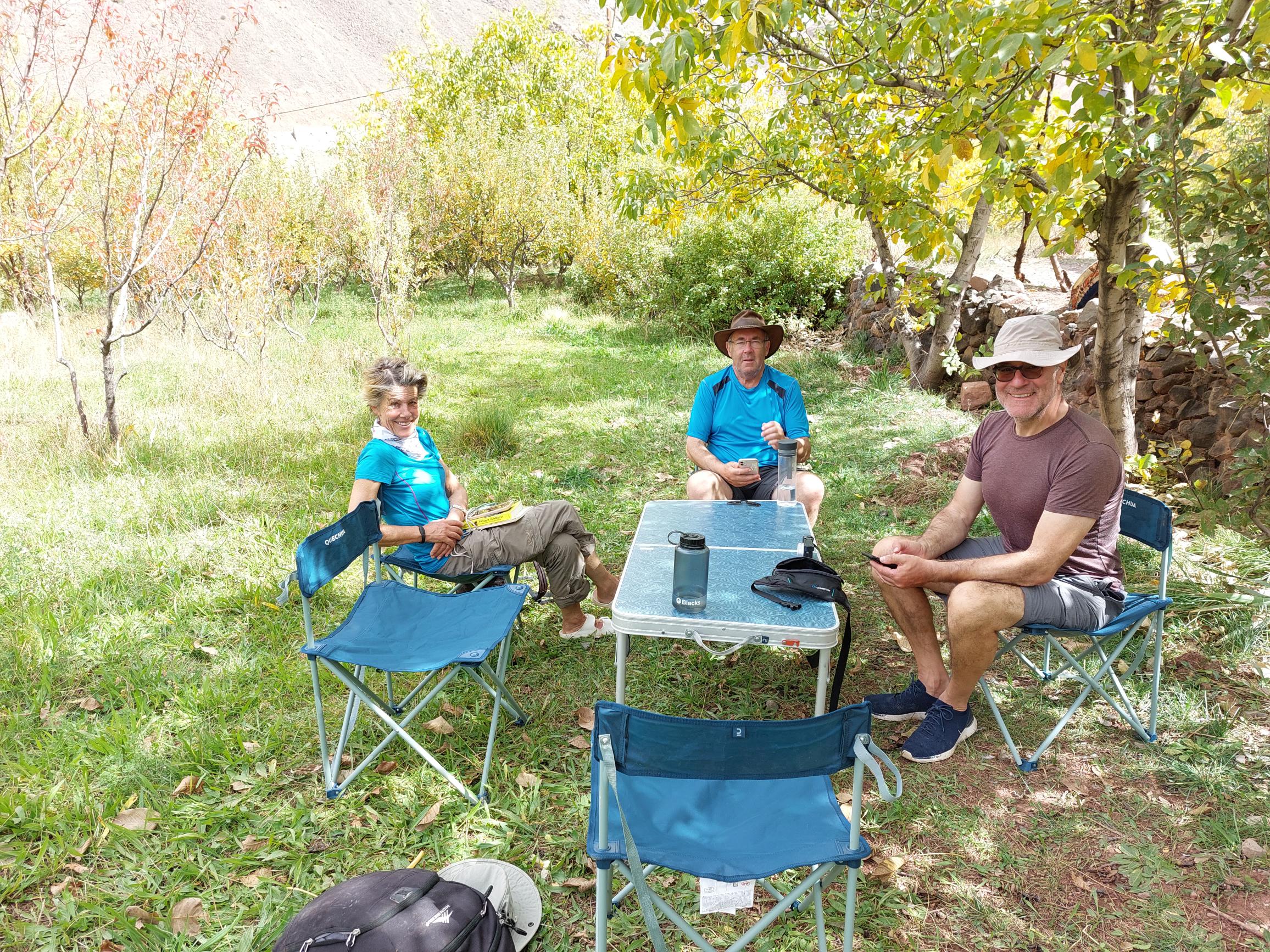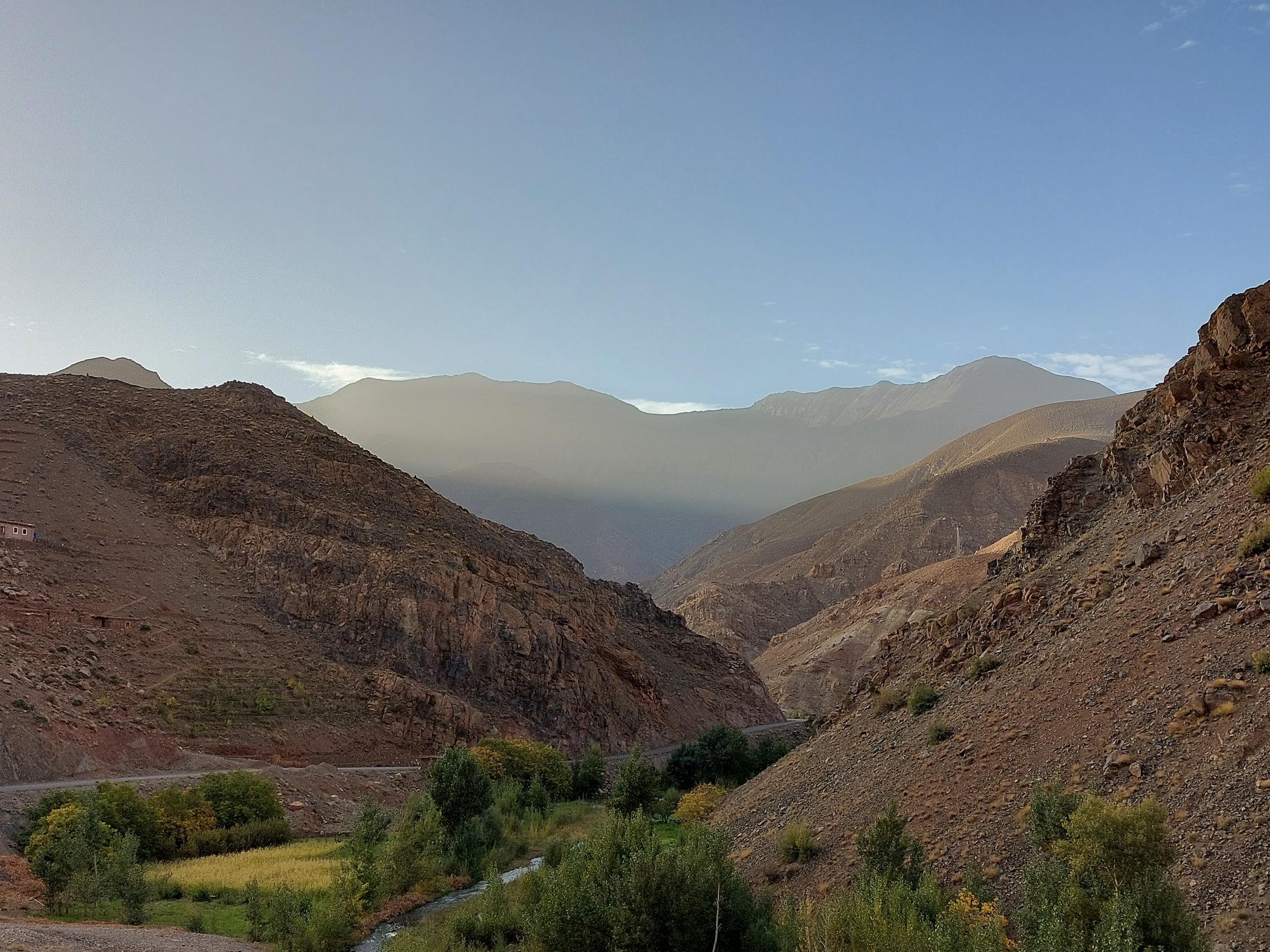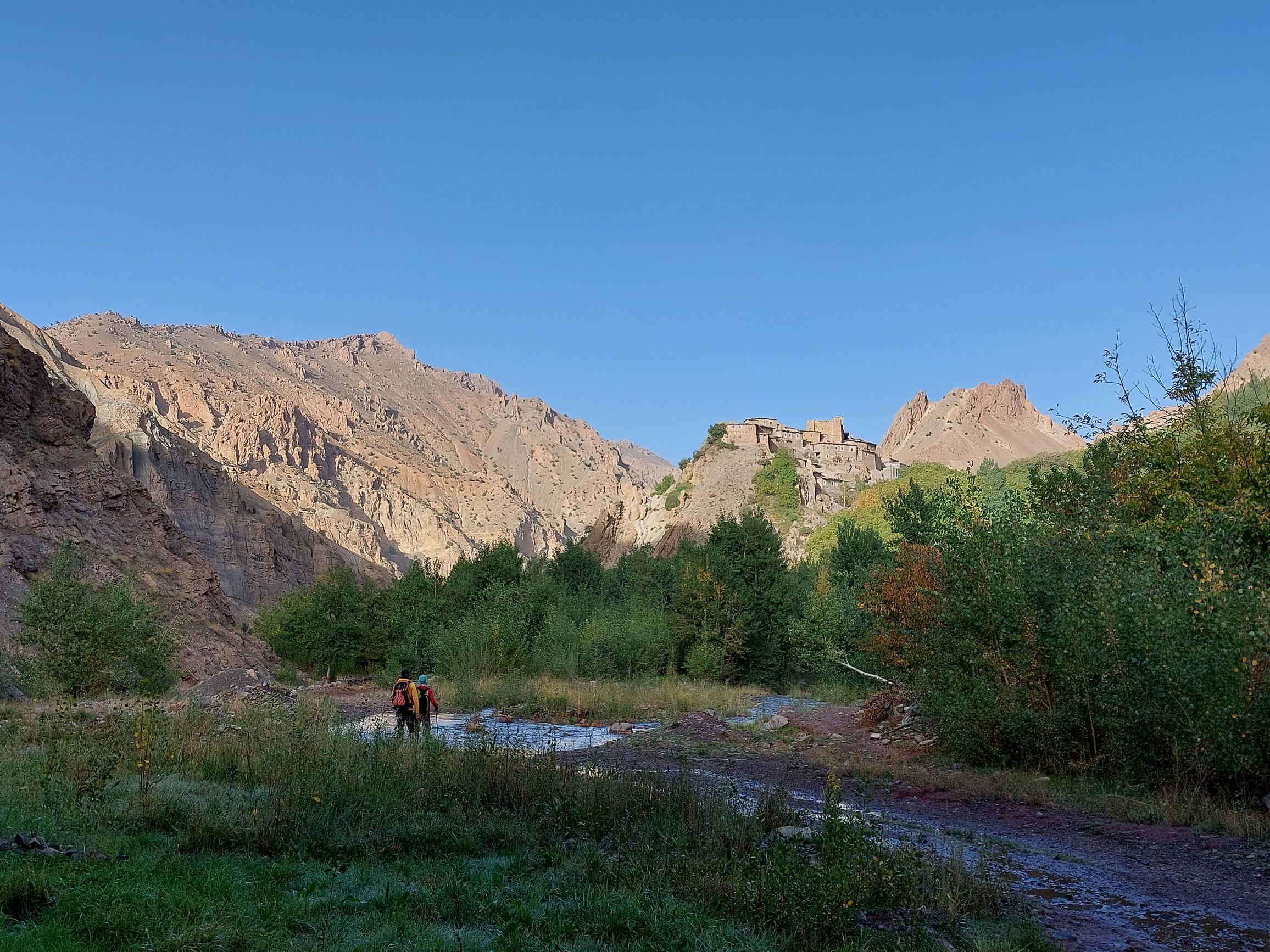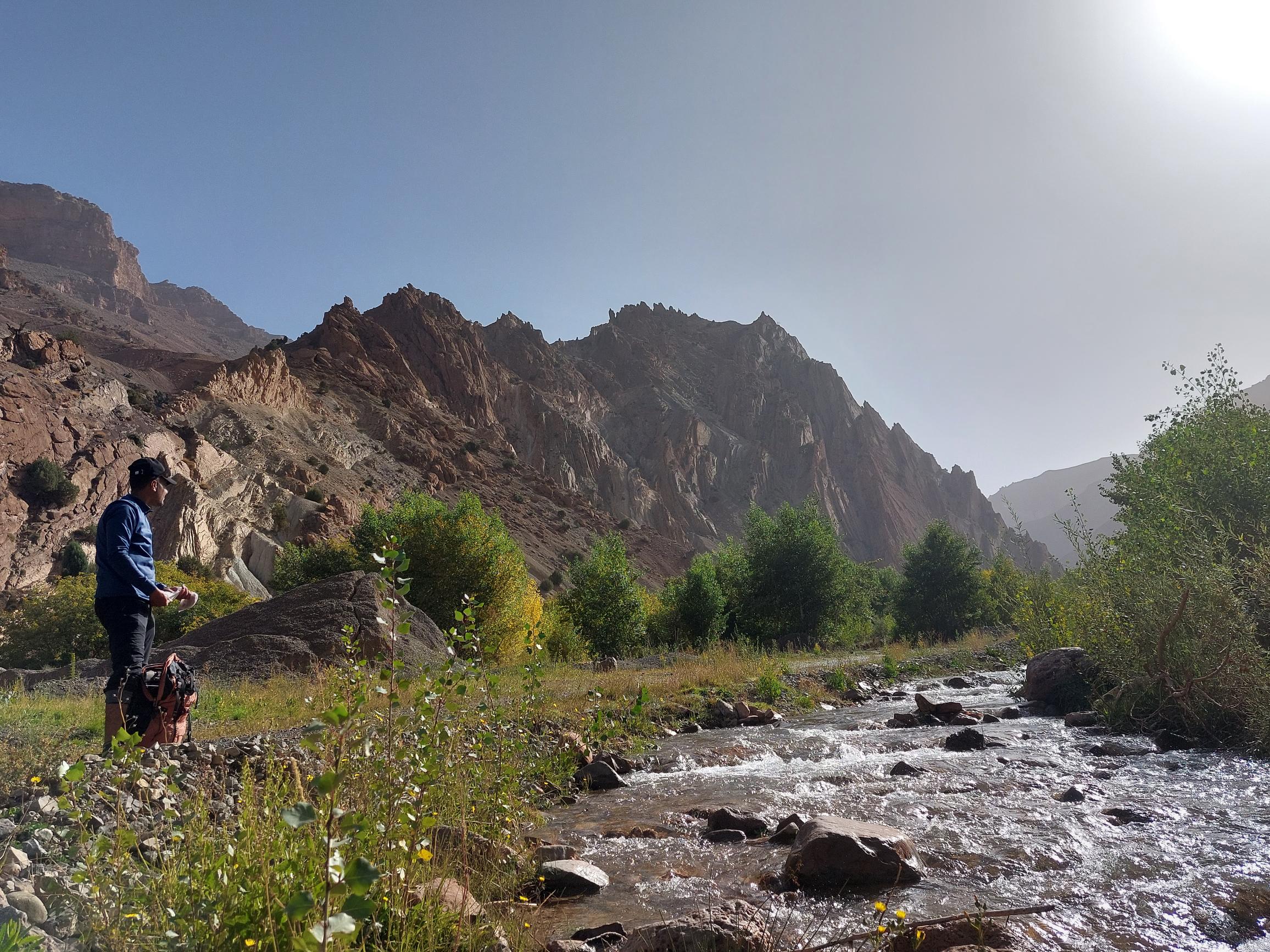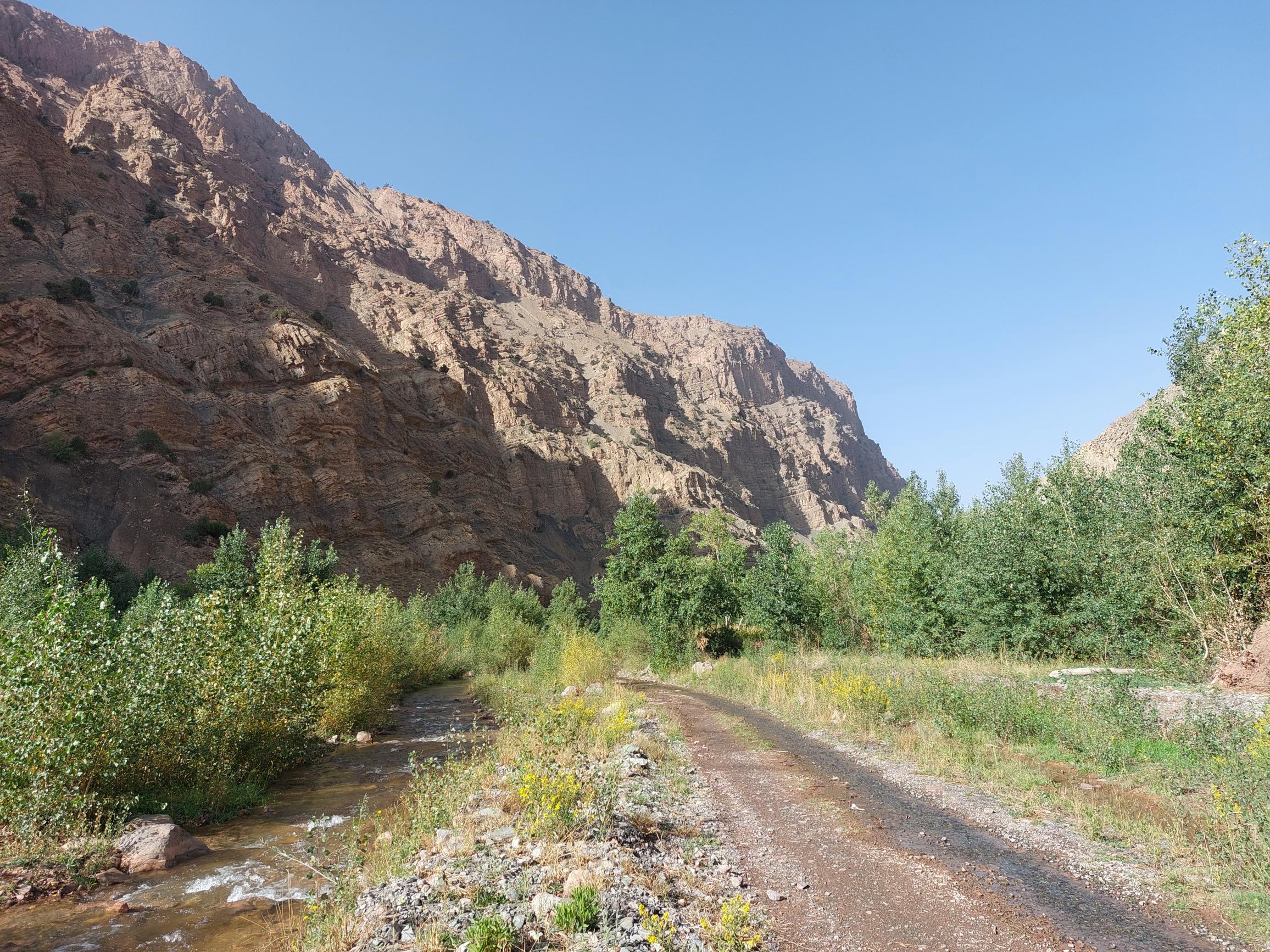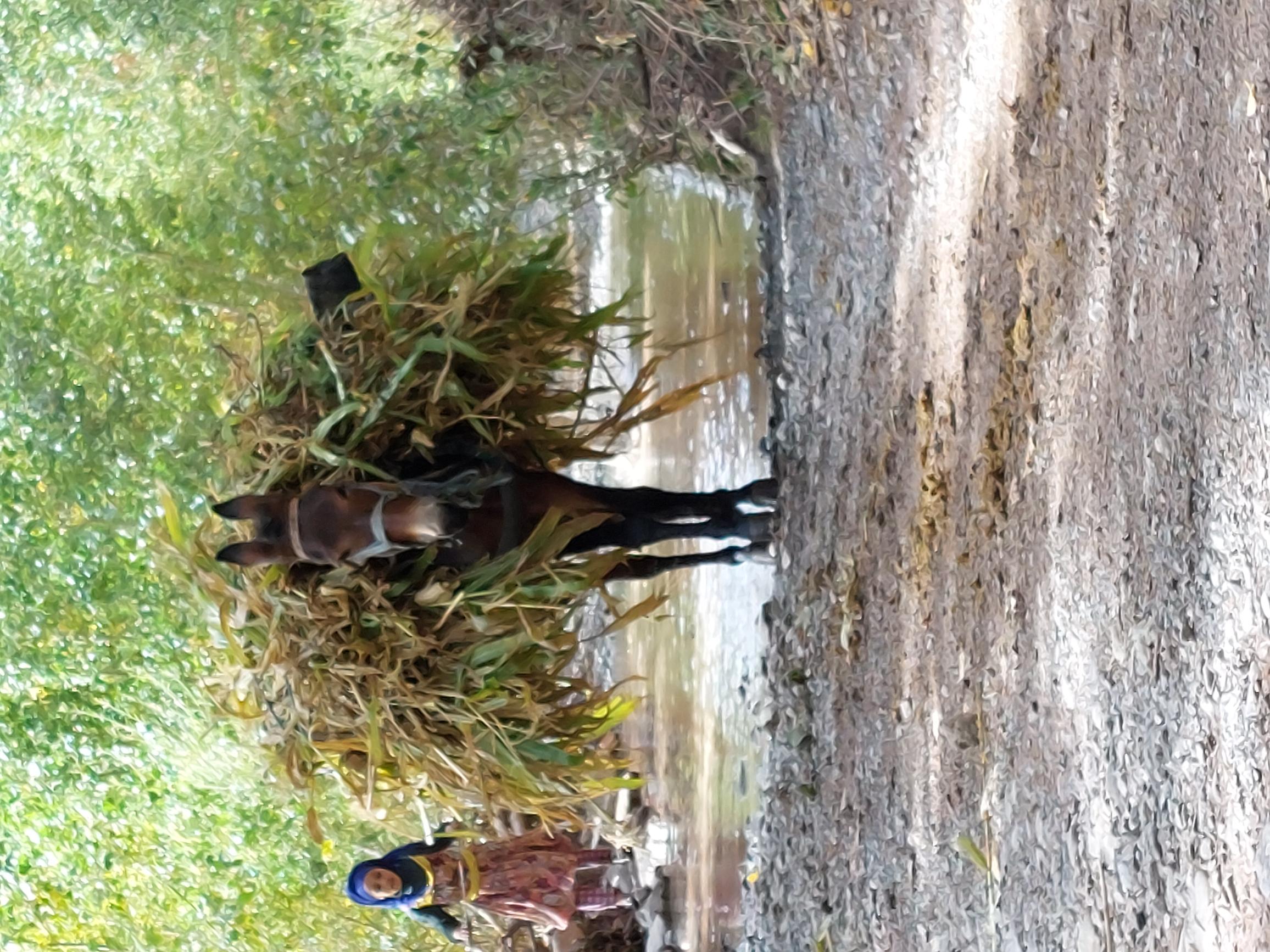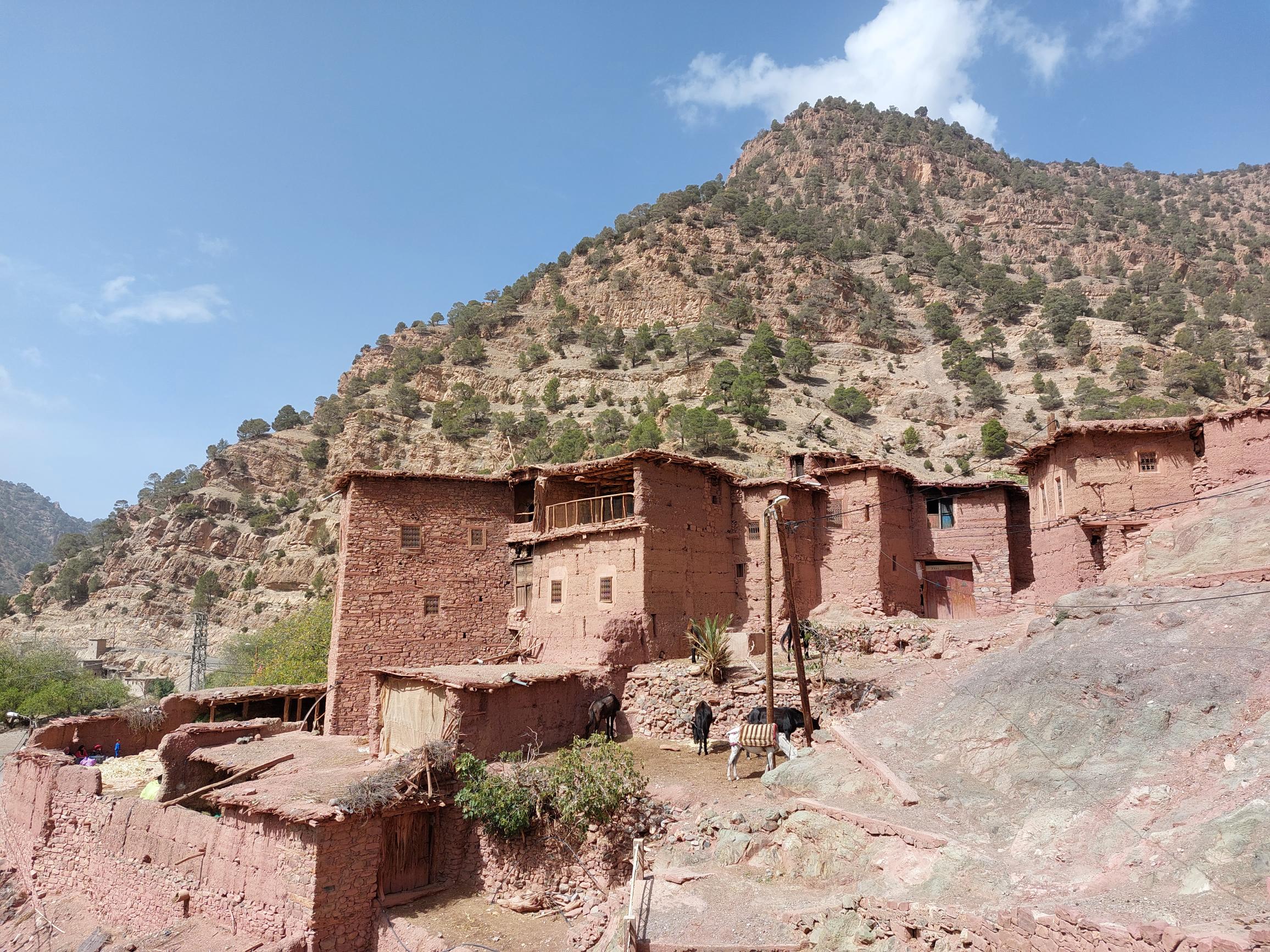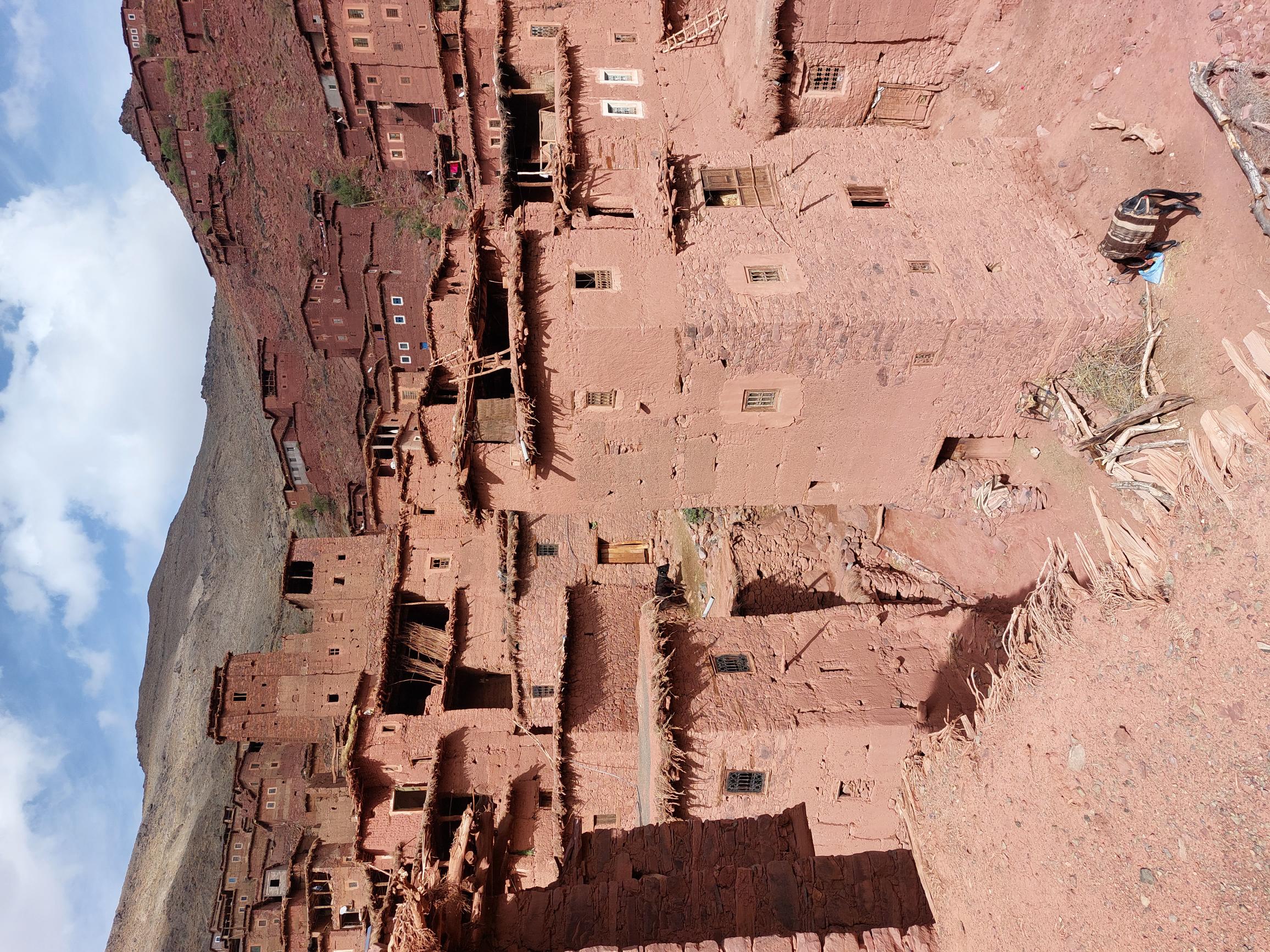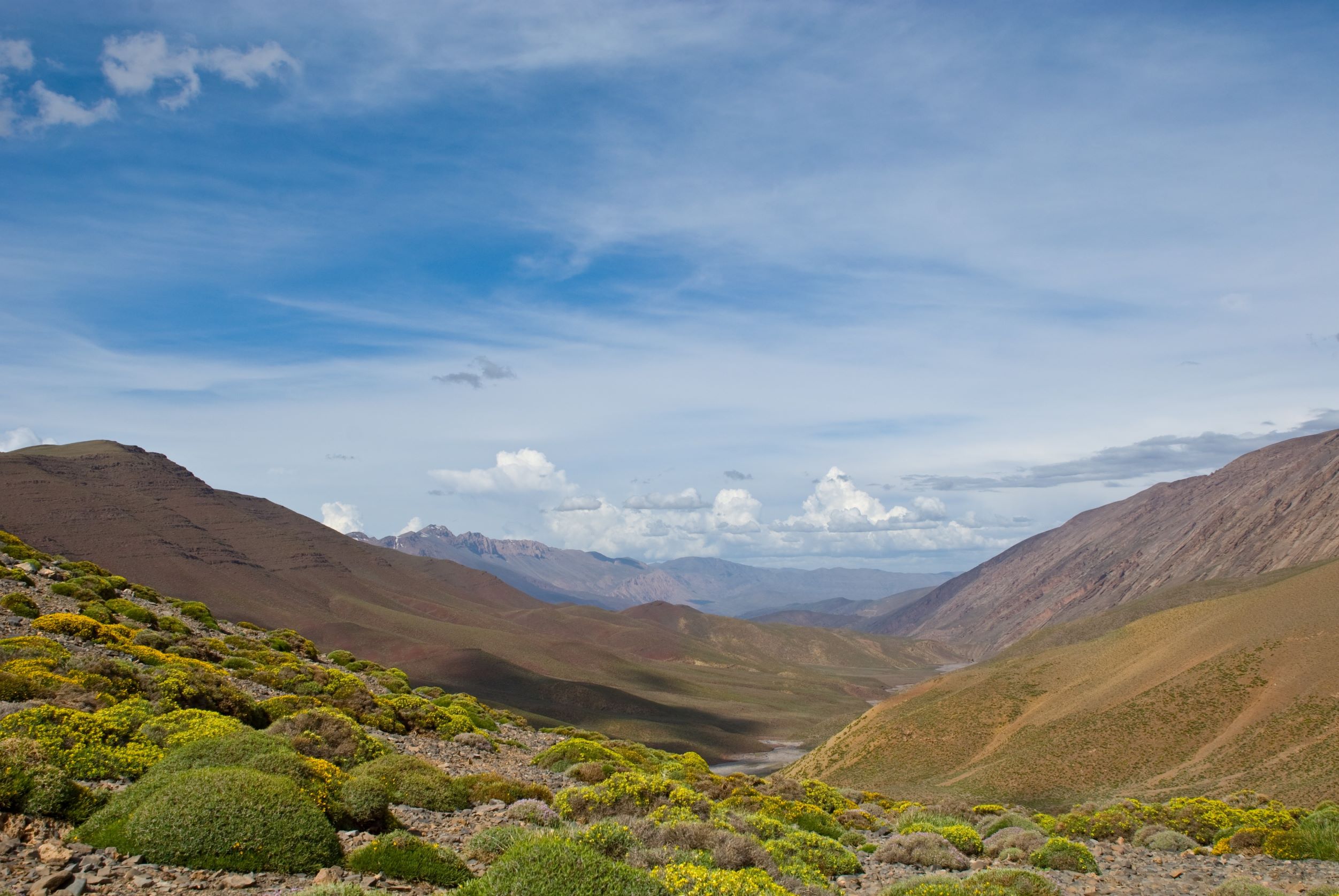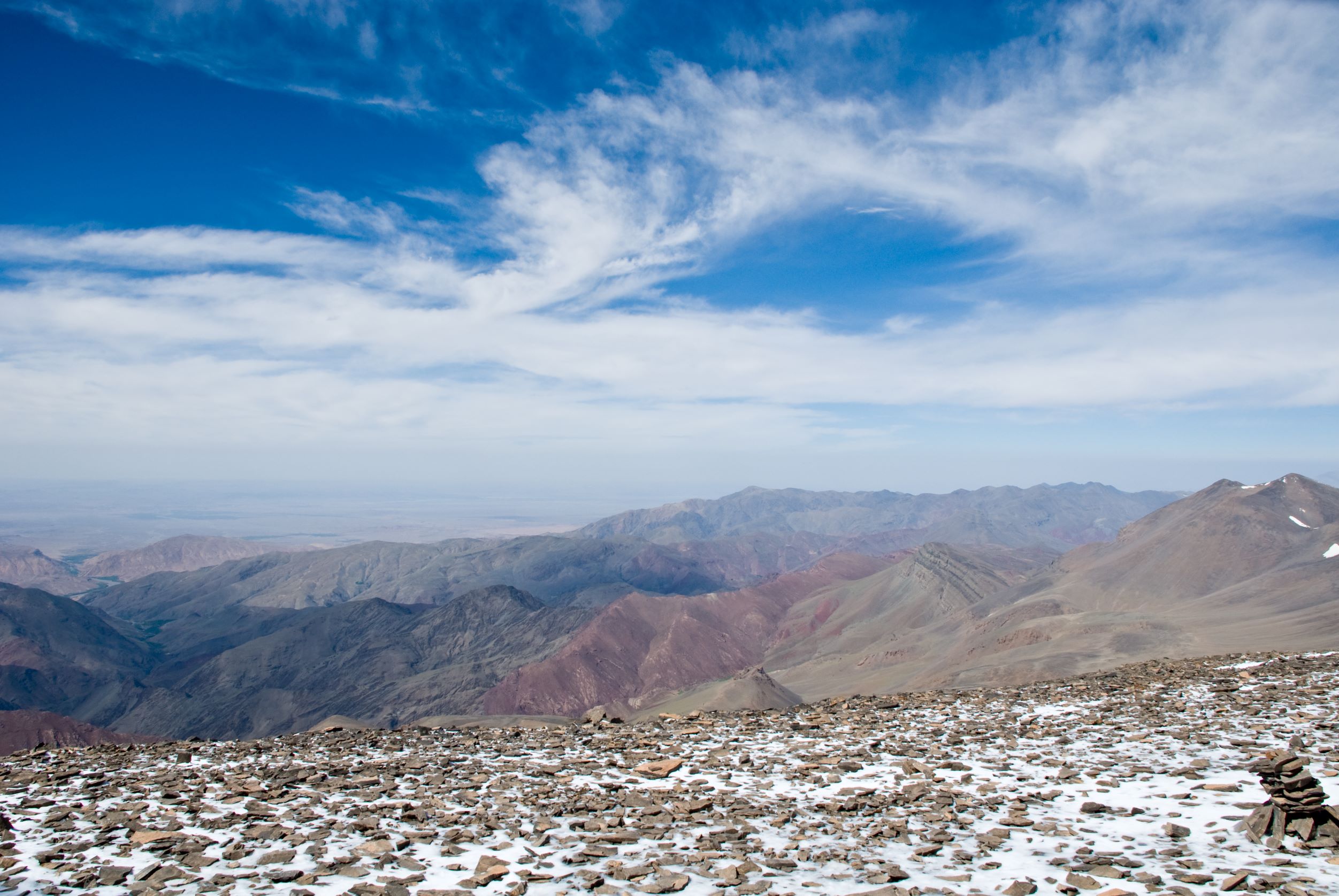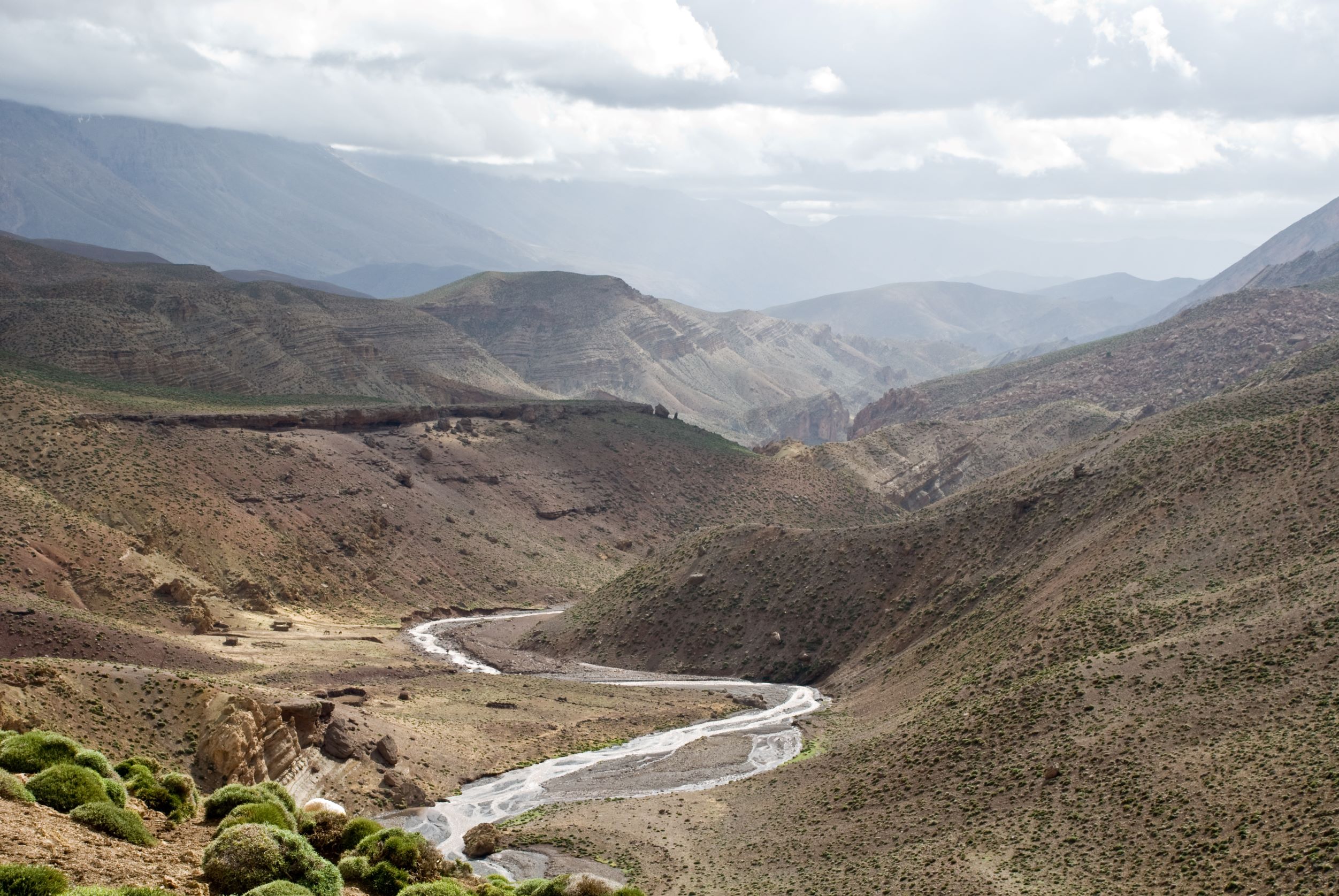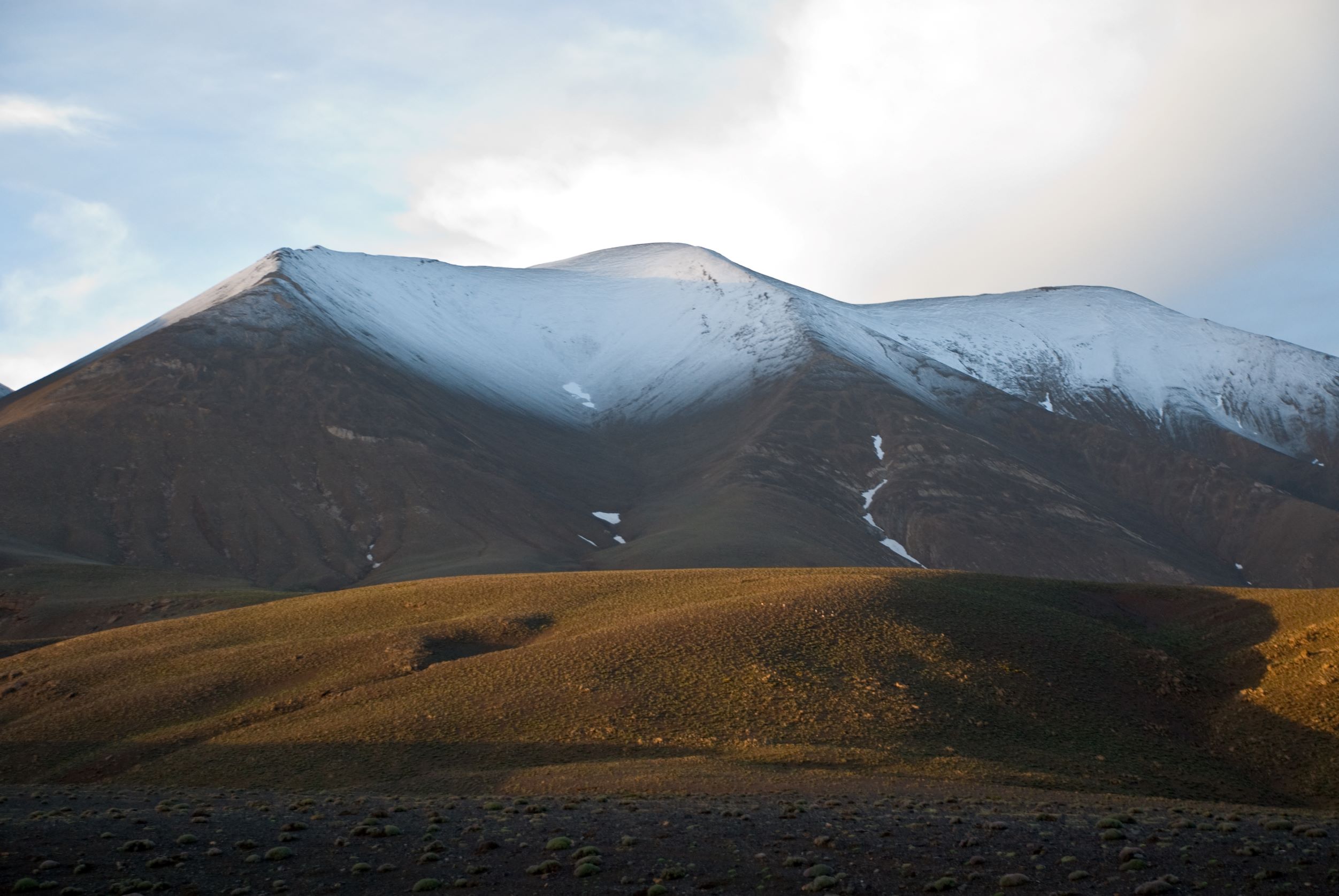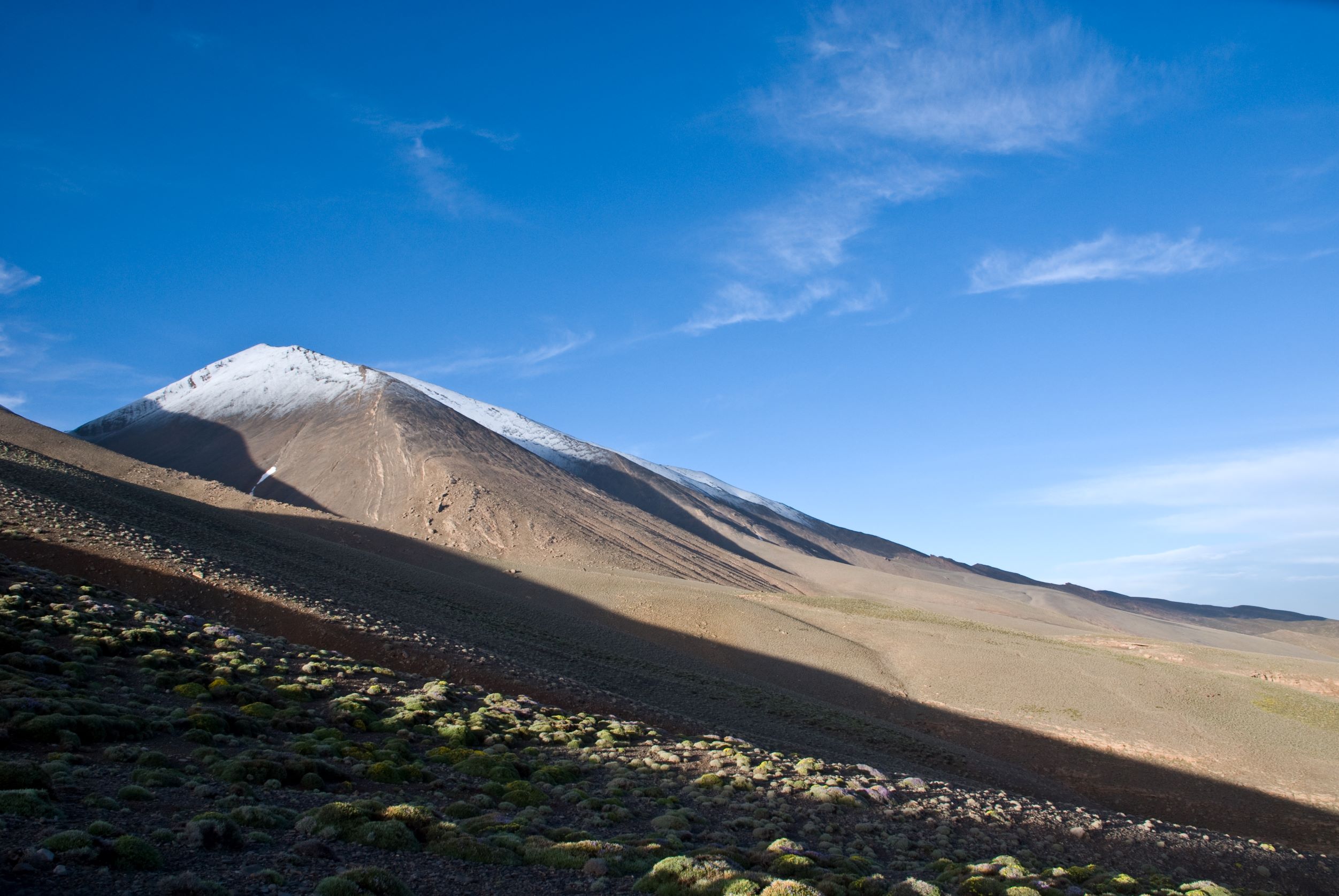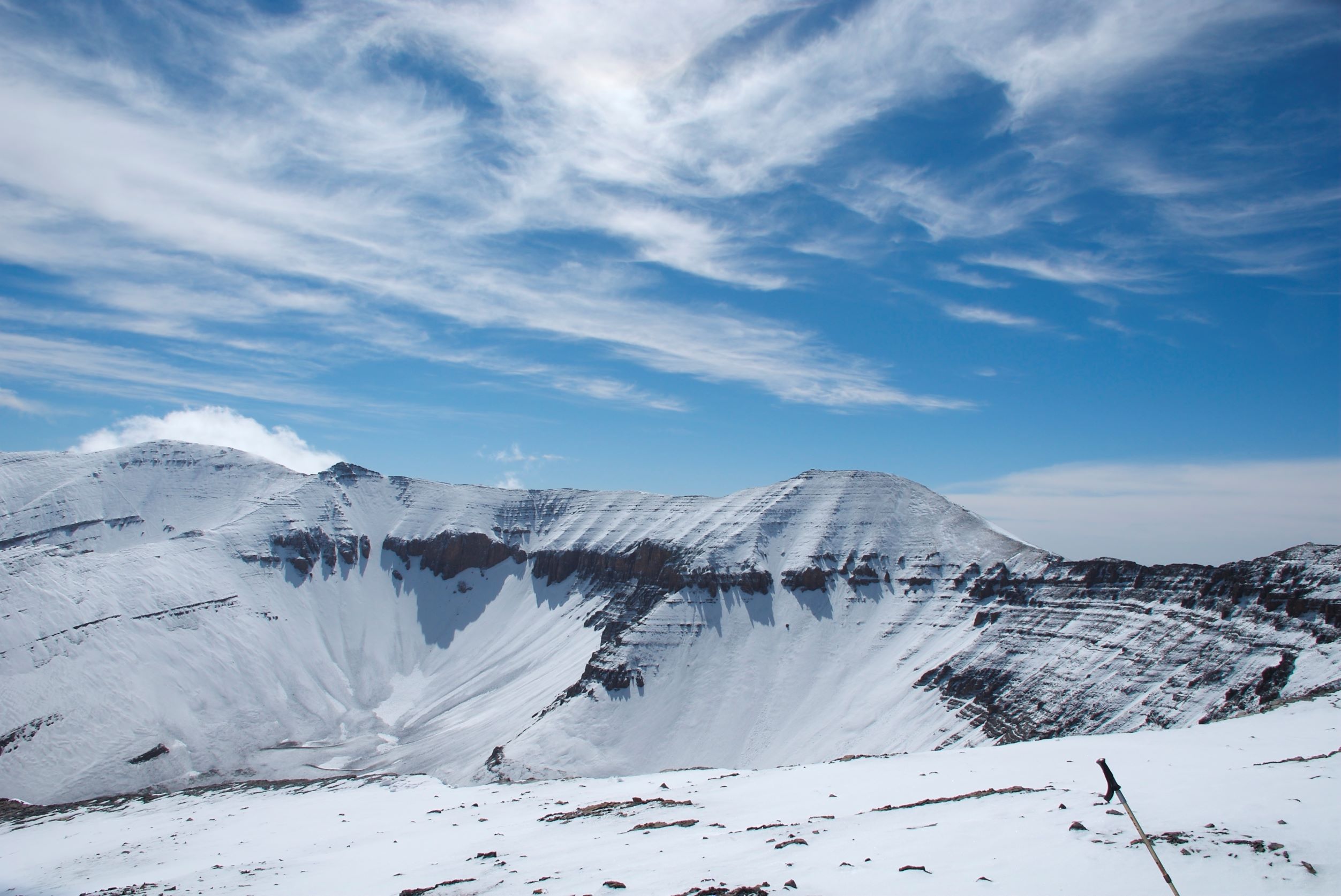MGoun Traverses and Circuits
Key information: MGoun Traverses and Circuits 
- The M’Goun, Morocco’s “other” massif over 4,000m, is a walking gem. Think deep, colourful and dramatic gorges separating high and thrilling ridges, crags, escarpments and barren slopes of scree with heavily-tilled valleys nestling remarkably unspoilt Berber villages at the fringes.
- There are several ways to circuit and traverse the range.
Walkopedia rating
- Walkopedia rating90.5
- Beauty33
- Natural interest15.5
- Human interest10
- Charisma34
- Negative points2
- Total rating90.5
- Note: Neg: altitude.
Vital Statistics
- Length: Variable
- Maximum Altitude: 4,071m
- Level of Difficulty: Strenuous
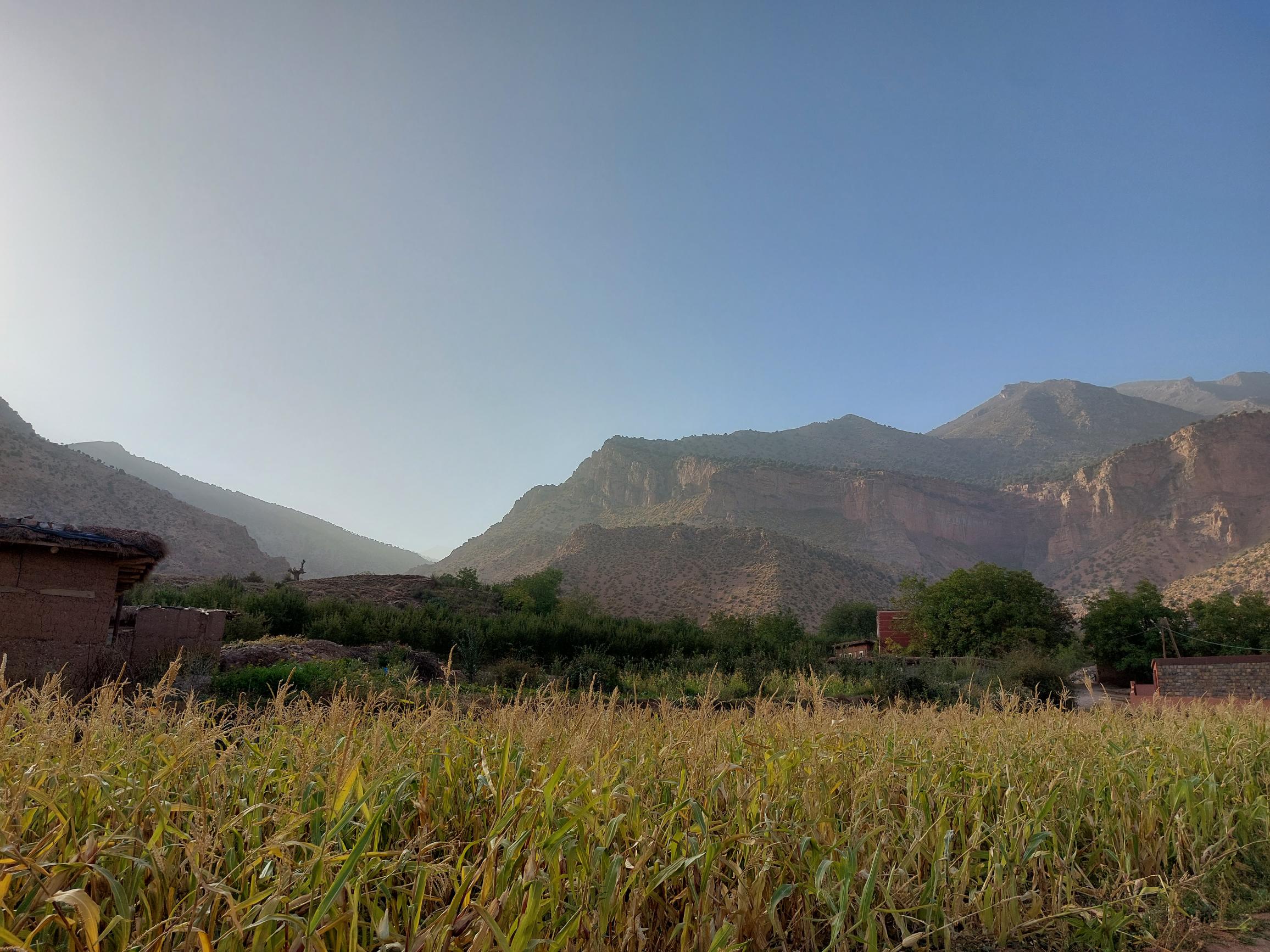
WALK SUMMARY
The M’Goun range, at the heart of the High Atlas, is remoter and lesser-known than the Toubkal area, but a gem nonetheless and the great range’s second most popular trekking area. Its high point, Jebel M’Goun (4,071m) (? - there is inconsistency here!), is the second-highest peak in north Africa, and one of Morocco’s sacred peaks. Very different in nature from (and Walkopedia thinks it more beautiful than) the Toubkal area, M’Goun is largely eroded sandstone and limestone: think deep, colourful and dramatic gorges separating high and thrilling ridges and escarpments. It is a touch less harsh than other Atlas areas, with a bit more vegetation and perhaps more prosperous valleys.
The landscape can be orientated around a long main ridge which includes the highest peaks. The accessible Bougmez valley to the north is the main trek-head. You can also start walking from roadheads to the south and north-west.
Circuits
The various multi-day circuits south of the Bougmez valley, taking in the high M’Goun ridges, are well used, with good cause. The mix of the drama of high peaks, ridges and passes with deep and pleasing valleys nestling traditional Berber settlements, taking in gorges, the Tarkeddit or Tessaout Plateaux and some outlandish landscape, is inspiring.
It takes a couple of days, ascending through classic Berber cultivated valleys and crossing a high pass or two, to get to a camp below the central M’Goun ridge. On day 3 you can climb M’goun’s peak itself, a proper trekkers’ peak (with some mildly exposed sections). This long and tiring day on the extraordinary high, narrow M’Goun ridge with its vast cirques to its north and the dry foothills receding Sahara-wards to the south, winding along over minor peaks to the final summit, has to be one of Morocco’s two great walks and in Walkopedia’s view, more enjoyable than Jebel Toubkal.
Subsequent days might take in huge canyons, remote valleys and other delights.
Traverses
The circuits can be extended or varied to make various forms of even better traverse across the range, for instance:
There are various traverses which take in the Jebel M’goun summit, including the walk that Walkopedia chose, a 6-day hike from Agouti in the Bougmez valley, up the Arous valley across a high pass to the high Tarkeddit plateau, an ascent of Jebel M’goun, a superb high crossing of the high ground to the outstanding Tessaout Valley in the south-west then two delightful days walking down that valley. See our account below.
The (up to) six-dayer from Tabant or Agouti to Aït Tanlil, in the Tessaout Valley via the 2,860m Tizi n’ Rouguelt pass, taking in valleys and Berber villages including the World Heritage Site Magdez, claimed to be the most attractive in the M’goun, as well as high country, with big views. Not as high or demanding as those which take in the M’goun summit.
Another option (and a justly popular one) is Tabant to El-Kelaâ M’Gouna, a 6 day route south-east from Tabant, which crosses the highish 2,900m Tizi n' Ait Imi pass then follows the Assif M’goun river and includes paddling in the narrow Achabou gorge, so check conditions before you start. There are places to stay (gîtes) on some fringe routes, so you can travel lighter. You miss the great peaks, but enjoy stunning variety.
Another shorter (4 day) and less altitudinous hike takes you from Agouti down the Bougmez valley then up across the 2,860m Tizi n’ Rougoult pass and down into marvellous Tessaout valley in the south-west.
www.tourdust.com organise an expedition here: we have travelled with them, and were delighted. They were very nice and flexible to deal with, and evidently cared about quality, as their walk was meticulously prepared and our support team were outstanding in every way. We are proud to be their partners.
Please help us by recommending your best walks and making suggestions and sending photos! Thank you!
See our M’goun massif page for general and practical information.
OUR FRIENDS' EXPERIENCES
Day 1 – To Upper Arous Gorge
We start from Agouti in the Bougmez valley to the north of the M'goun massif at 8.10 after a reasonably efficient pack and good breakfast.
It is always an exciting moment, full of anticipation. We cross the stream and set off up a dusty track through orchards alive with apple pickers.
We soon get our first taste of the of life here. We cross an irrigation channel and in an instant we are trudging over a barren little plain, to cross small gorge to a village sitting in its rich fields, with fierce cliffs behind. It is strikingly pretty in the clear morning light.
The street is lined with walnuts, many ancient. Our guide, Hakim, leans into an apple-picking lorry to speak to the driver, his brother.
At the river beyond the village, we turn right, to start a steeper climb up its rough and barren gorge. We pass shelter-caves up a loose cliff-face made by prehistoric inhabitants and emerge into a gorgeous wide upper valley of close-cropped meadows and tiny fields and sit at a summer hamlet, drinking in the beauty and atmosphere and autumnal warmth.
We wind on delightedly through the fields, climb to a deserted village Azib Arouss, and turn up a steeper side valley. We get to our campsite at round 2,200m at noon, a rough place but with an irrigation rill and its grassy banks running just below it. We sit around and talk in high good humour, then address lunch in our mess tent. We then draw for choice of tents and take some down time.
Mid afternoon, we walk back down to the village and turn up the main valley, passing through some fields to join the wide and rocky riverbed, which we pick our way up repeatedly crossing the river.
We admire a little.....
READ MOREYour comments on this walk, your experiences and suggestions, and your photos are very welcome. Where appropriate, you will be credited for your contribution.
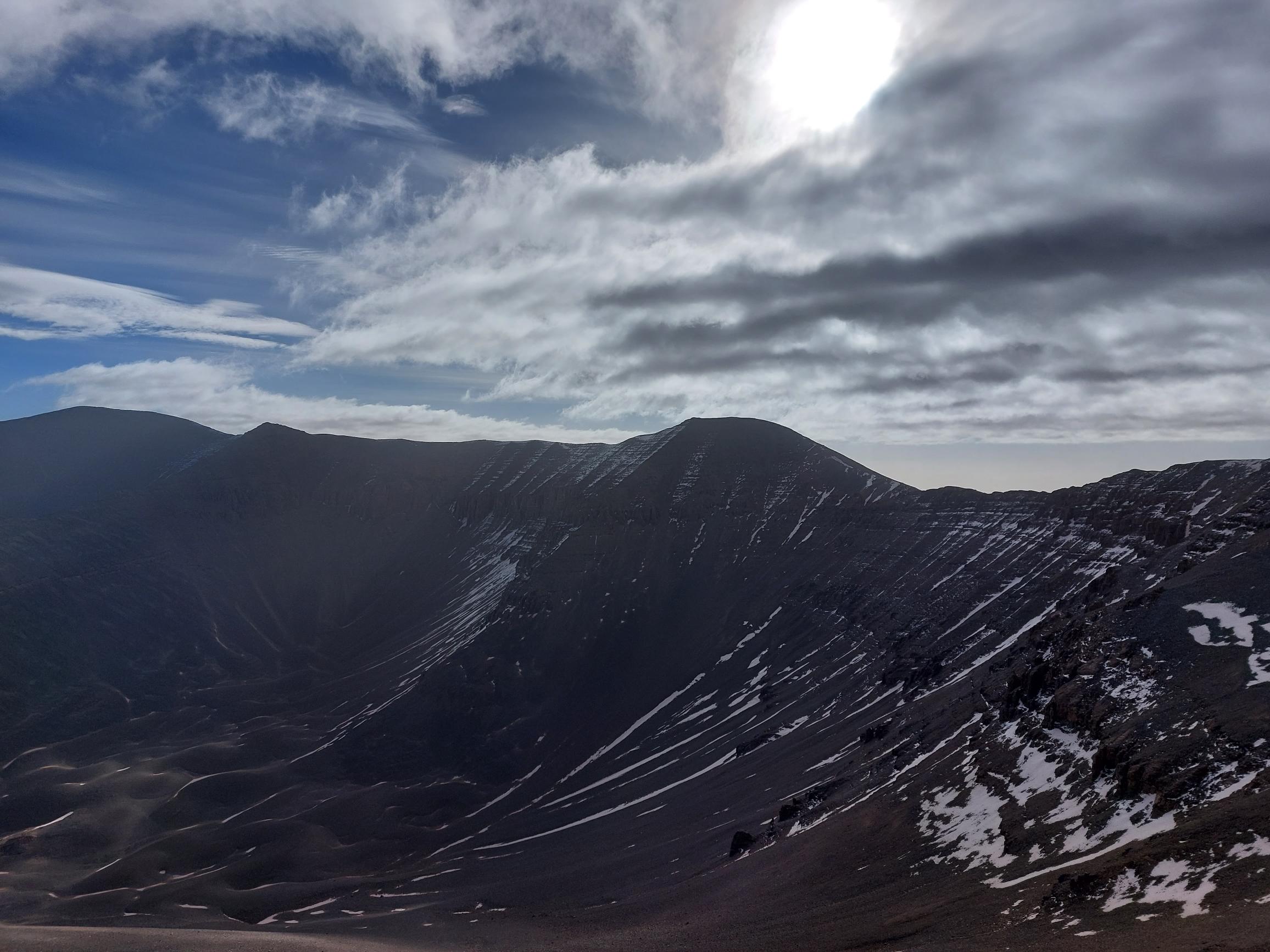
Safety and problems: All walks have inherent risks and potential problems, and many of the walks featured on this website involve significant risks, dangers and problems. Problems of any sort can arise on any walk. This website does not purport to identify any (or all) actual or potential risks, dangers and problems that may relate to any particular walk.
Any person who is considering undertaking this walk should do careful research and make their own assessment of the risks, dangers and possible problems involved. They should also go to “Important information” for further important information.
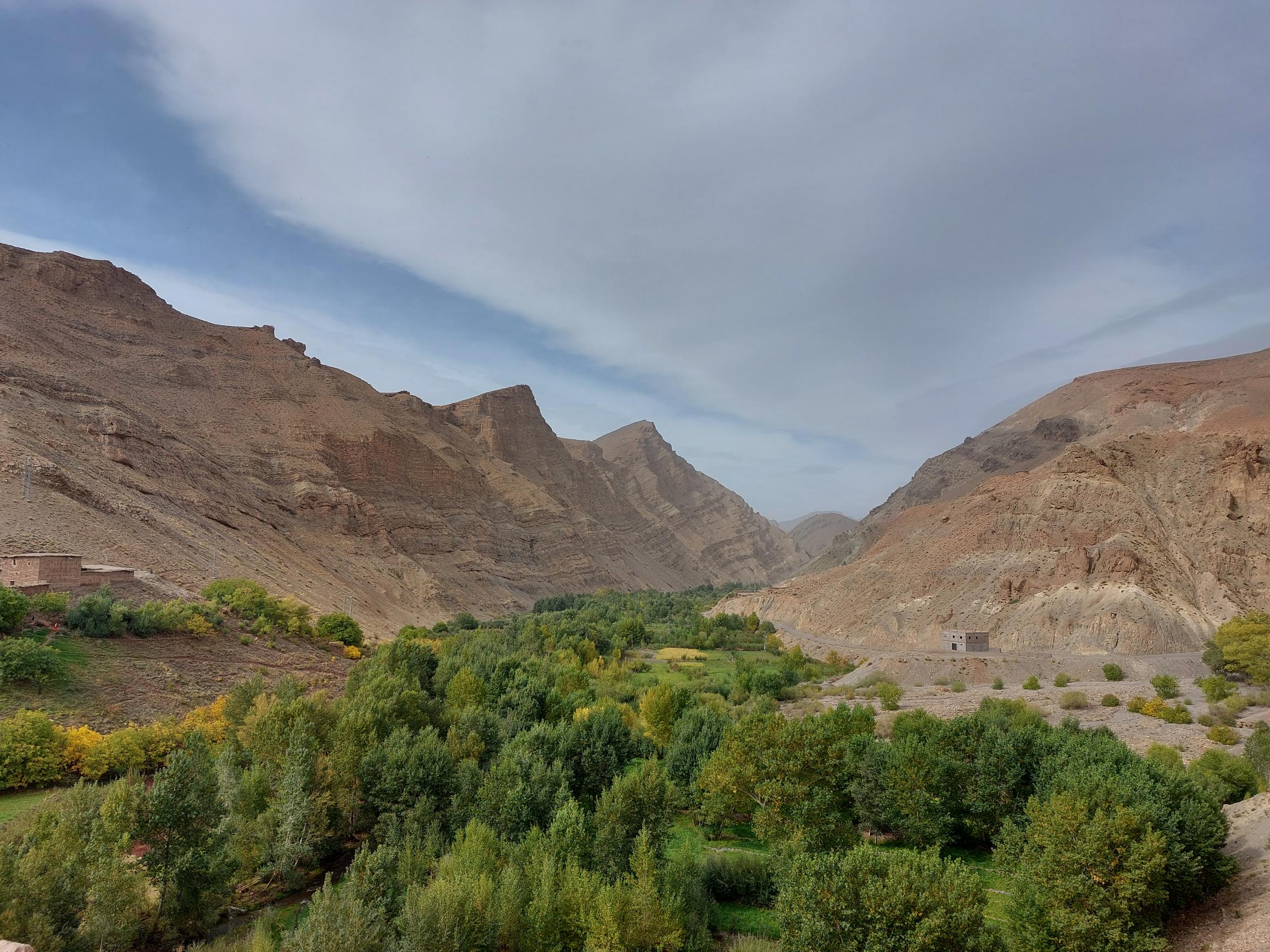
Anyone planning an expedition to this place should see further important information about this walk.
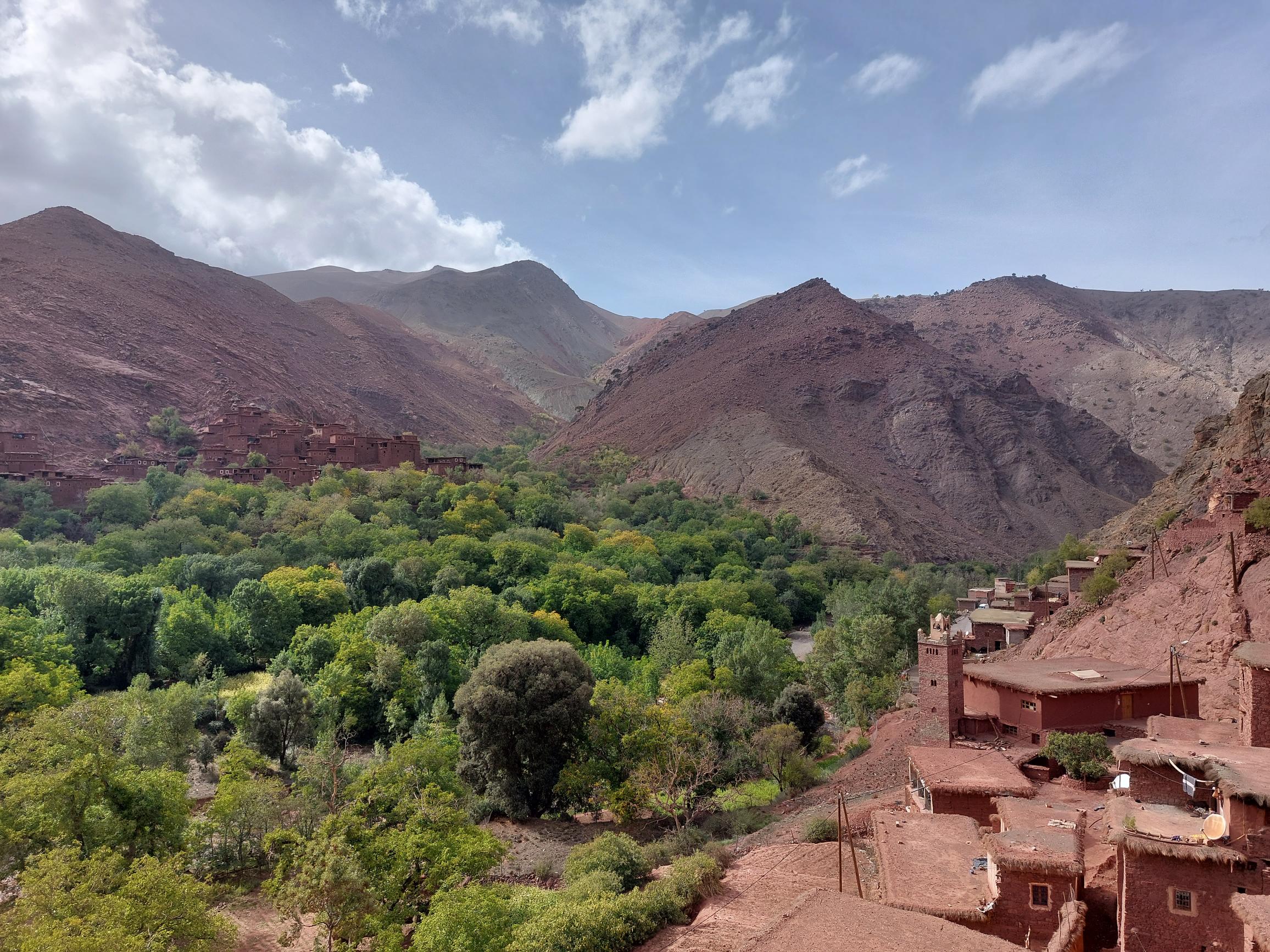
Responsible travel matters, a lot. How you travel will make a real difference - for better or worse. PLEASE consider this when making plans. Read more



